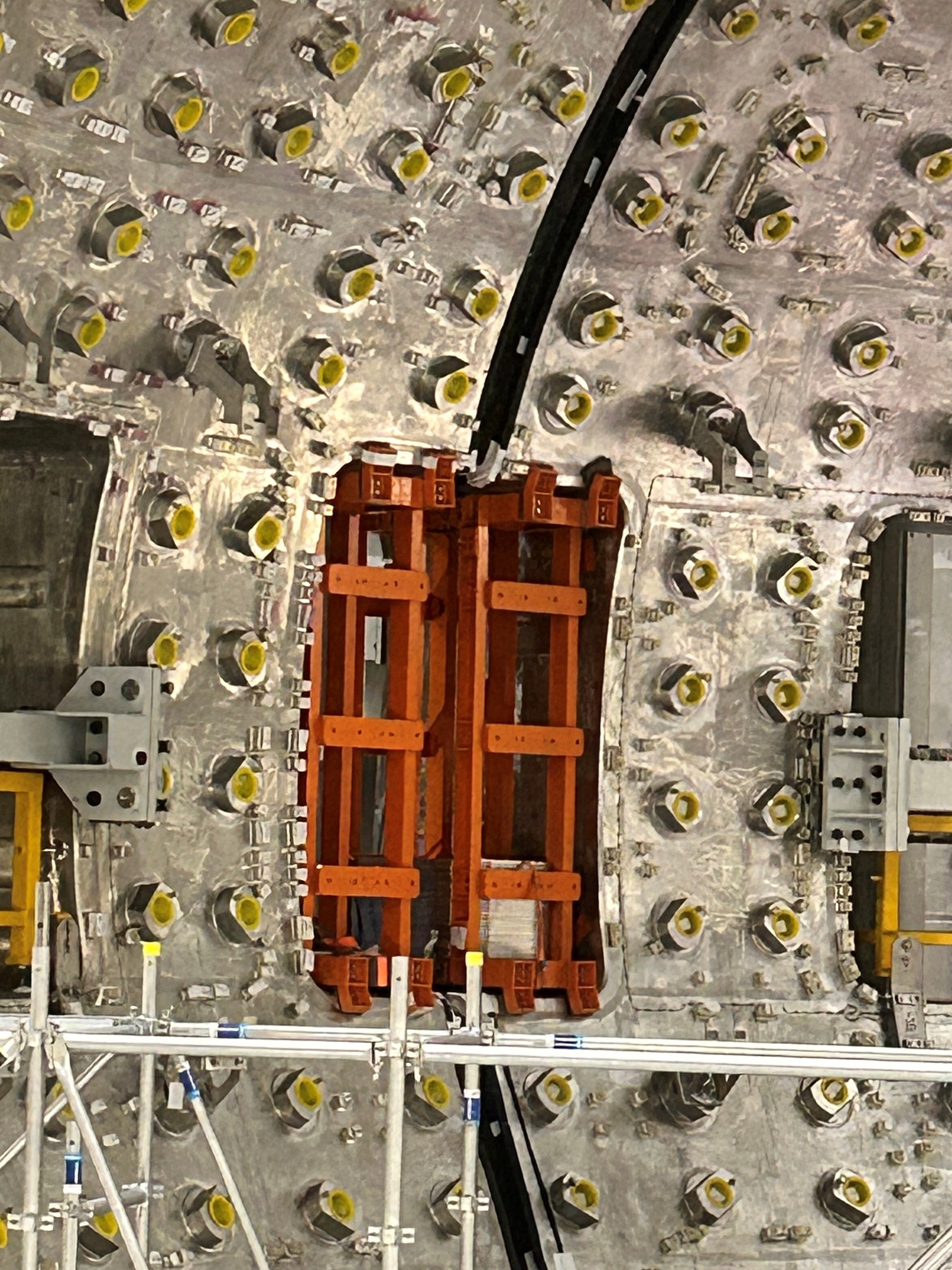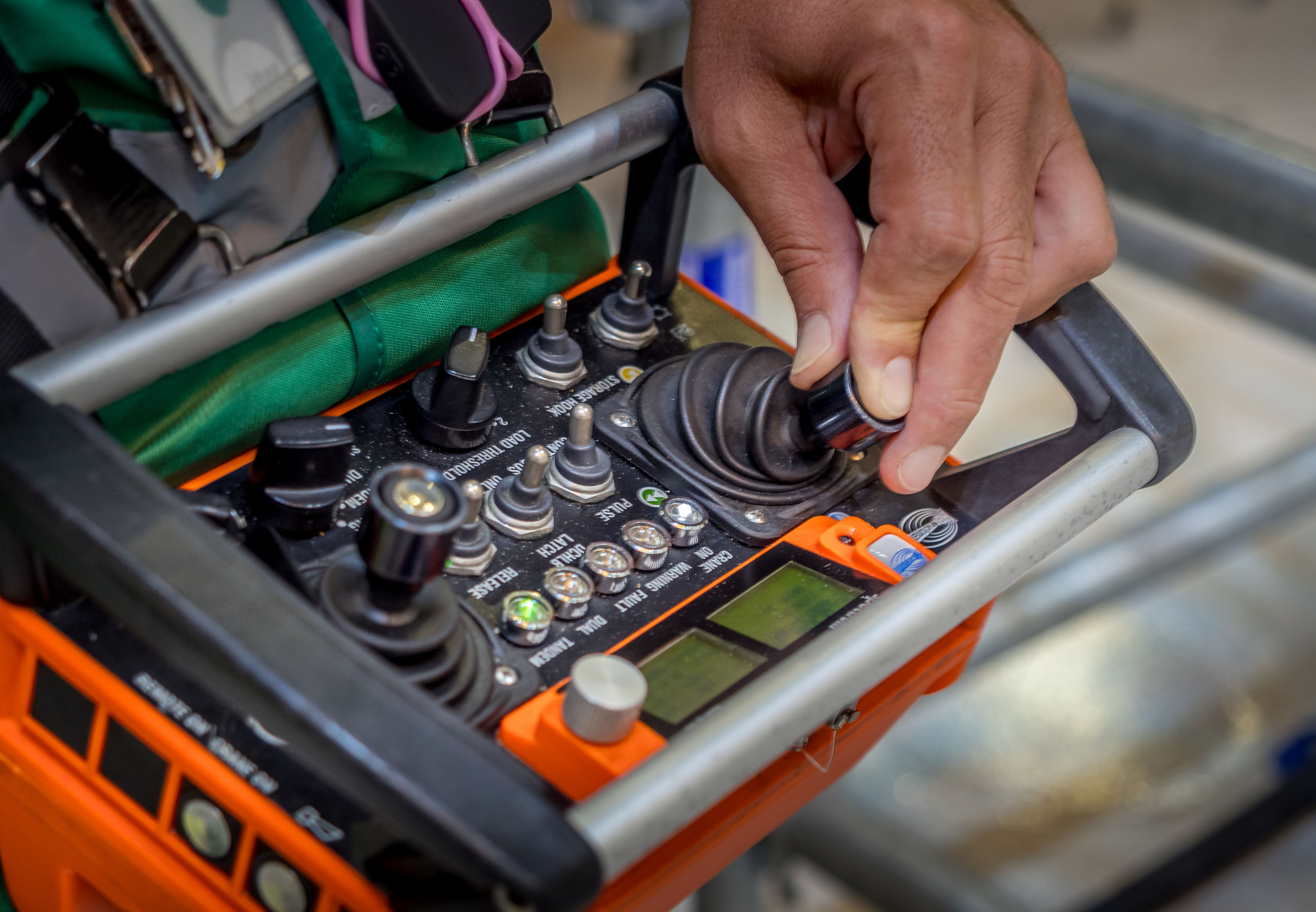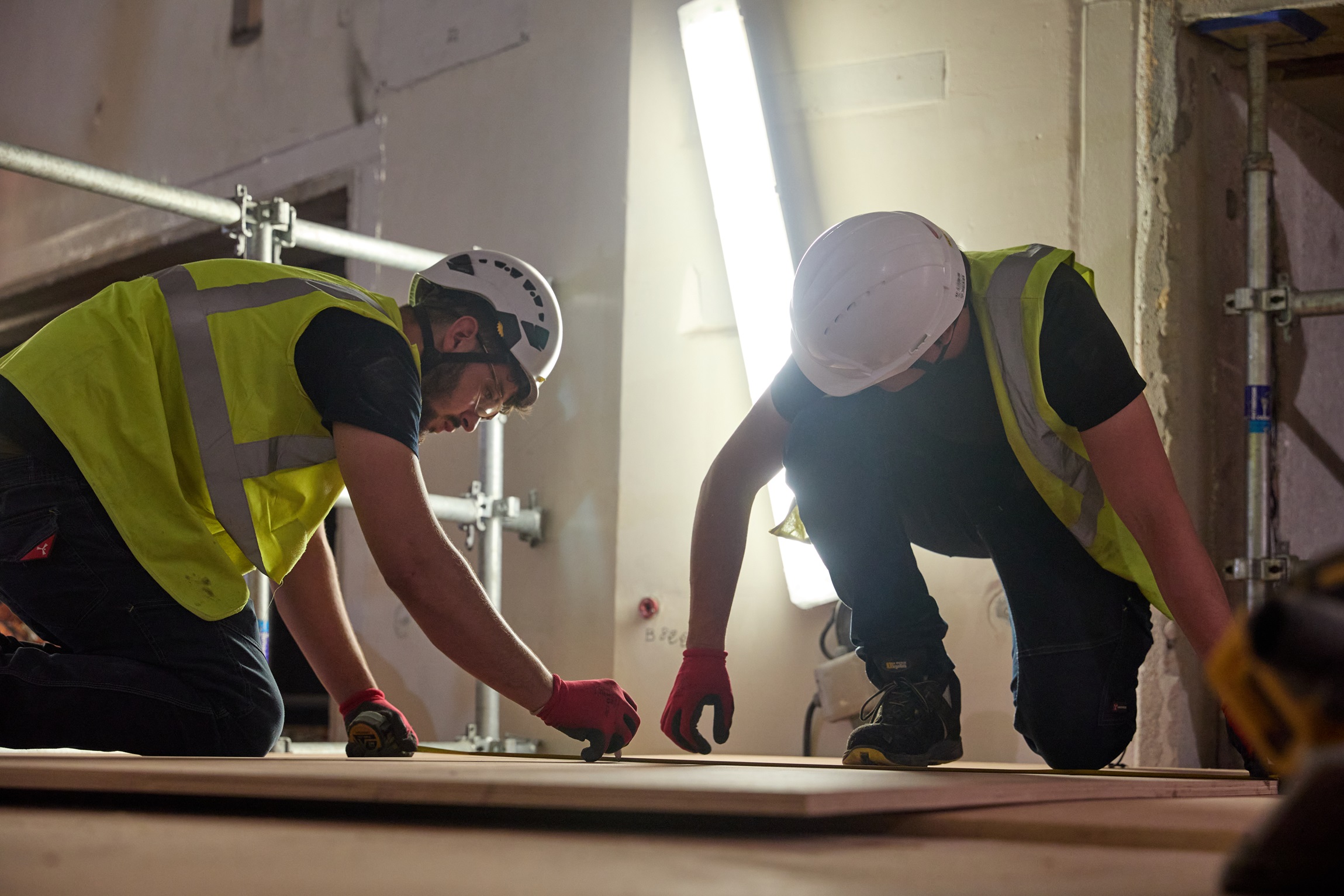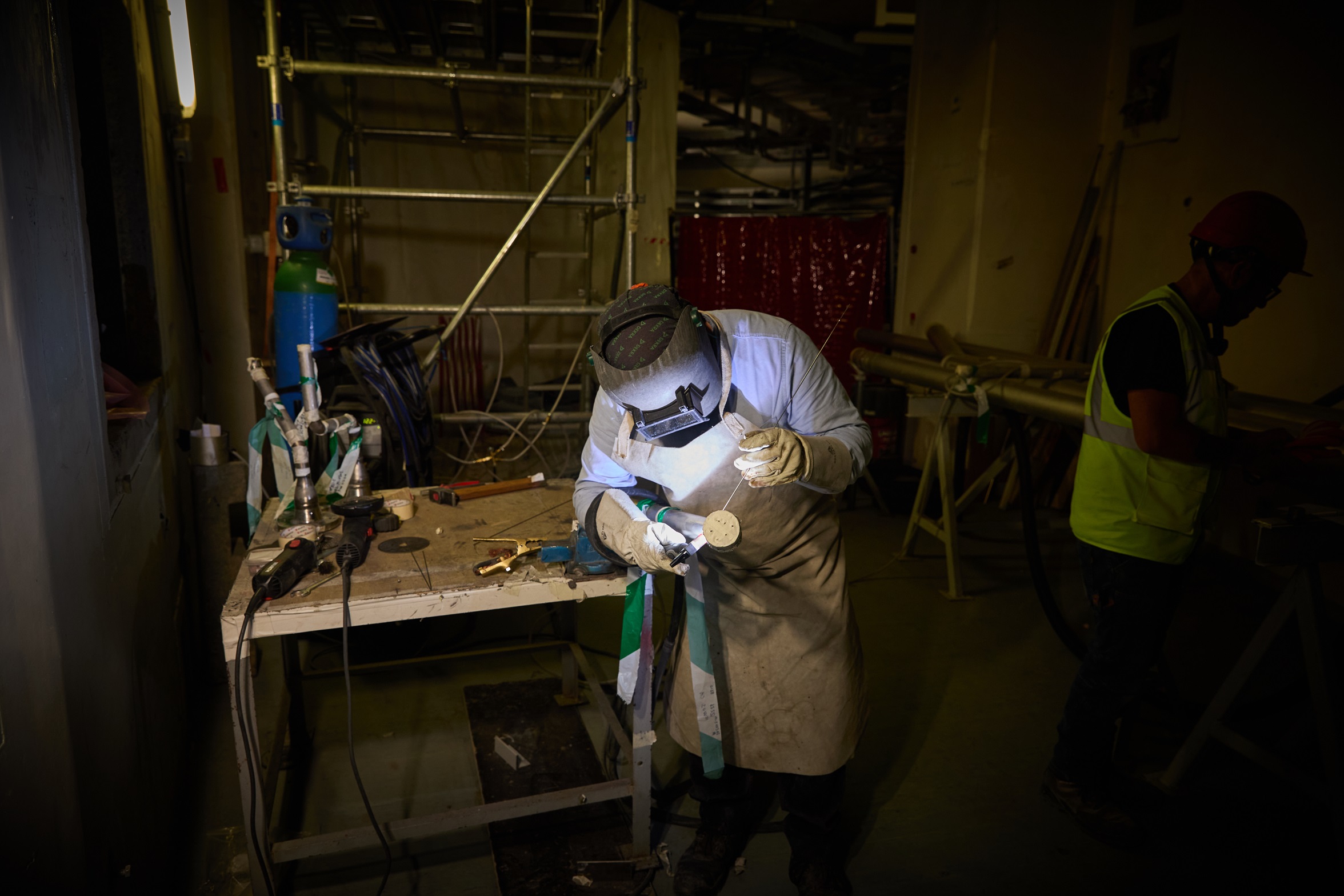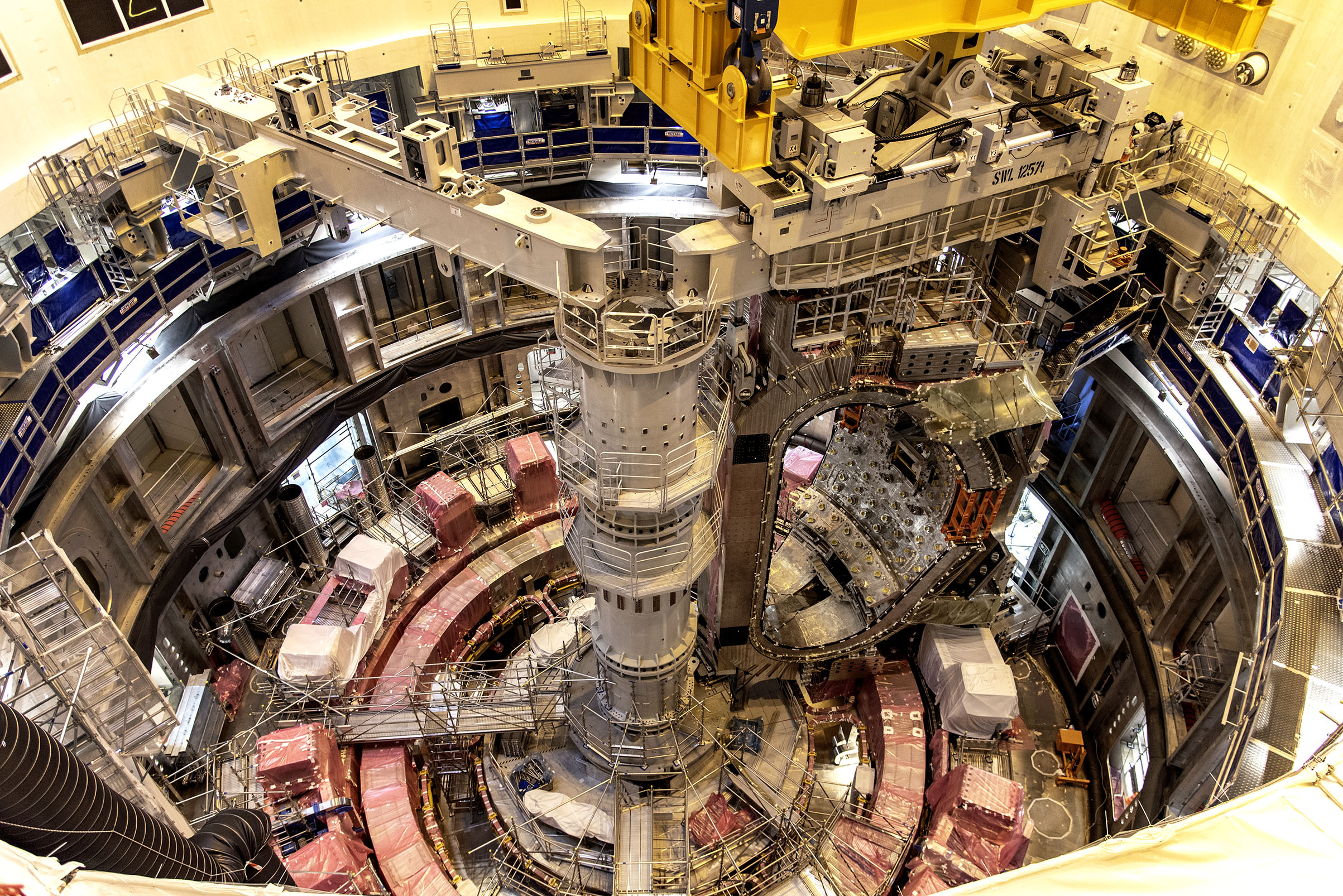"Construction" Gallery

Third module descending
2025-11-25 - This fisheye view captures sector module #5 as it is slowly lowered into the tokamak pit. To the left of the image is sector module #7, installed in April. A small section of sector module #6, against which the descending module will be aligned, is visible to the right of the central column. Sector module #6 was installed in June.


ITER plasma chamber: one-third in place
2025-11-25 - Sector module #5 is the third segment of the ITER vacuum vessel to be installed in the assembly pit in 2025. The successful operation was achieved overnight from 24 to 25 November.


Planned soon: a real test of magnet protection architecture
2025-11-25 - With the first test of a toroidal field coil in ITER's magnet cold test facility, engineers will have the opportunity to test the protection architecture of ITER’s superconducting magnets in high-energy conditions. The architecture uses two types of controllers to monitor thousands of signals related to helium flow, temperature, and pressure (slow controllers) and detect events like electrical arcs or quenches and trigger action (fast controllers).


Calling in another module
2025-11-19 - The doors of the former Cryostat Workshop open so that vacuum vessel sector module #4 (left) can be removed and transported to the Assembly Hall.


Sector moving
2025-11-19 - Vacuum vessel sector #4, delivered by Europe, is next in line to be mounted to assembly tooling in the Assembly Hall. On 19 November it was transferred into the building.


Sector #4 changes hands
2025-11-14 - All smiles: the SIMANN team (SIMIC + Ansaldo Nucleare) has completed all preparatory work on vacuum vessel sector #4, which was delivered by Europe last May. The sector is ready to be integrated into the sector module assembly line in the Assembly Hall.


Liftoff
2025-11-04 - Within the grasp of a bespoke lifting tool, a 110-tonne superconducting magnet for the central solenoid begins its ascent to the top of the stack where it will join four others.


Landing
2025-11-04 - The fifth independent central solenoid is about to be installed at the top of the tower stack.


Central solenoid: another module lifted to the stack
2025-11-04 - The penultimate module of the central solenoid stack is lifted into place on 4 November. One more of these superconducting modules will bring the tower-like central magnet of the ITER machine to its full height.


Waiting lid
2025-11-03 - This large lid is part of the cryochamber that will be used to test a selection of ITER superconducting magnets at the temperature of -269 °C (4 K). It waits on temporary supports for the start of commissioning activities.


Tokamak cooling water
2025-11-03 - Two families of pipe bundles for the tokamak cooling water system (TCWS) have been positioned in this L3 bioshield opening above the machine. In all, there are 18 bioshield openings reserved for TCWS piping.


Pipe bundle into sleeve
2025-11-03 - At the L3 level of the Tokamak Building, pipe bundles are inserted into waiting sleeves in the bioshield. The sleeves are part of "penetration assemblies" that seal the openings in the bioshield wall while allowing equipment to pass through to the tokamak.


Inside the tokamak pit
2025-10-31 - Workers look small against the backdrop of the huge ITER vacuum vessel. Two of nine sector modules have been installed and a third is expected later this month.


Working at height
2025-10-28 - Looking down at a sector module—one-ninth of the plasma chamber built from two toroidal field magnets (thickest steel component), thin thermal shield panels, and a vacuum vessel sector (double-walled, with walls outlined in black tape).


Assembly arena
2025-10-28 - The ITER tokamak pit, where the assembly of the ITER machine is underway. Around the top, near the rim, are arrival pipes for cooling water.


A temporary stop
2025-10-06 - The 330-tonne customized cryostat manufactured in China for the ITER magnet cold test facility is brought inside after delivery. Soon, it will rejoin the other components of the test bench for facility commissioning.


To be connected
2025-10-01 - Principal pit construction manager Mathieu Demeyere lifts the plastic cover that protects the interface between the thermal shield panels of the two sector modules in the pit. The splice plates connecting them will fit onto the protruding bolts visible at the centre of the image.

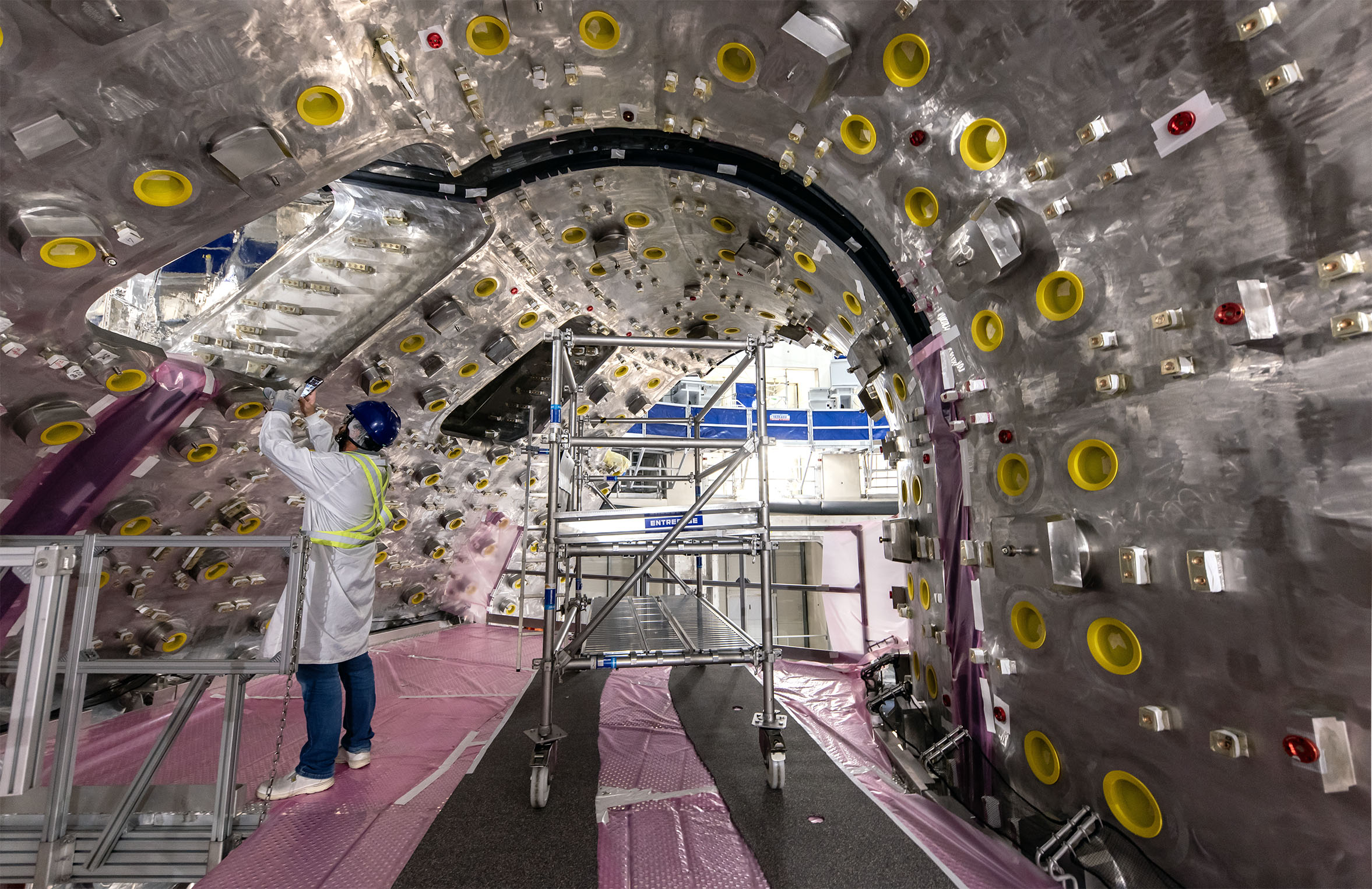
"Bosses" required
2025-10-01 - Diagnostics systems will be connected to the plasma chamber by way of small “bosses” welded to the interior surface of the sector module. The large recesses protected by yellow plastic caps are for attaching the blanket modules.

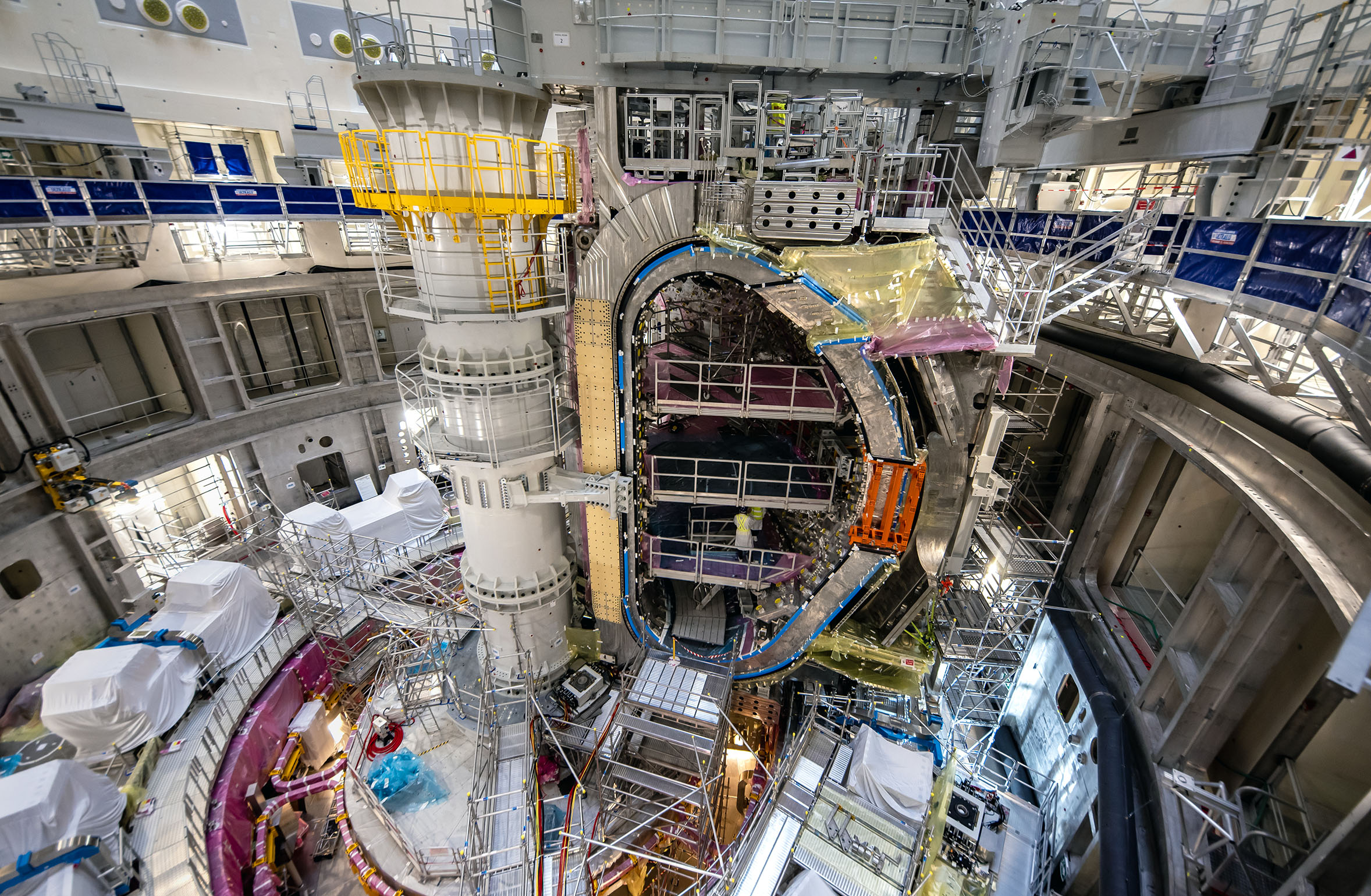
Working inside the plasma chamber
2025-10-01 - The “in-vessel staging” is clearly visible in this image. The four platforms, including one at the lower, divertor level, will provide a safe working space from which all areas of the vacuum vessel inner wall are accessible.

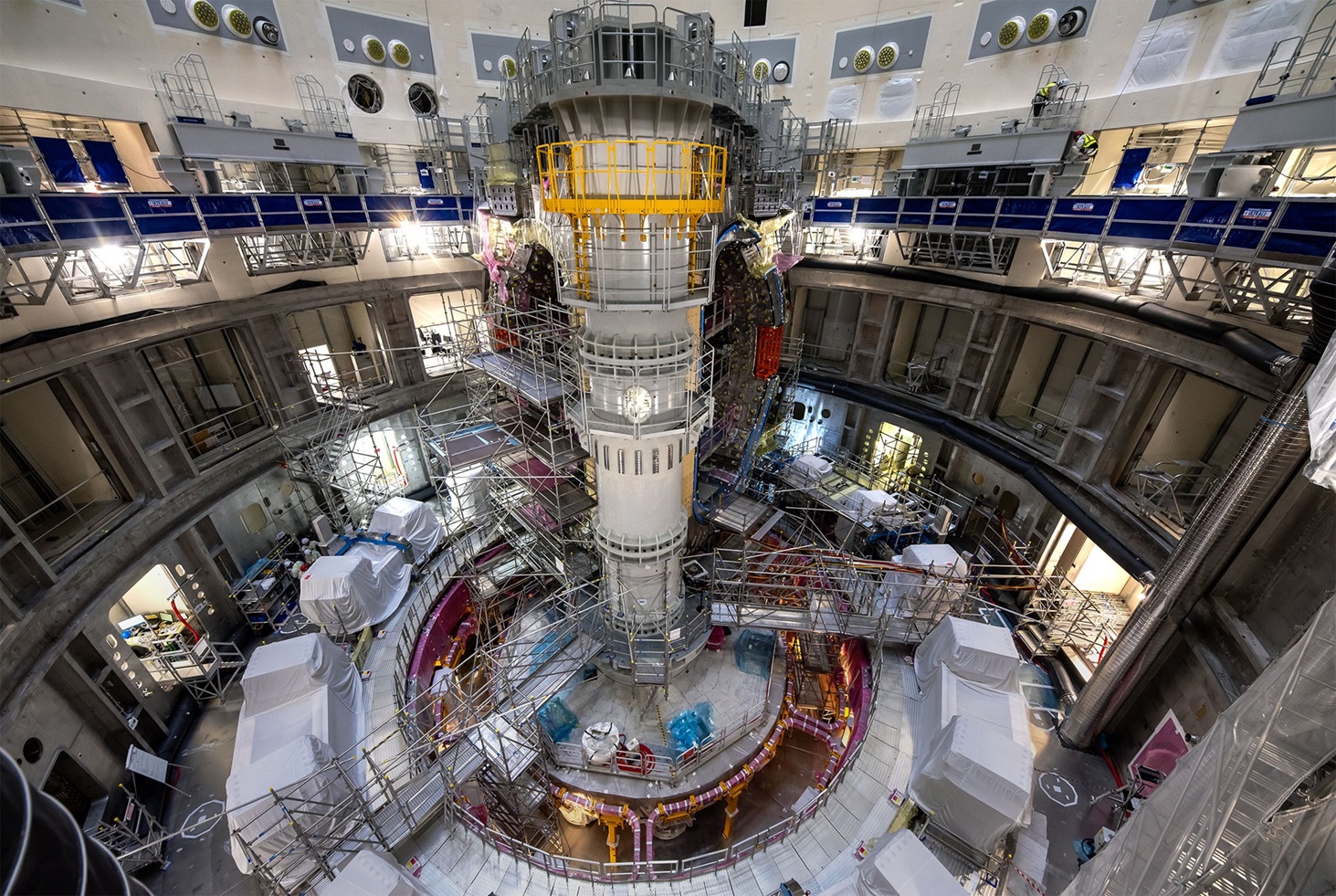
ITER's assembly pit
2025-10-01 - Looking into the 30-metre-deep, 30-metre-wide "assembly pit" where the ITER machine is coming together one unique component at a time.


Moving toroidal field coils
2025-09-29 - Handling operations are underway in the Assembly Hall to move 330-tonne D-shaped toroidal field coils to their rendezvous with sector #8. Once paired in tooling with its thermal shield and two toroidal field coils, sector #8 becomes sector module #8 and can be transferred into the tokamak pit.

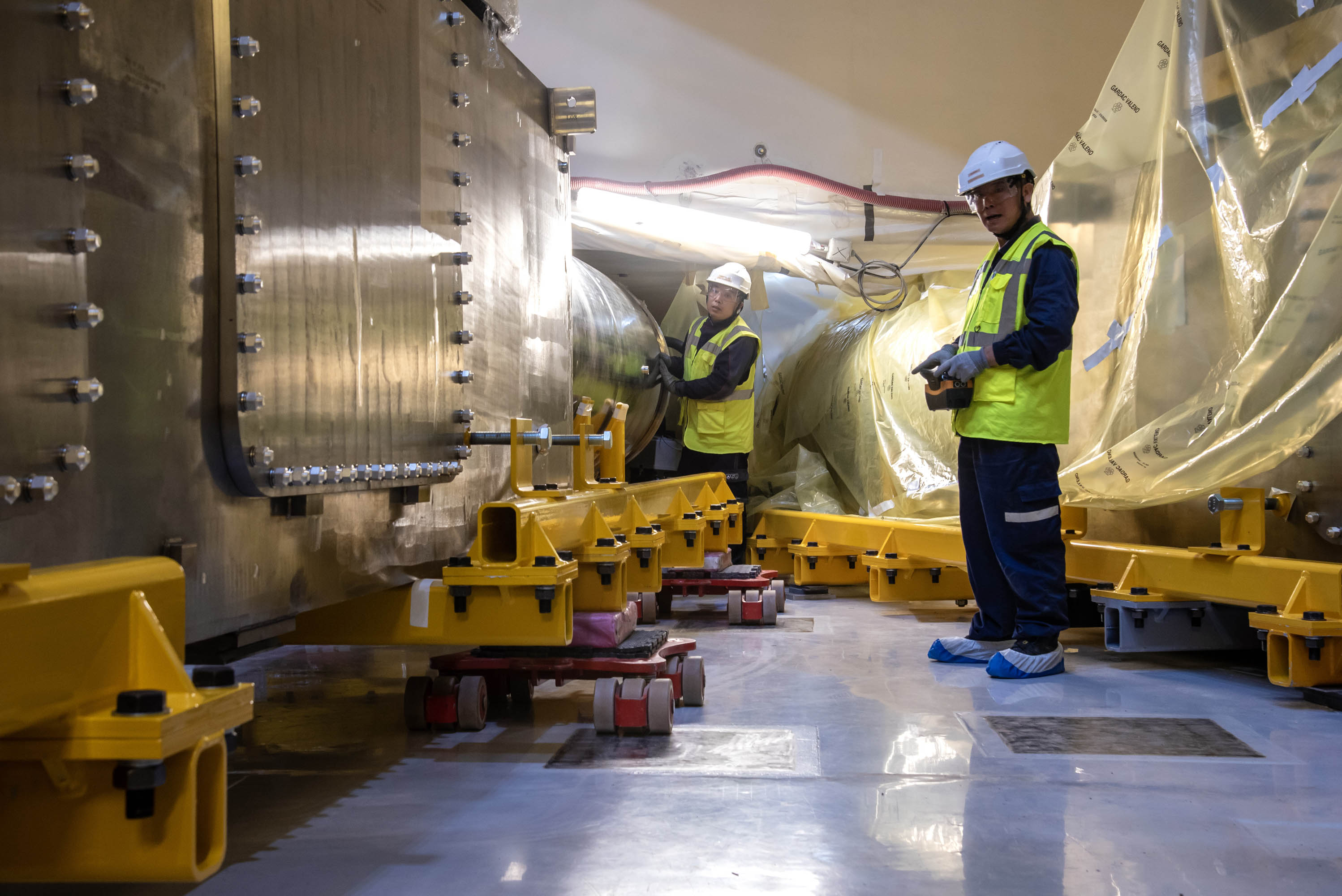
Last gallery component of the feeder system
2025-09-24 - The last coil termination box was installed in the Tokamak Building on 22 September. All gallery components of the magnet feeder system are now in place, with the exception of one coil termination box that has been “loaned” to the magnet cold test facility.

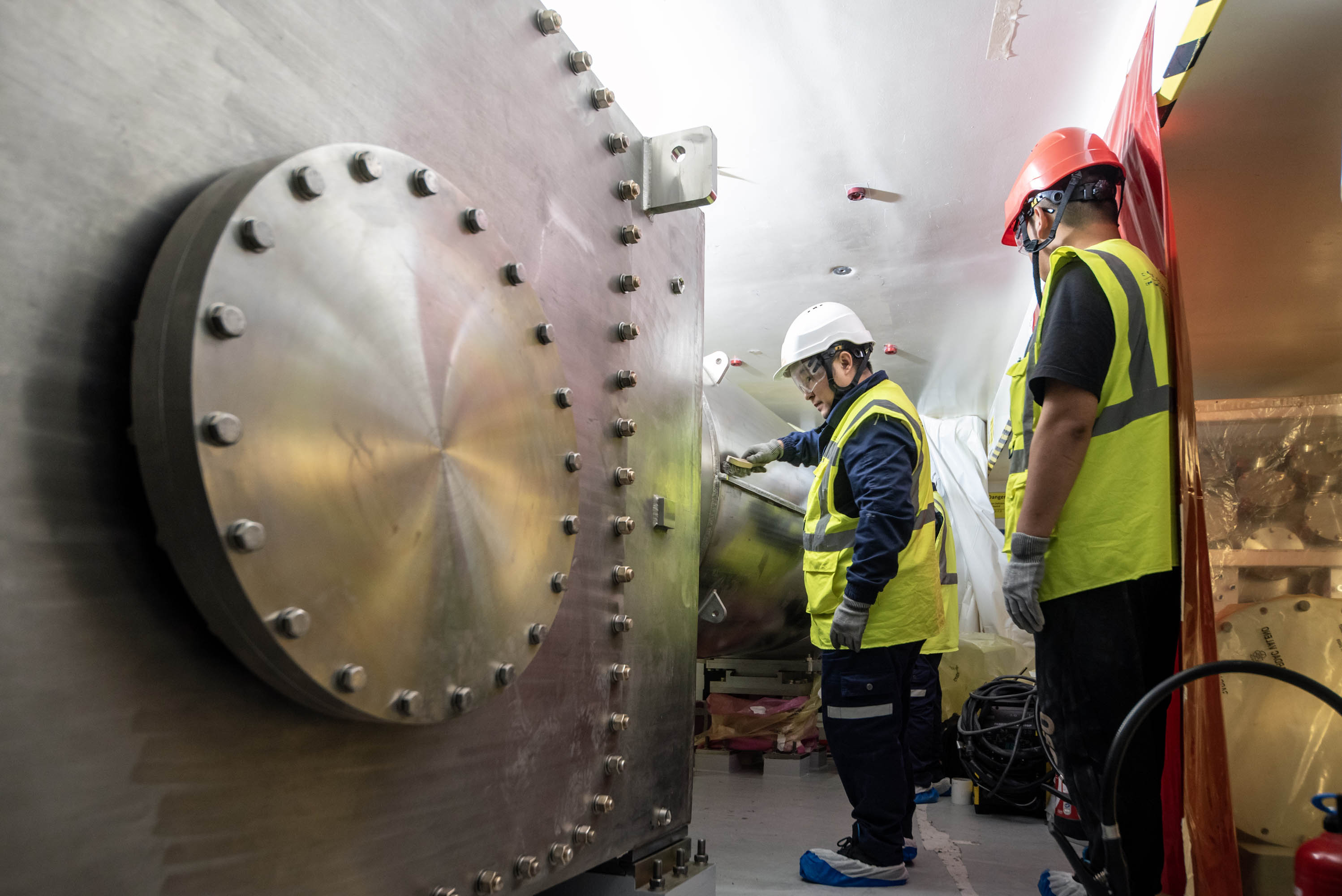
Time for cleaning
2025-09-24 - Final cleaning is underway on the completed feeder connection between a coil termination box (left) and a cryostat feedthrough (right).

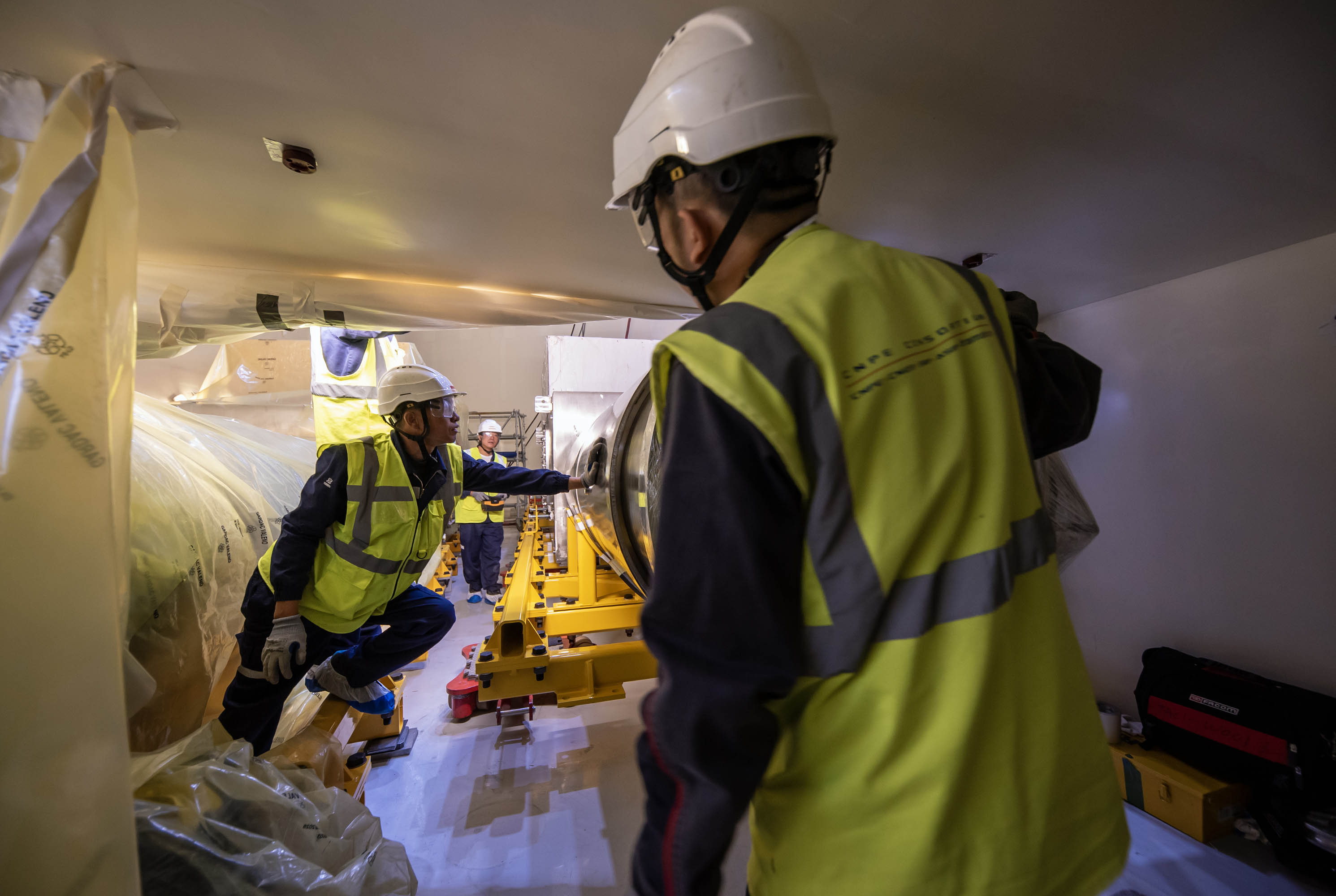
Last coil termination box
2025-09-24 - Workers position the last major feeder component in the Tokamak Building, a coil termination box.


Feeders: main busbar joint
2025-09-24 - Deep inside a Tokamak Building gallery, two feeder elements are being connected. One of the most complex tasks? The creation of a superconducting busbar joint (pictured).

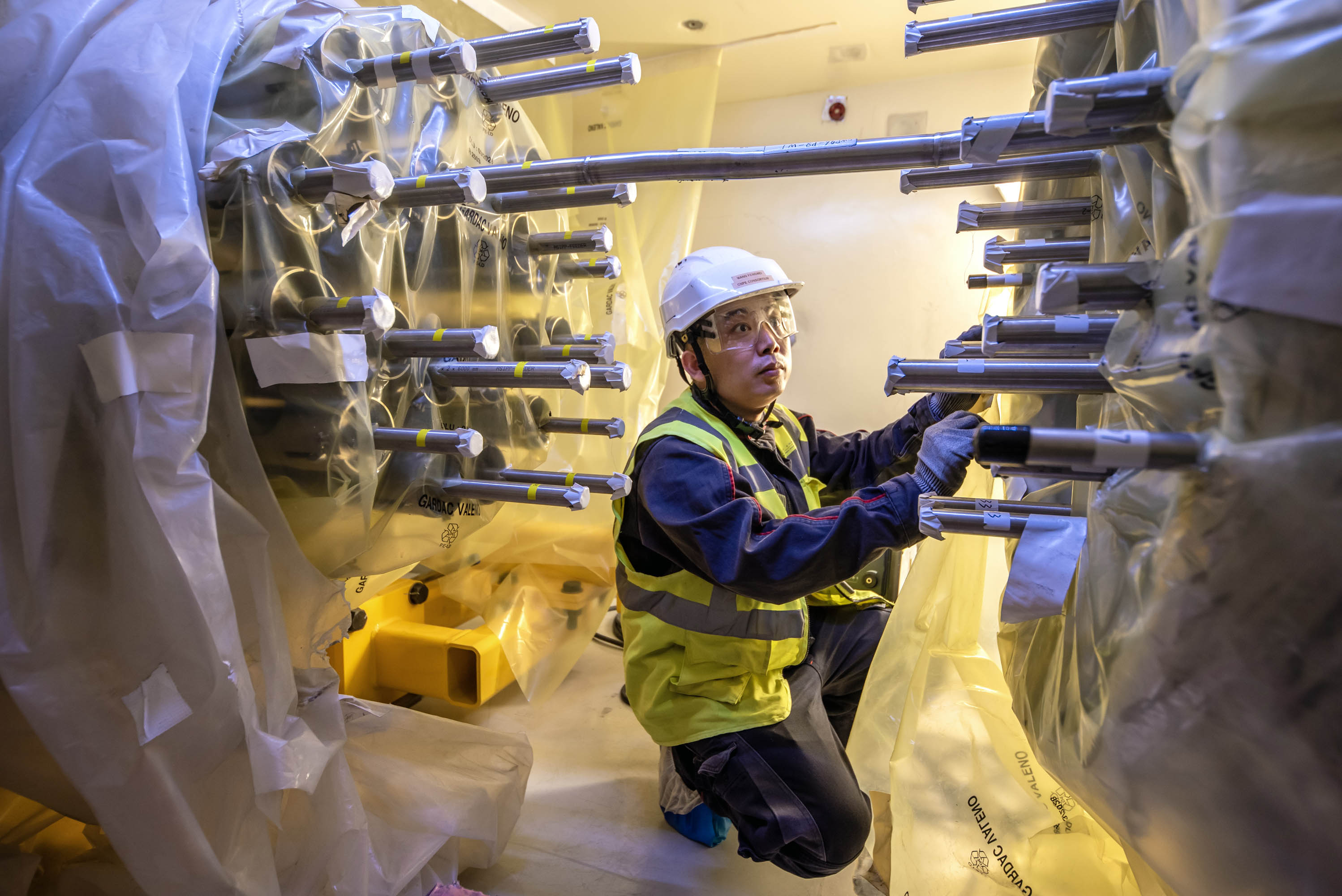
Creating feeder joints
2025-09-24 - The gallery components of a feeder—coil termination boxes (example, right) and cryostat feedthroughs (example, left)—must be joined. In this photo, a cooling pipe has been aligned.

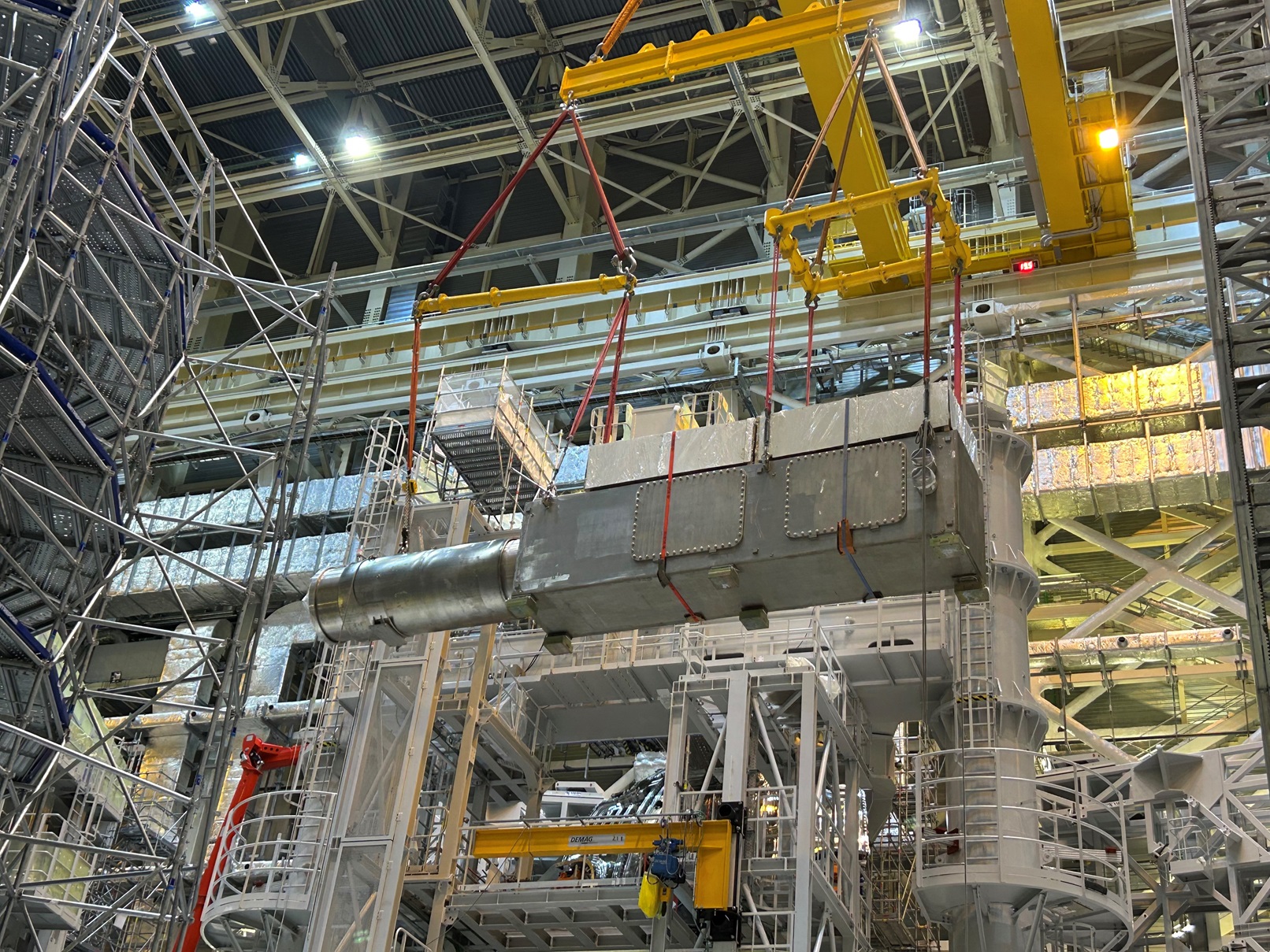
Look out! Feeder component travelling overhead
2025-09-22 - An element of the magnet feeder system is transported through the Assembly Hall and over the tokamak pit. Called a coil termination box, it will be the last feeder component to be installed in the concrete galleries of the Tokamak Building.

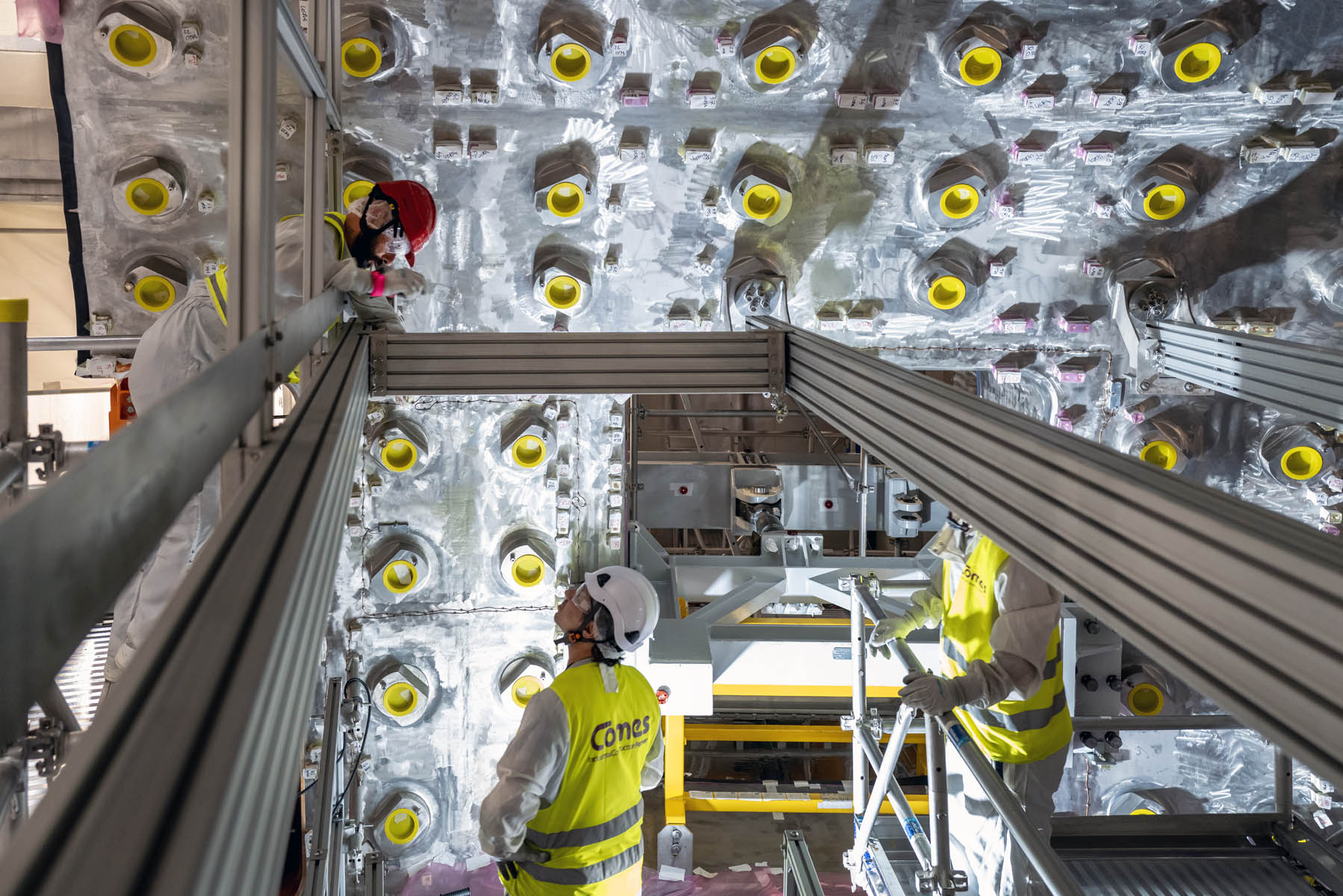
Lots to attach
2025-09-12 - There is a lot of work to be done inside the future plasma chamber, including the welding of supports for in-vessel diagnostic system connections, cable looms and sensors.


Safe, lightweight, modular
2025-09-12 - Aluminium staging is installed inside the vacuum vessel modules in the pit for safe and easy access to installation tasks.

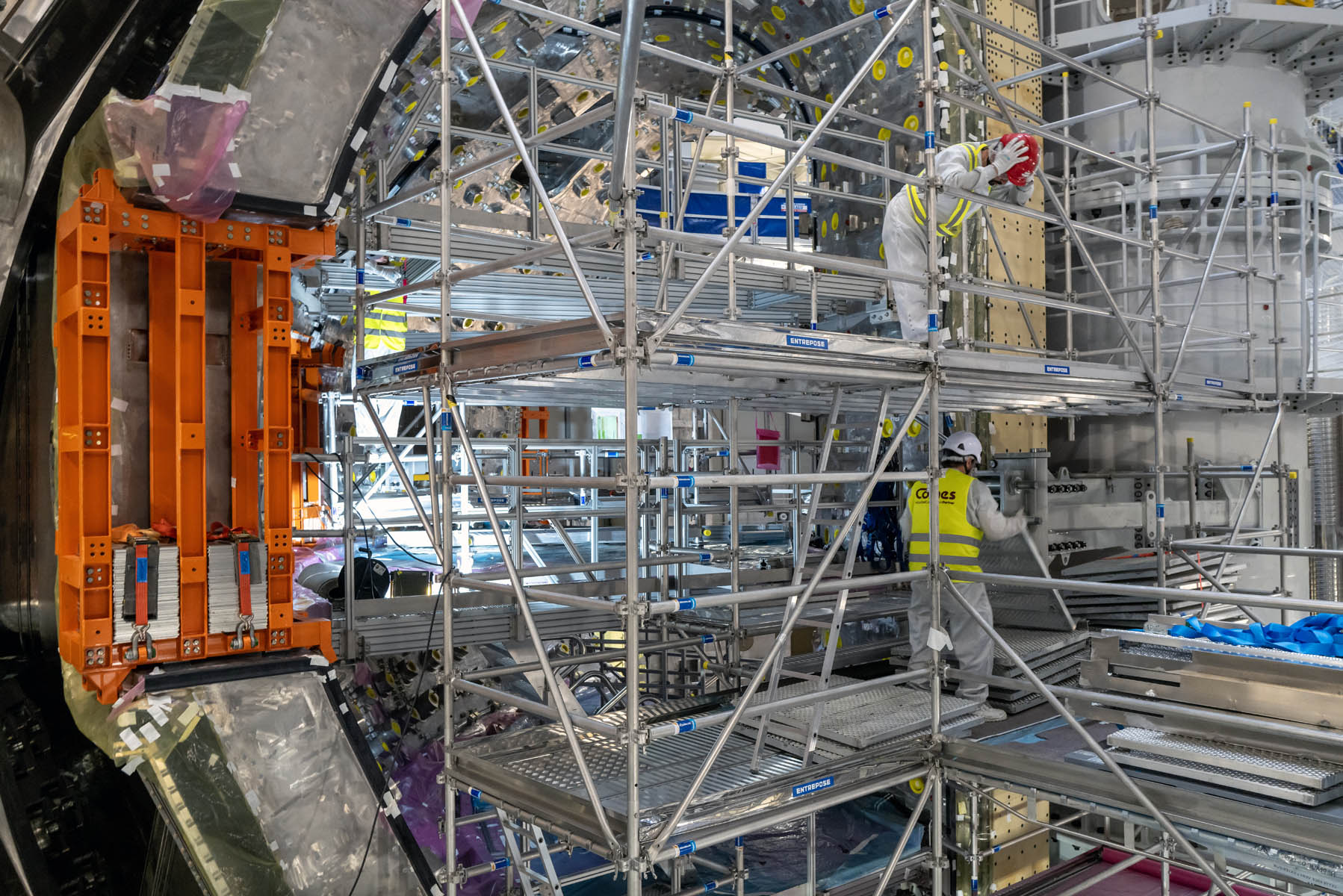
Inside the installed sector modules
2025-09-12 - Inside the sector modules in the pit, the teams are installing four levels of "flooring" to enable access to every part of the interior surface.

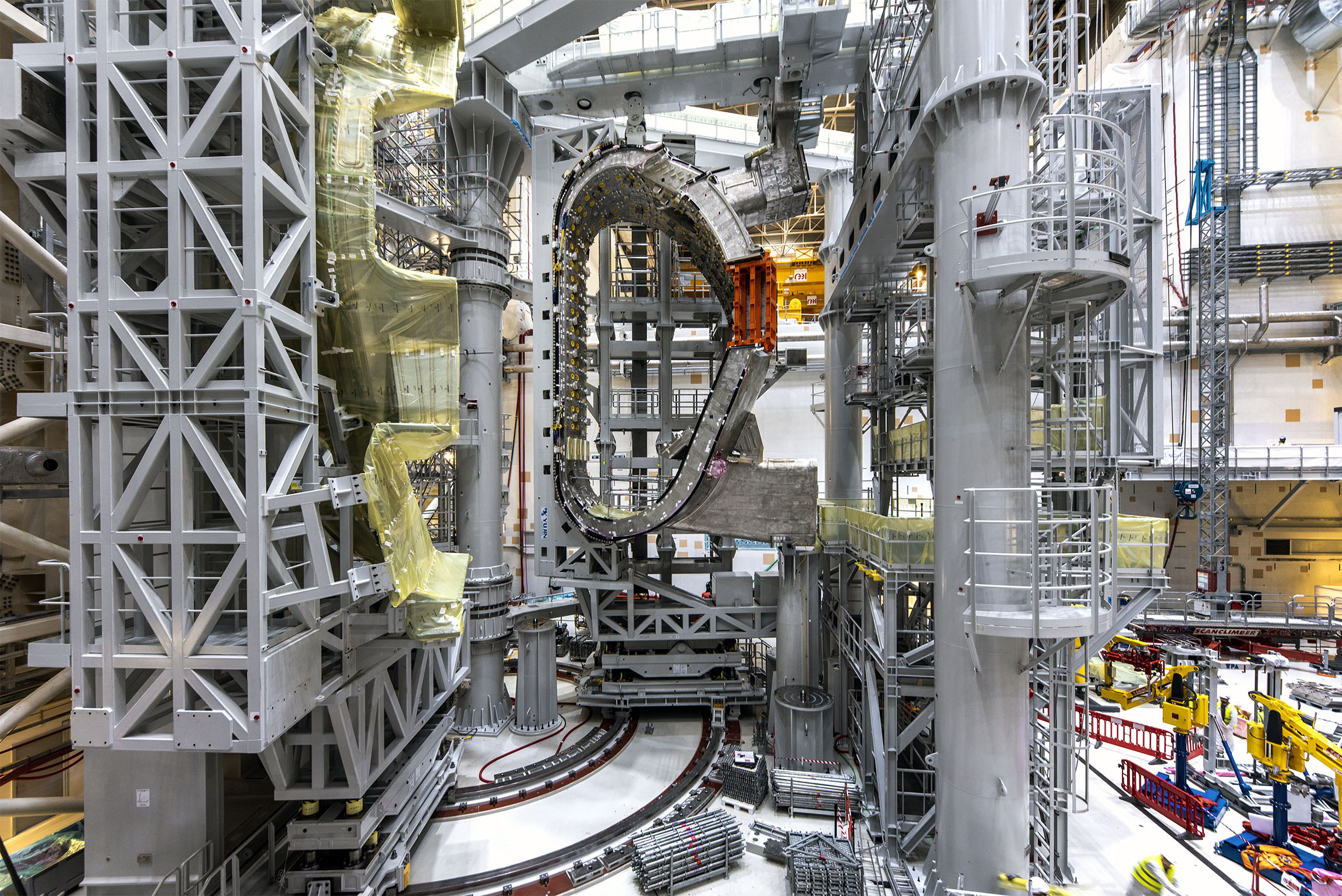
Another sector in tooling
2025-09-05 - Vacuum vessel sector #8 is now in vertical tooling in the Assembly Hall, occupying a tool that was vacated in June by a sector module that was moved into the tokamak pit.


The view with two sector modules
2025-09-04 - Looking down into the tokamak pit at two sector modules side by side, both supported by radial beams spreading the weight between the central column tool and the concrete wall. Sector module #6 is visible in this photo; sector module #7 is hidden.

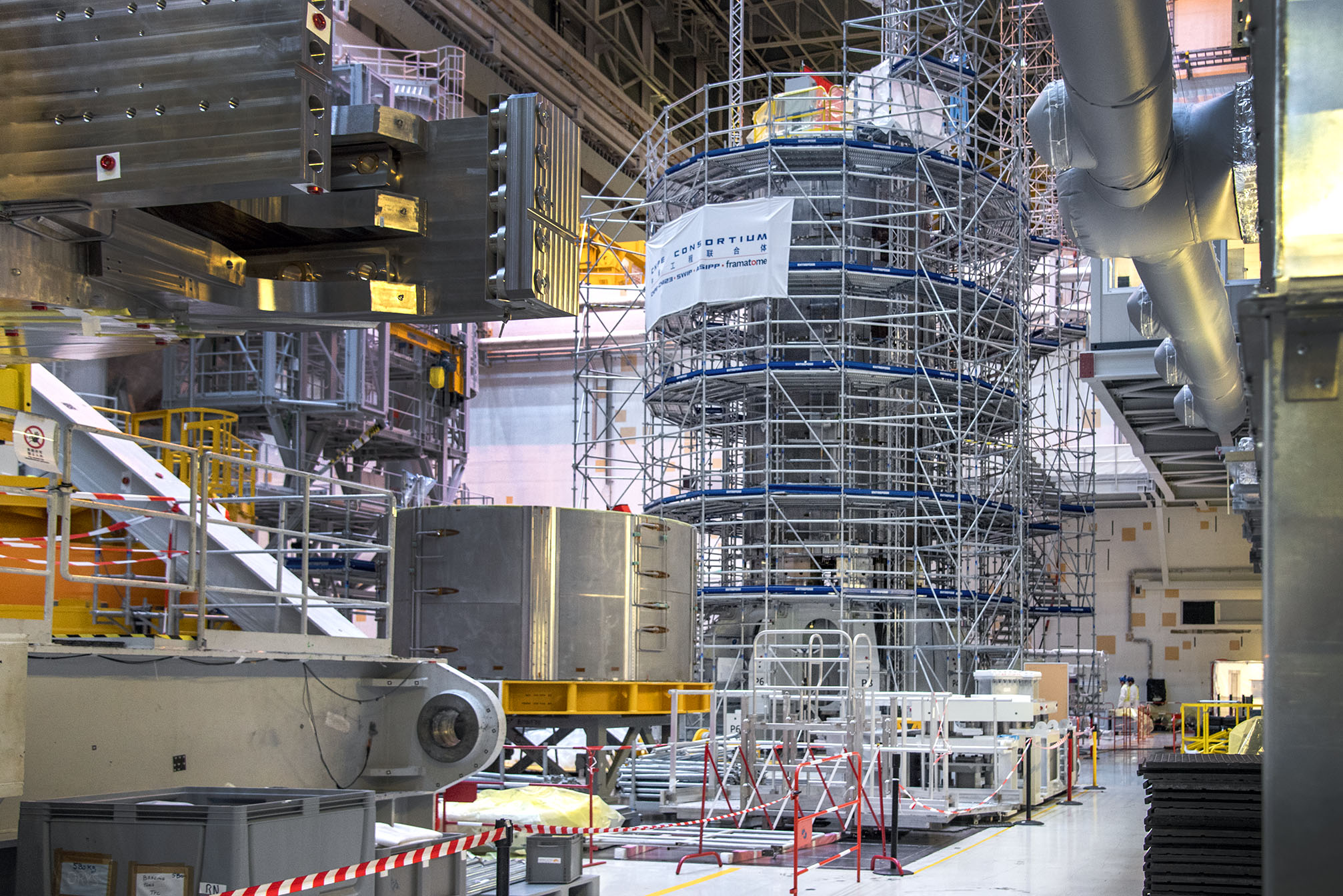
Tower growing
2025-09-04 - From its position in the centre of the machine, the tower-like central solenoid allows a powerful current to be induced in the ITER plasma and maintained during long plasma pulses. Four of the six coil packs, called modules, are currently stacked. A fifth is standing in the wings (photo, centre) and the sixth has just arrived in France from the US ITER manufacturer, General Atomics (California).

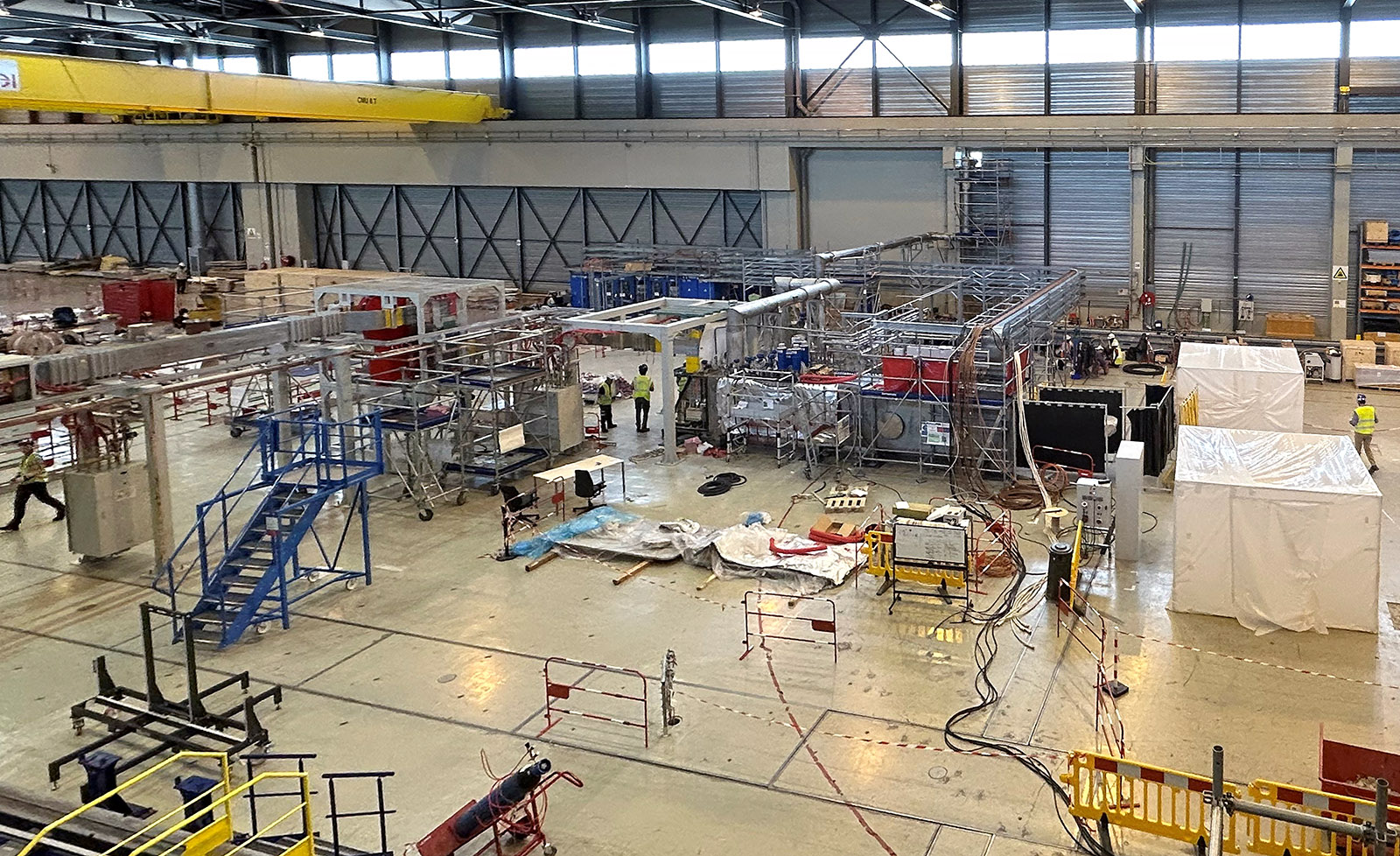
Cold test bench for magnets progressing
2025-09-04 - Different elements of the future magnet cold test facility are coming together (power supply, cryogenics, vacuum, instrumentation). The largest component is yet to come—the large cold chamber (cryostat) that is designed to receive D-shaped toroidal field coils as well as the smallest ring magnet, poloidal field coil #1 (PF1).

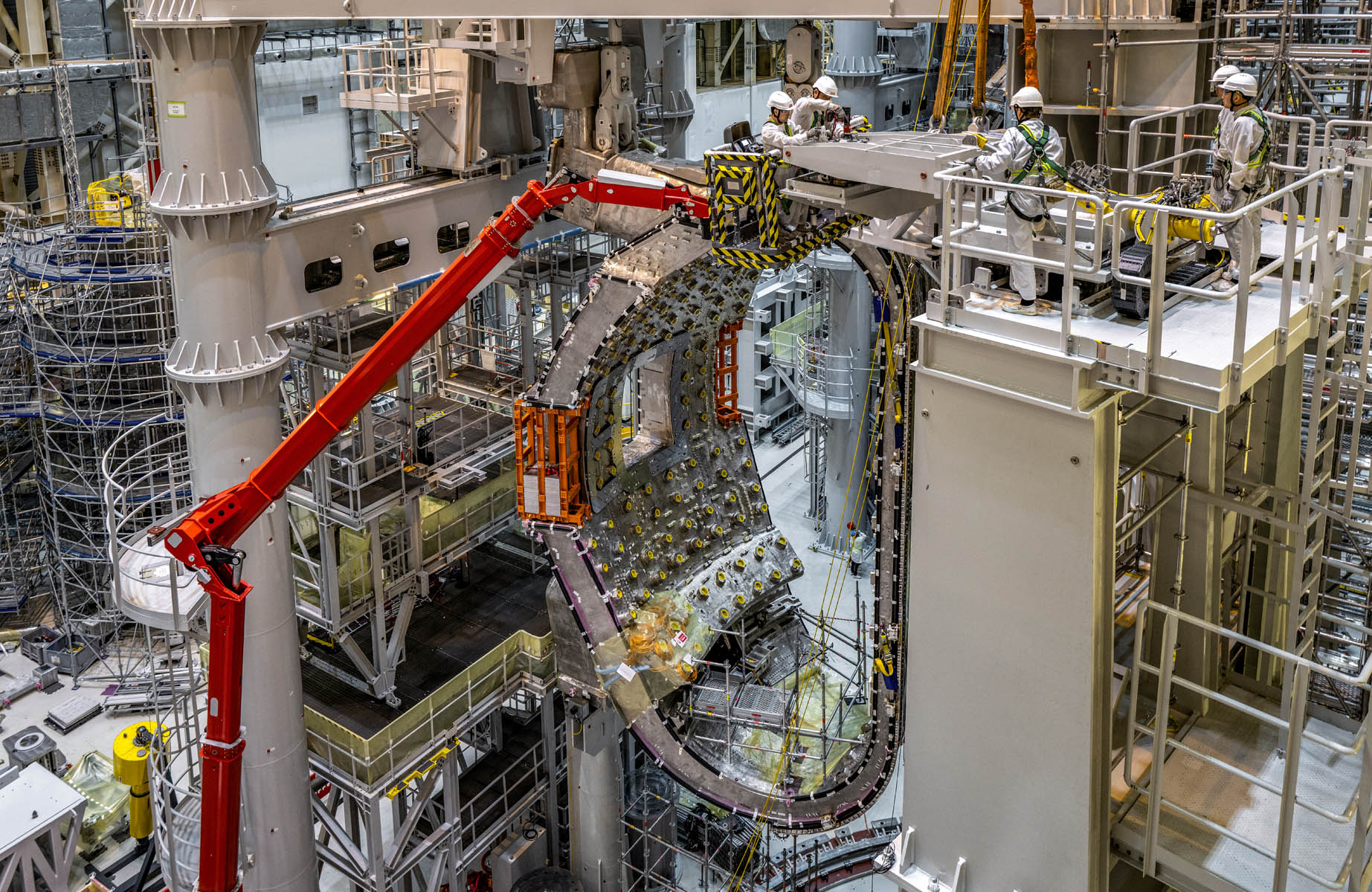
Constant use
2025-09-04 - Until all nine vacuum vessel sectors have been turned into sector modules by the addition of the thermal shield panels and two toroidal field coils, the standing tools in the Assembly Hall will be in constant use. Pictured is sector #8, newly arrived and not yet assembled with the other constituent parts of a module.

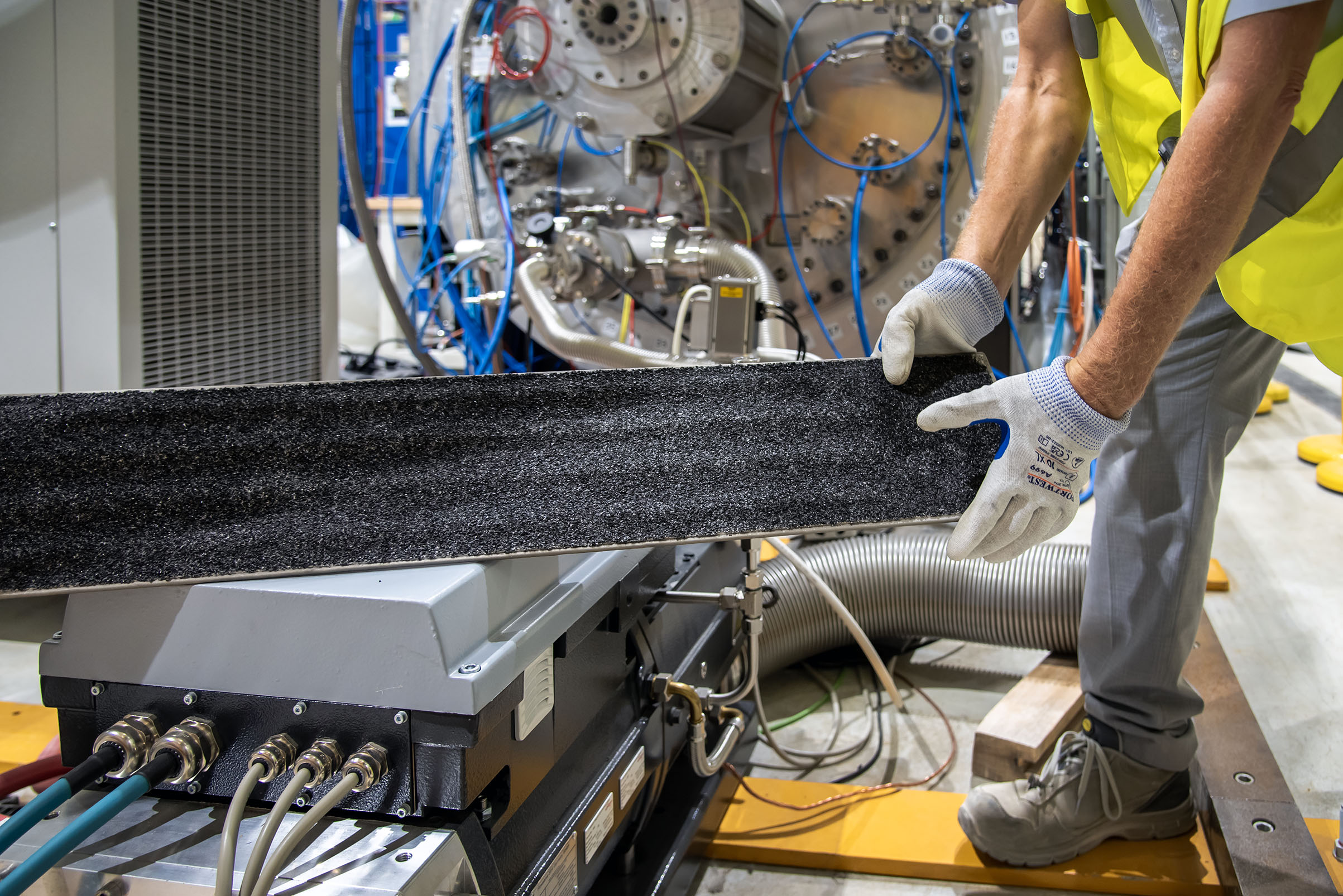
Coconut is important to the cryopumps
2025-09-03 - ITER's cryopumps will extract the helium ash generated by fusion reactions by trapping the helium particles. Critical to their success is the very fine carbon matrix made from finely ground coconut shells that coats the cryopanels in the pumps, as seen in this picture.

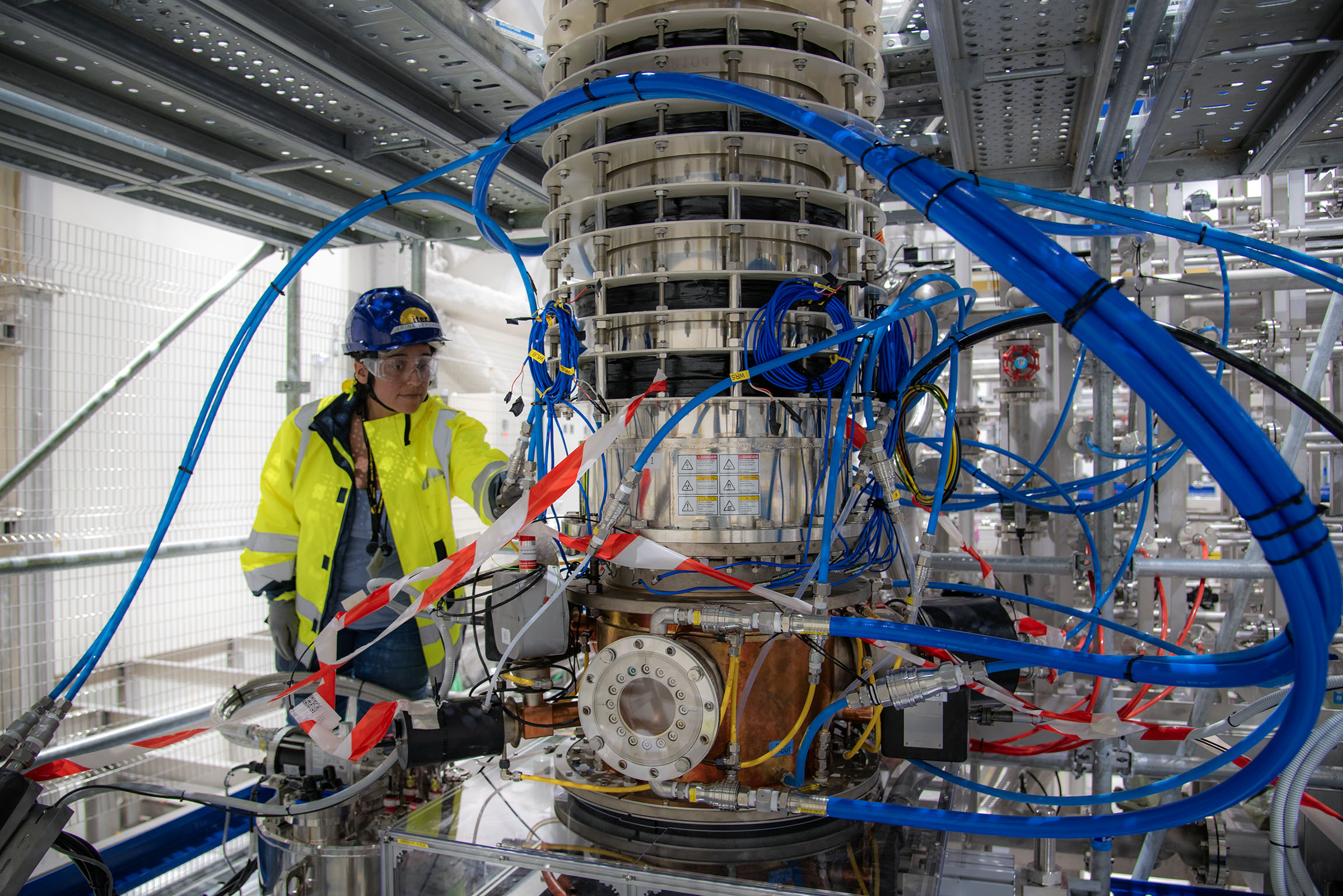
First gyrotron ready for commissioning
2025-09-01 - Construction Coordination Officer Karina Vergara stands next to the 2.7-metre-tall gyrotron delivered by Japan and installed this summer on Level 3 of the Radiofrequency Building. Power supplies are connected and commissioning tests are slated to begin later this month.

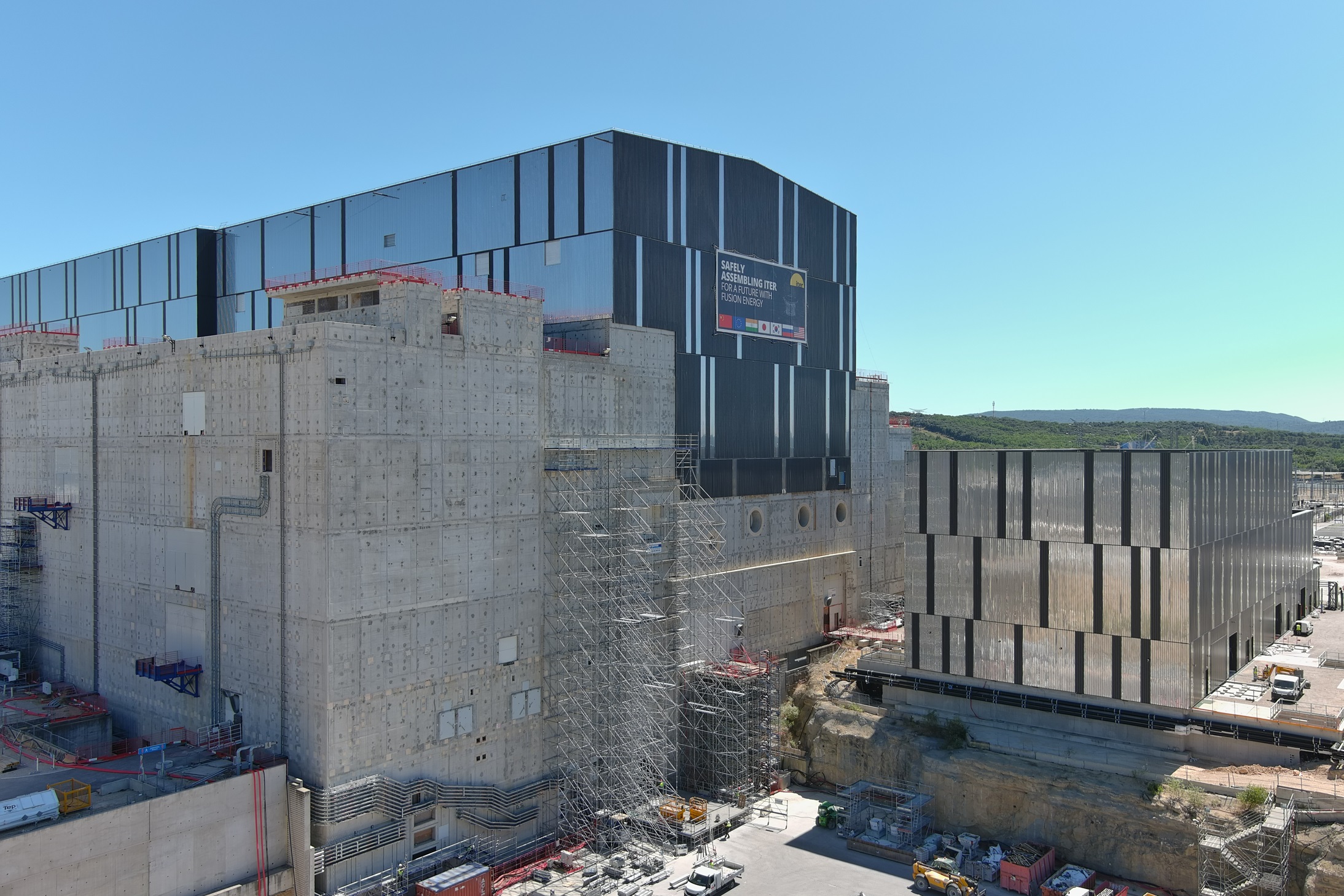
A ladder up the facade
2025-08-07 - Extensive scaffolding has been installed on the facade of the Tokamak Complex to allow contractors to install pipework. The scaffolding structure is made from nearly 4,000 tubes and stands 40 metres high.

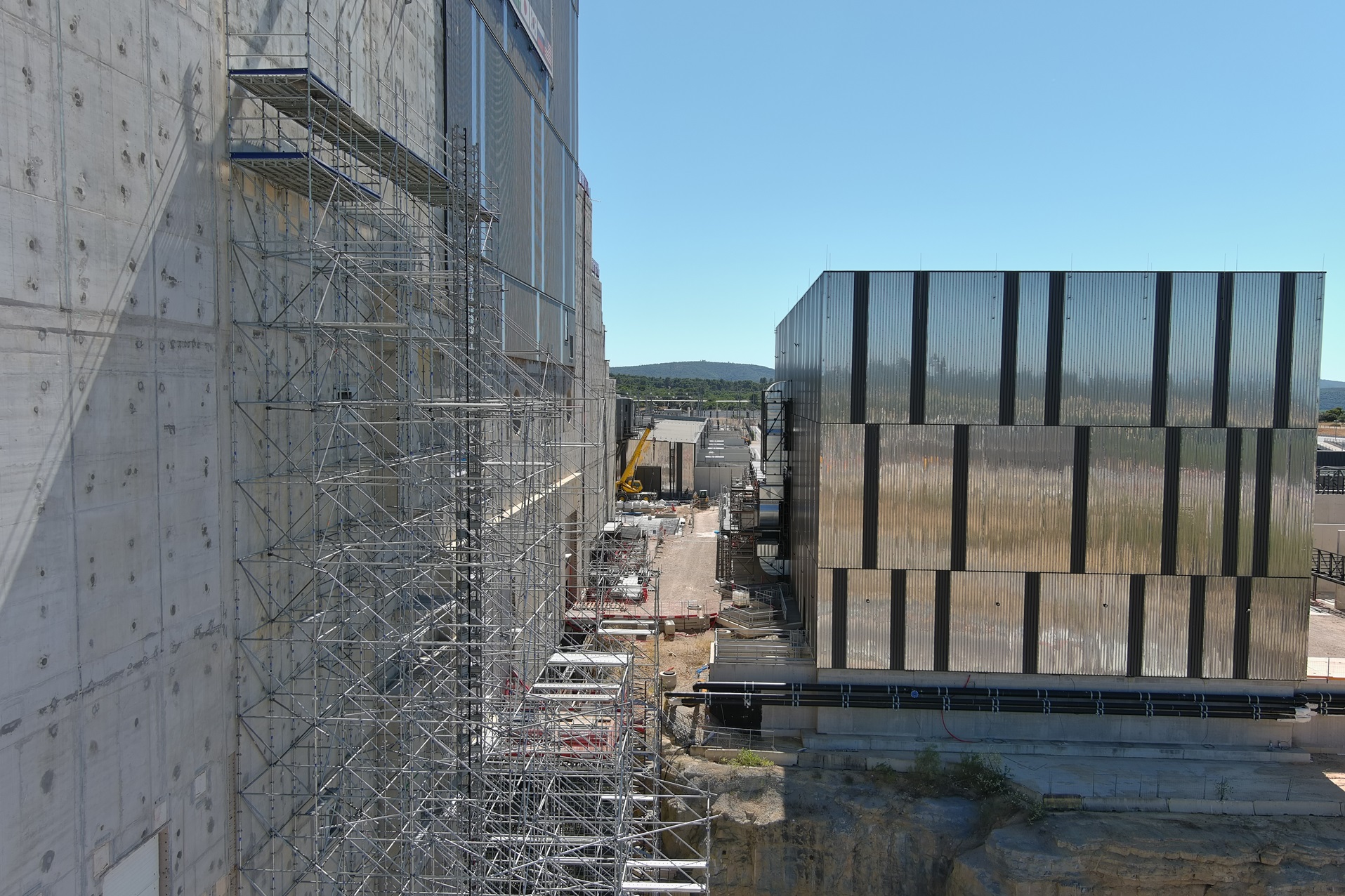
In between
2025-08-07 - Looking south, with the Tokamak Complex on your left and the neutral beam system's High Voltage Building on your right.

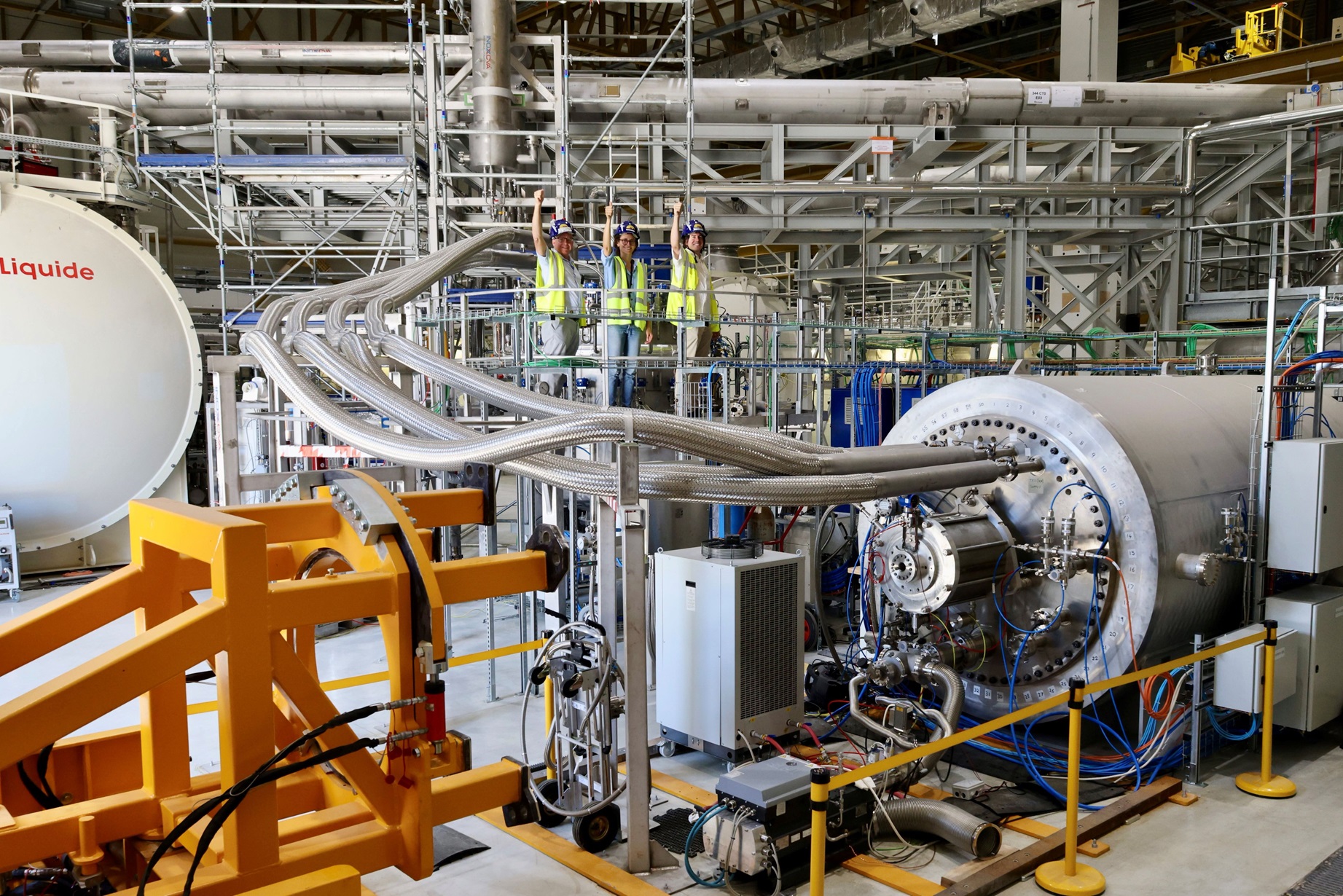
Cryopump tests are on!
2025-08-06 - In August, the pre-production cryopump is used to commission the cryopump test facility. The test bench creates vacuum and cold conditions similar to ITER operation, allowing the teams to test the pump in different ITER scenarios. We'll have full coverage in the ITER Newsline in September.

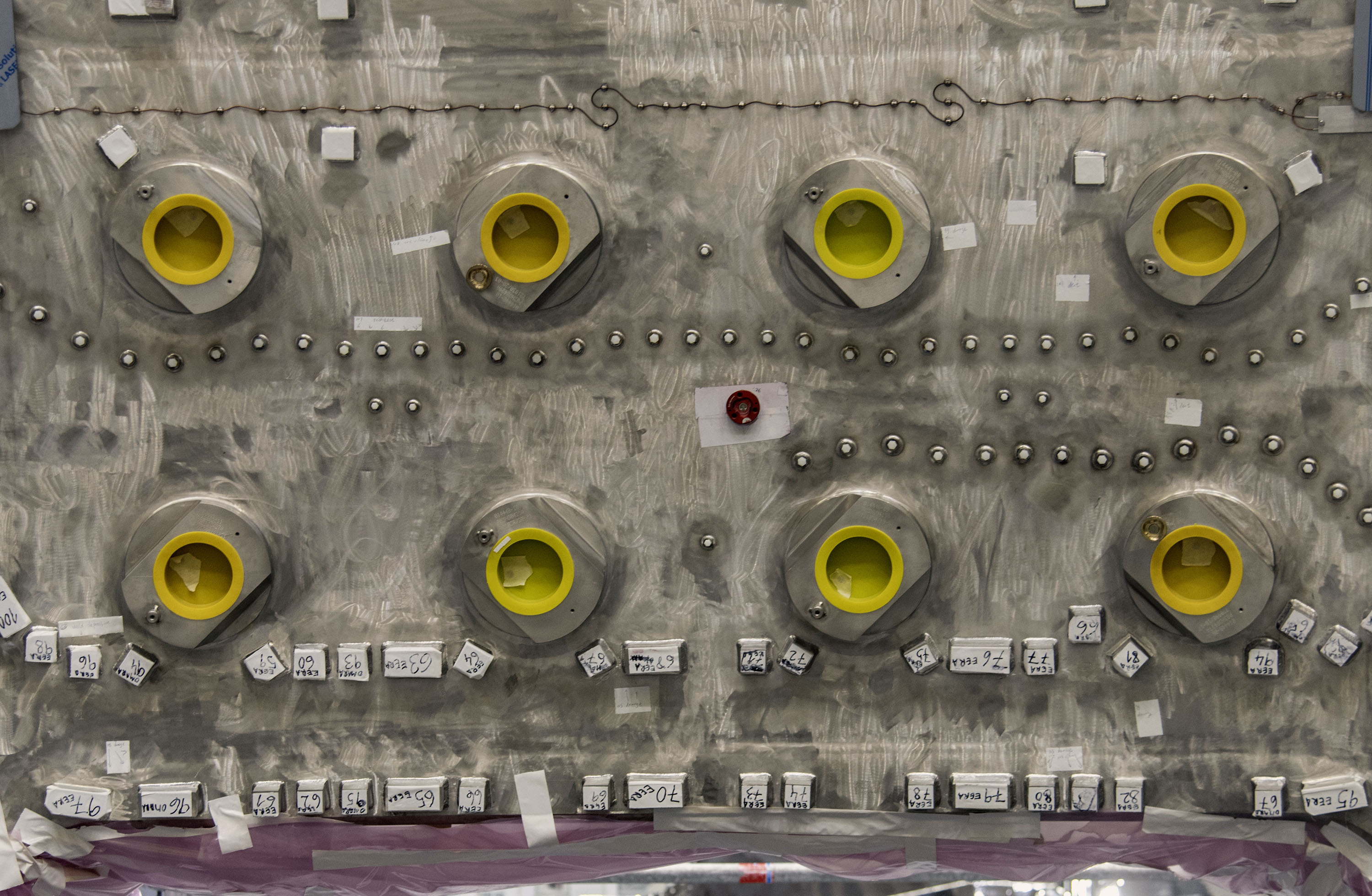
Abstract metrology
2025-07-22 - Highly sophisticated technology and basic—but effective!—craftsmen habits often coexist in the ITER environment. Here, handwritten labels identify elements on the inner wall of vacuum vessel sector #8.

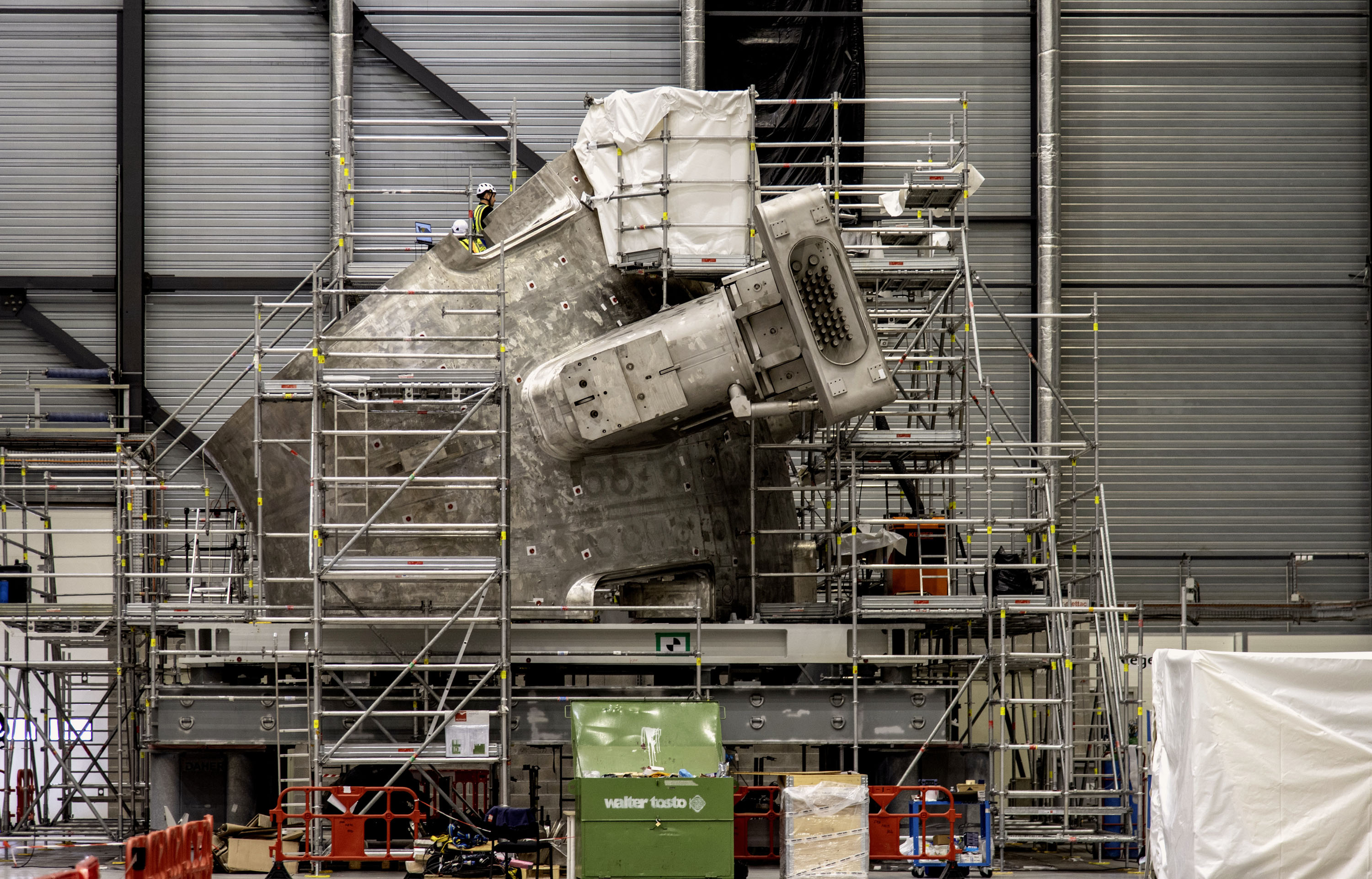
On its side
2025-07-22 - Bevel metrology is being performed on vacuum vessel sector #1 in order to assess the extend of the repair required prior to welding activities in the Tokamak assembly pit.


Inside the "assembly pit"
2025-07-22 - One of the two sector modules in the pit is visible, the other is hidden. By the end of the year, when a third module joins them, the ITER plasma chamber will be one-third installed.


Through the window
2025-07-22 - Activity on a polished thermal shield panel is visible through an opening in vacuum vessel sector #8.


Preparing the next three sectors
2025-07-22 - A general view of the former Cryostat Workshop which is now used for assembly-related activities. Visible in the photo: vacuum vessel sector #8, fully repaired, which was handed over last week to the Chinese consortium CNPE in charge of machine assembly; vacuum vessel sector #1 to the right at the far end of the building; and the steel structure of the Trial, Test and Training Facility that will be used to pre-rehearse in-vessel assembly activities.

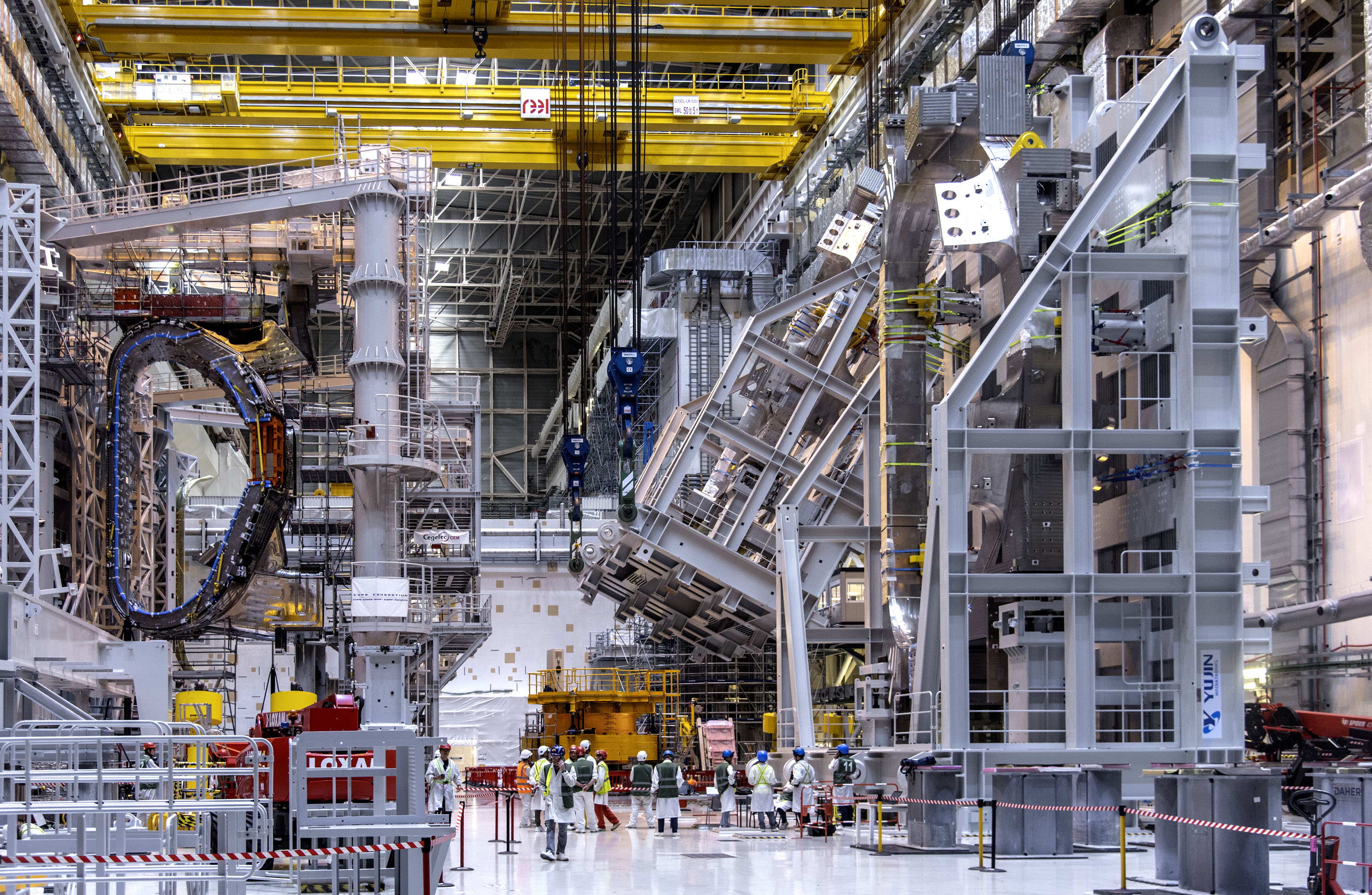
Raising a 330-tonne coil to vertical
2025-07-22 - Upending activities, whether for a vacuum vessel sector or a toroidal field coil, are among the most spectacular operations one can witness in the Assembly Hall. Here, to the right, toroidal field coil #16 (supplied by Japan) is being raised from horizontal to vertical prior to its transfer into the arms of the sub-assembly tool, to the left, where it will be paired with vacuum vessel sector #5.

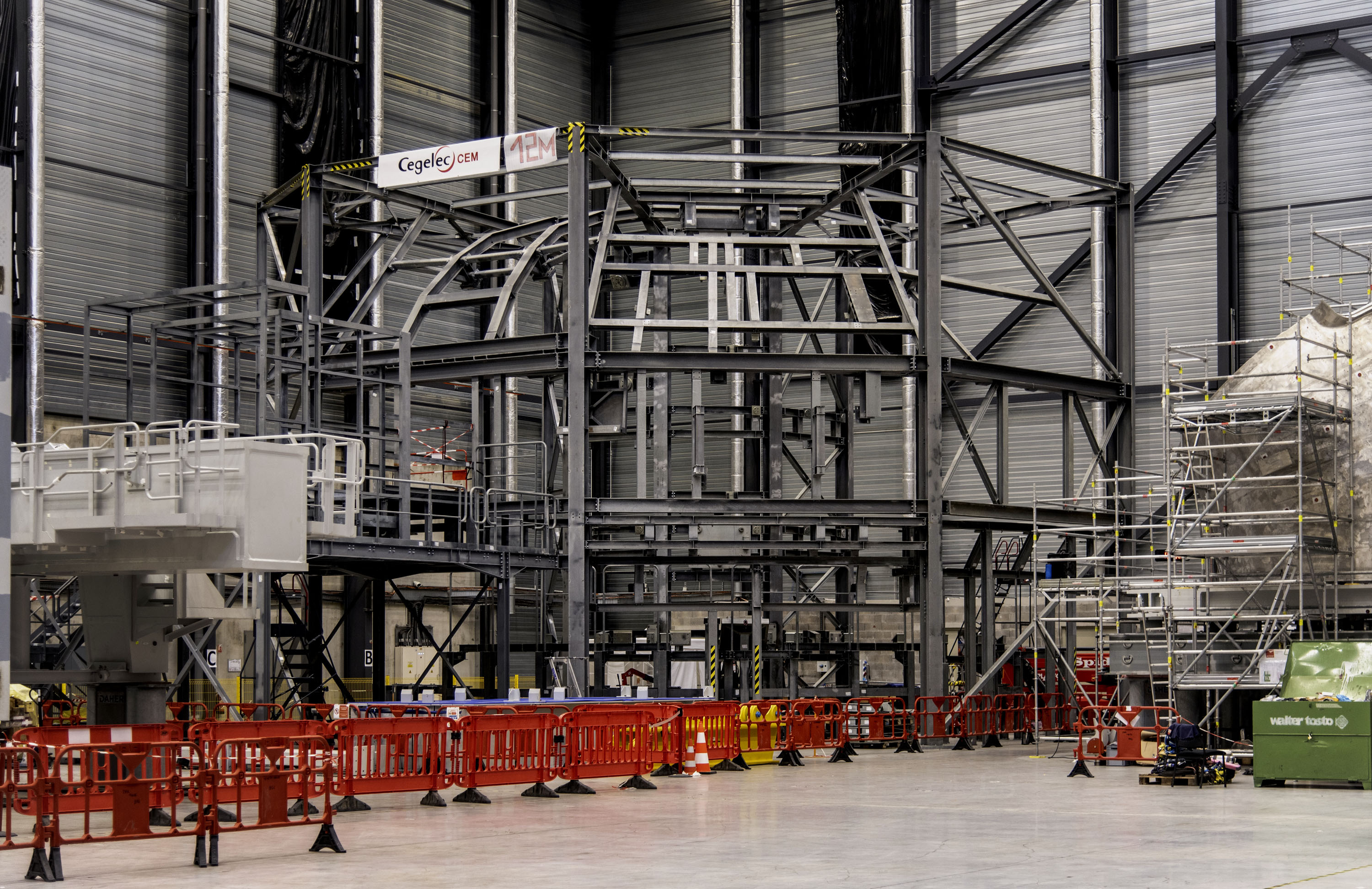
A practice station
2025-07-22 - The steel structure of the Trial, Test and Training Facility represents three vacuum vessel sectors sitting side by side. It will be used to qualify and test the tools dedicated to the assembly of components inside the vacuum vessel and also, possibly, for the robots that will weld the sectors together. The first activities, including personnel qualification, are foreseen to start next year.

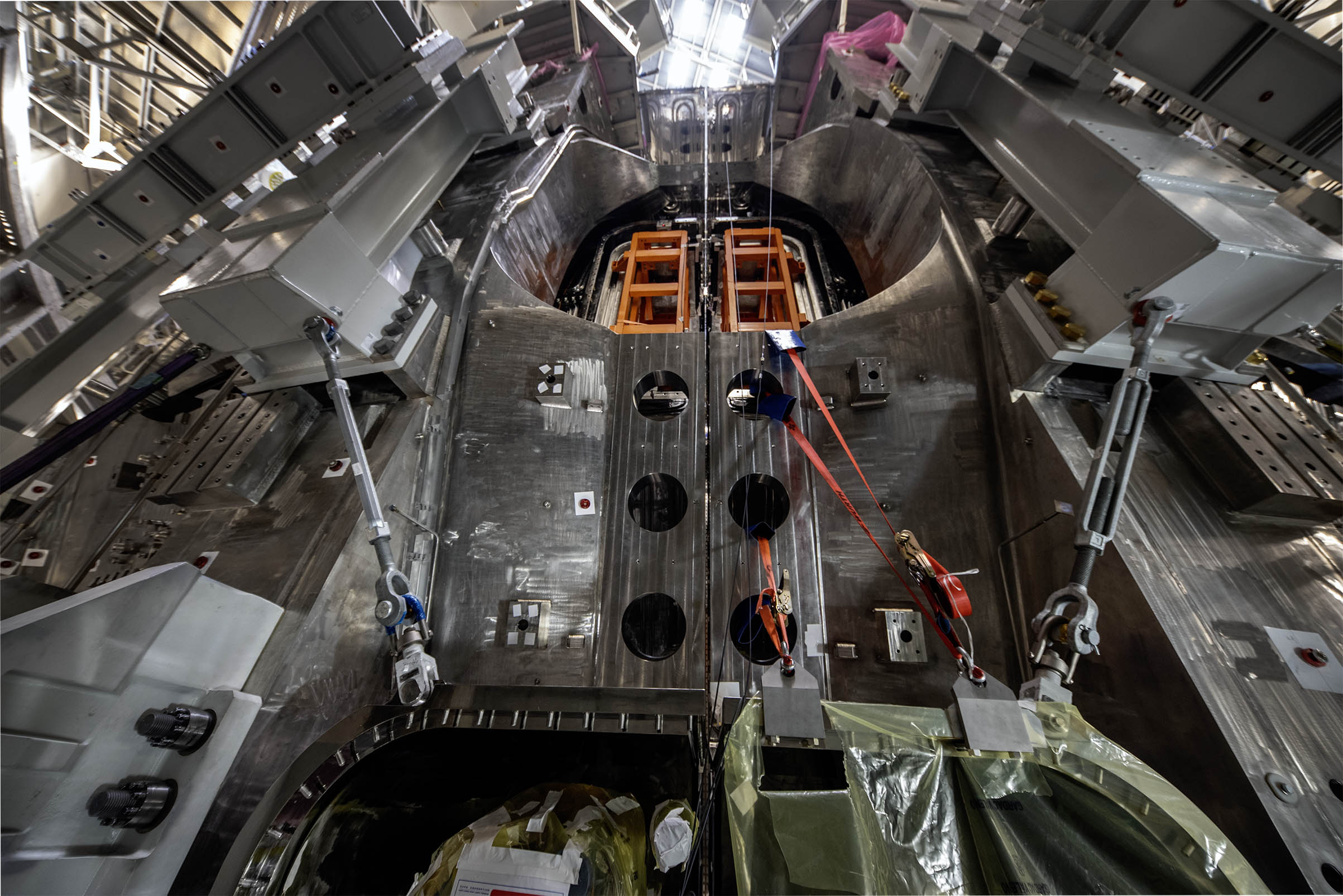
Around the back
2025-07-22 - Inside the tokamak pit, this is what the side-by-side sector modules look like from the back, where the steel superstructure of adjacent toroidal field coils nearly touches.

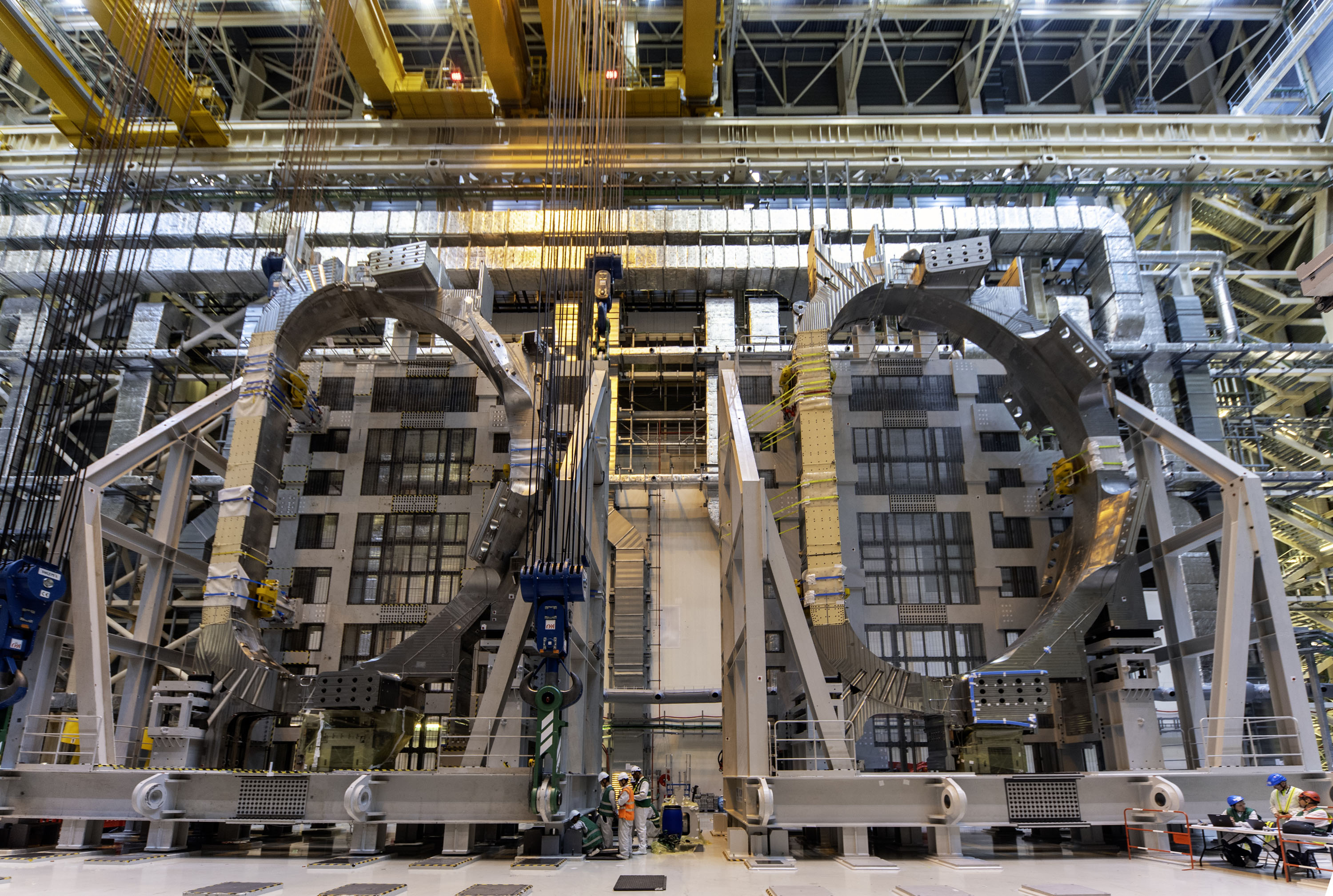
TWO upending tools
2025-07-16 - A rare view, but one that will become familiar, of the twin upending tools, each holding a 360-tonne toroidal field coil prior to their transfer to the sub-assembly tool. From this position, the coils can be hoisted by the overhead cranes and docked in sector module assembly tooling.


Properly installed
2025-07-15 - From design to reality: this photomontage shows the integrated auxiliary cold boxes vs the 3D model for the final installation. Well done!

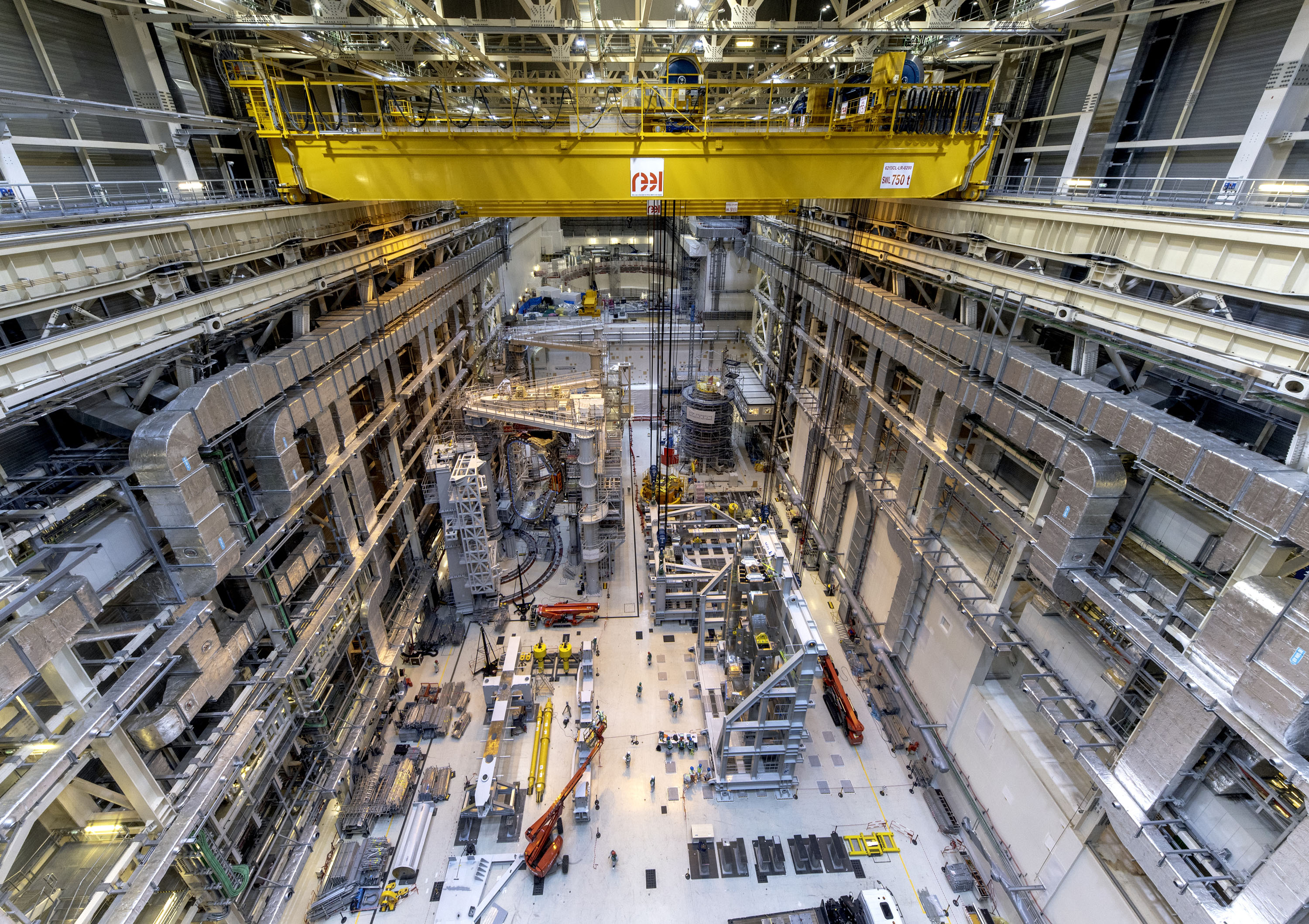
A busy shop floor
2025-07-15 - The ITER Assembly Hall, seen from the level of the overhead cranes. The tokamak pit is visible behind the wall at the back of the image.

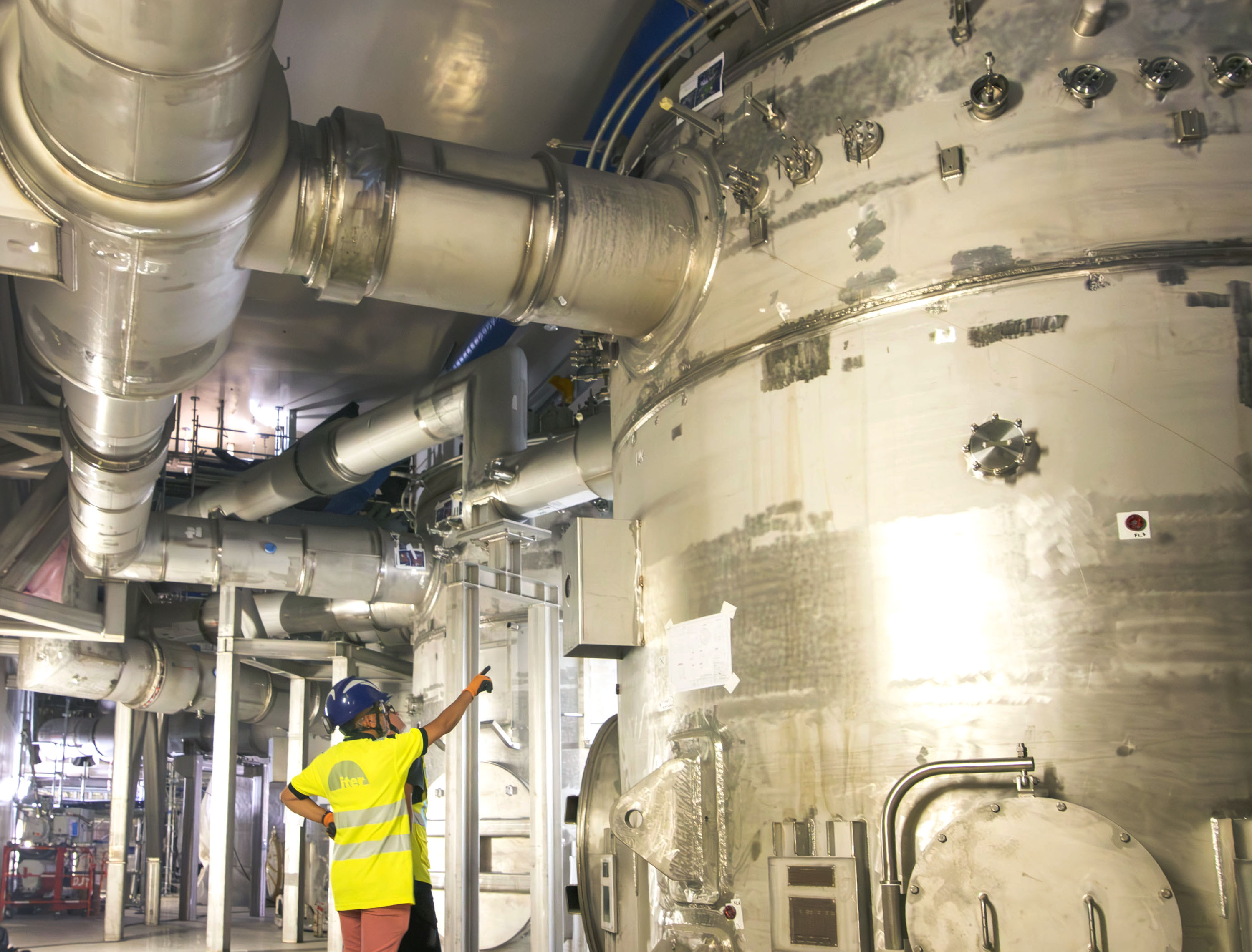
Inspecting a new installation
2025-07-15 - Lahcène Benkheira and Adrien Forgeas from the Assembly & Commissioning Support Division inspect the connections between the auxiliary cold boxes and the cryolines inside the Tokamak Building.

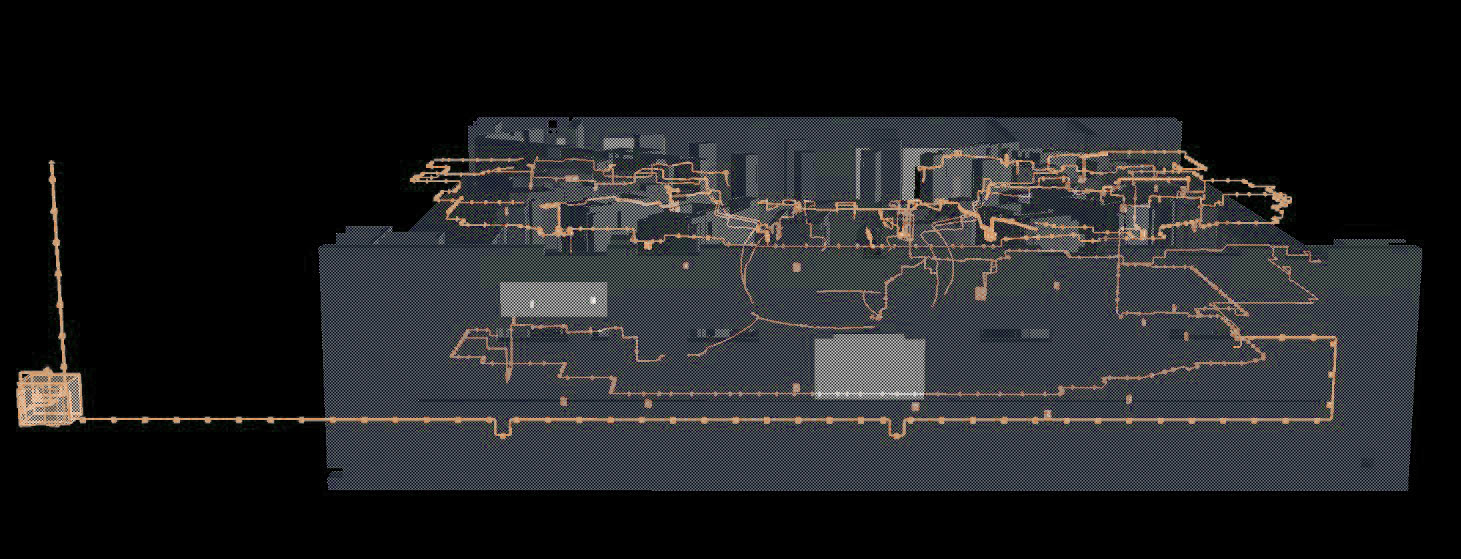
New system to integrate
2025-07-15 - More than a kilometre of gas injection lines will be required for the new boronization system, which goes hand in hand with the new blanket first wall in tungsten. This schematic shows the proposed route of the gas lines through the lower levels of the Tokamak Building (preliminary design).

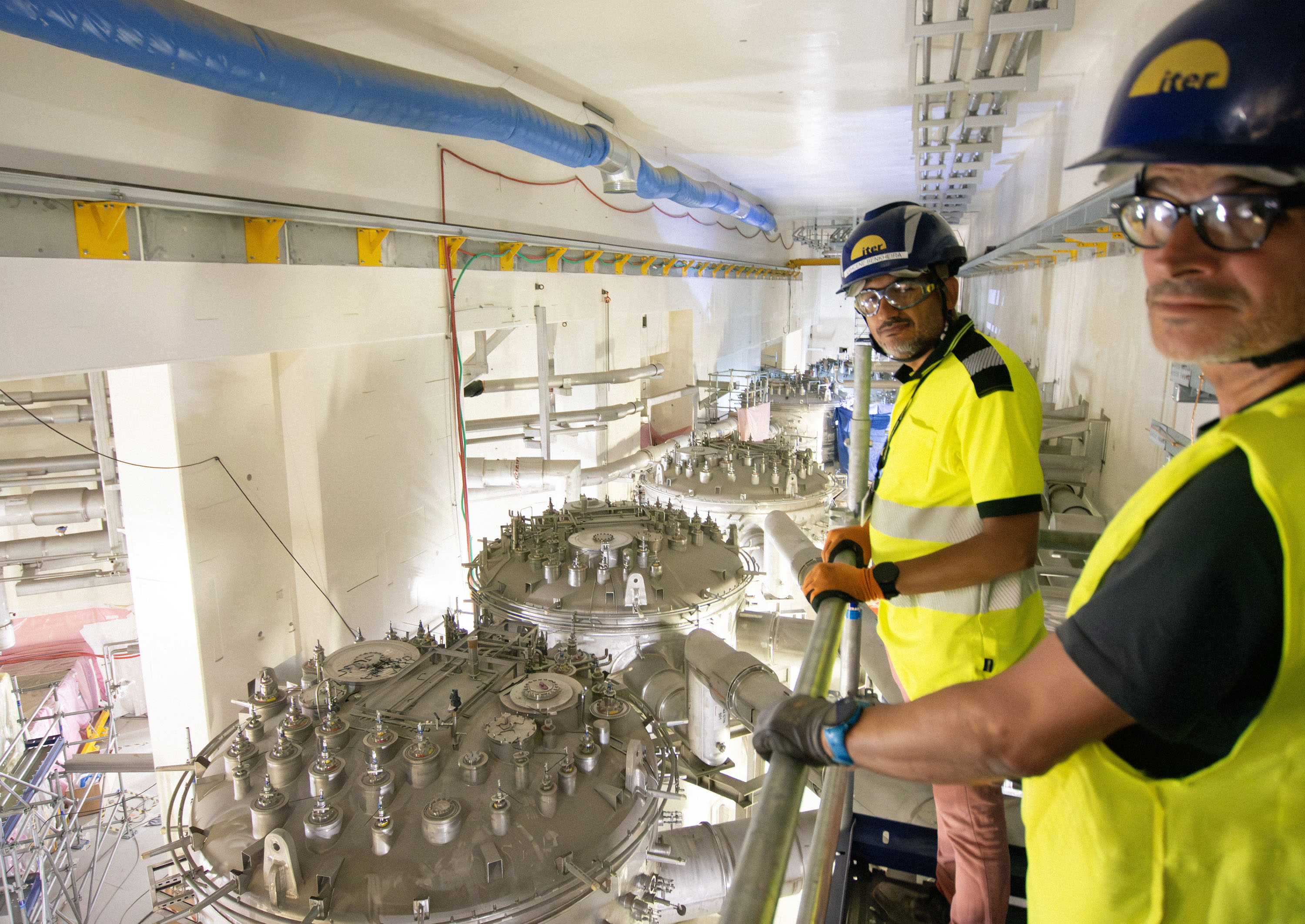
Auxiliary cold boxes: testing underway
2025-07-15 - Five auxiliary cold boxes at Level 3 of the Tokamak Building have been connected to cryolines and testing is underway. The 28-tonne components act like dispatchers, receiving the different fluids from the cryogenic termination cold box located inside the cryoplant and redistributing them throughout the ITER machine.

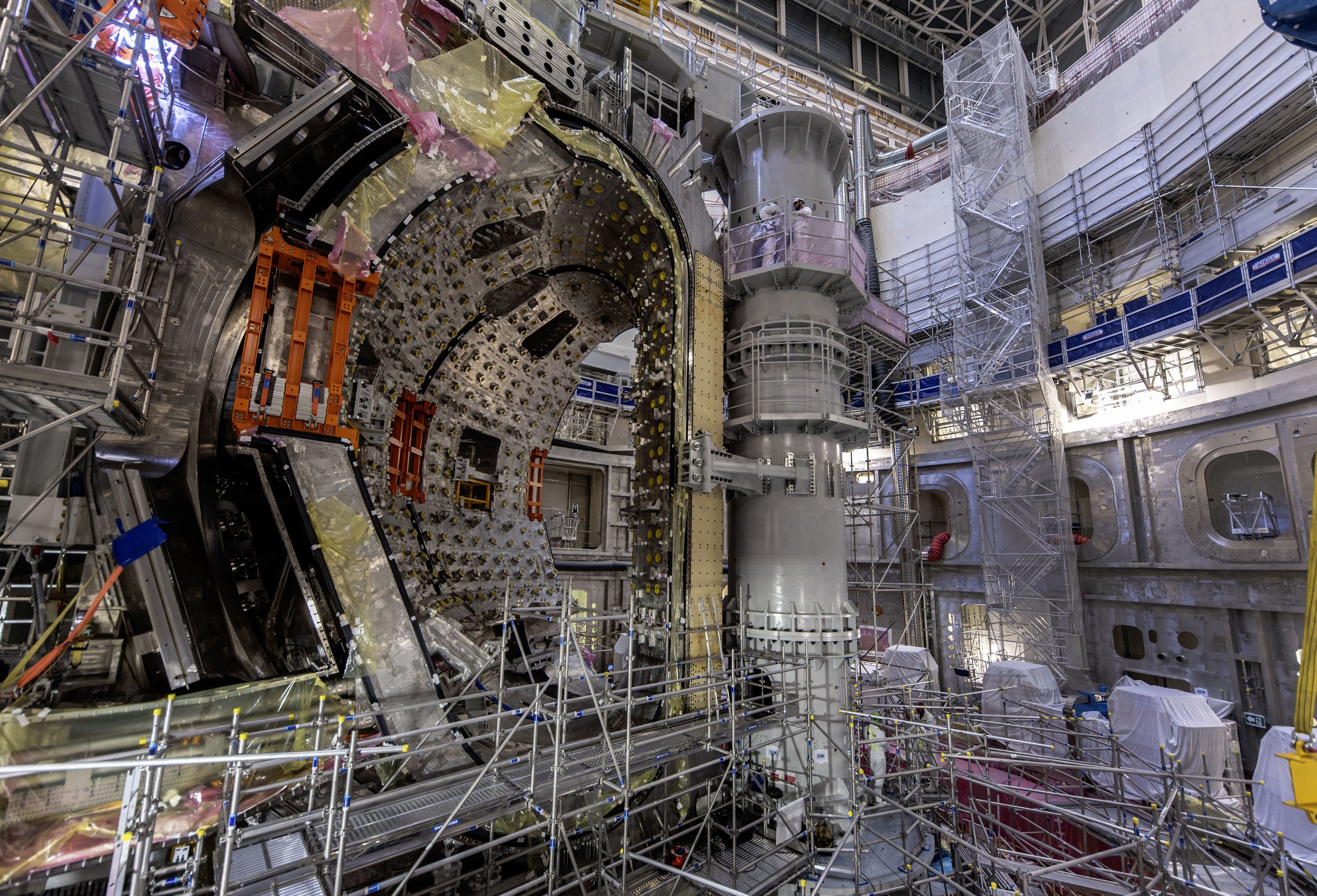
TWO sectors: close but not touching
2025-07-09 - Two sectors are now side by side in the tokamak pit, with 15 cm of space between them. They are suspended from radial beams that dispatch the load between the concrete walls of the pit and the central column tool, and also supported from below. Together, they weigh approximately 2,500 tonnes.

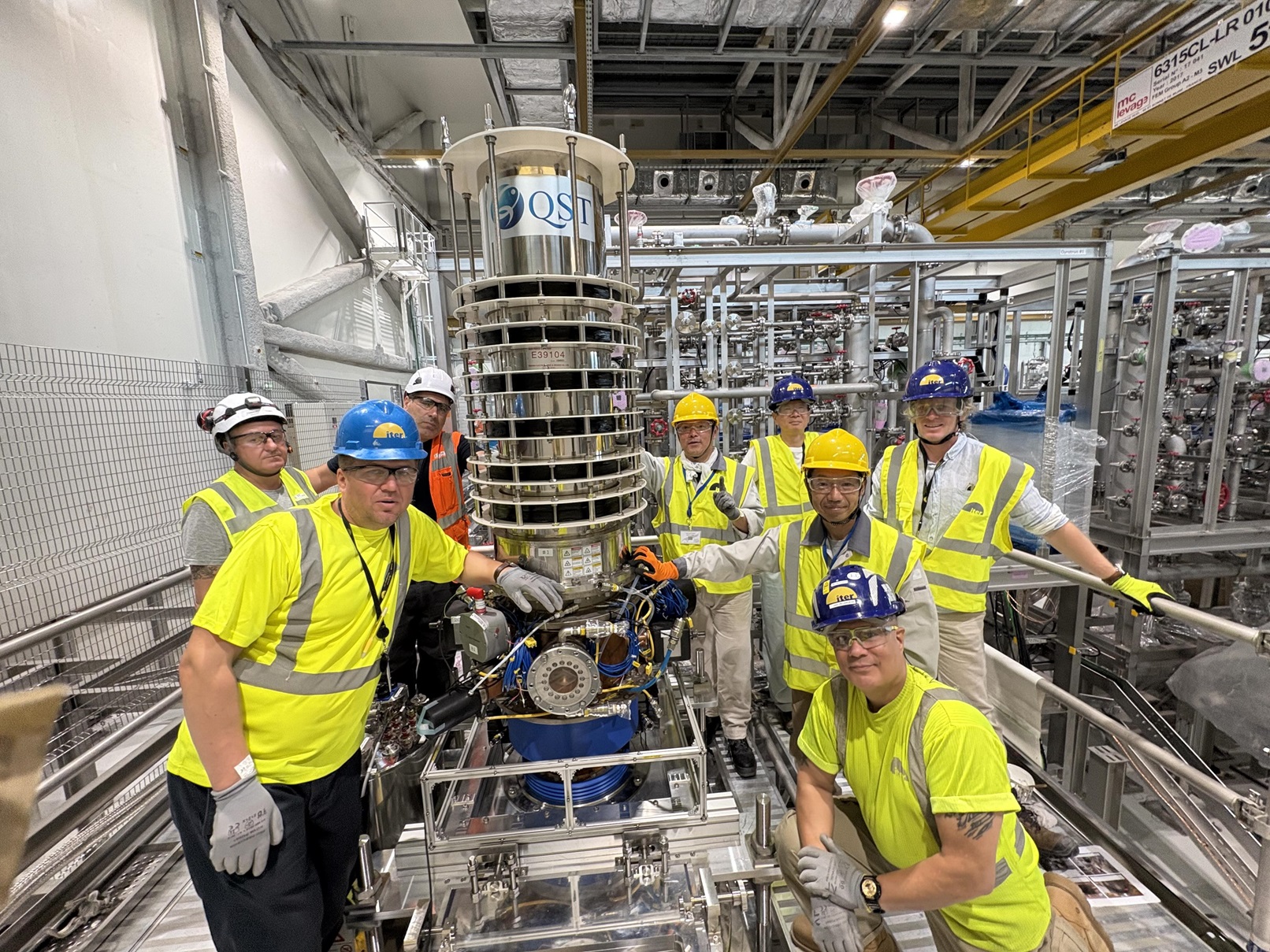
Installing the first gyrotron
2025-07-08 - Sixteen gyrotrons have been delivered so far to ITER—8 by Japan and 8 by Russia. This Japanese gyrotron will be the first of 24 to be installed on Level 3 of the Radiofrequency Building and commissioned.

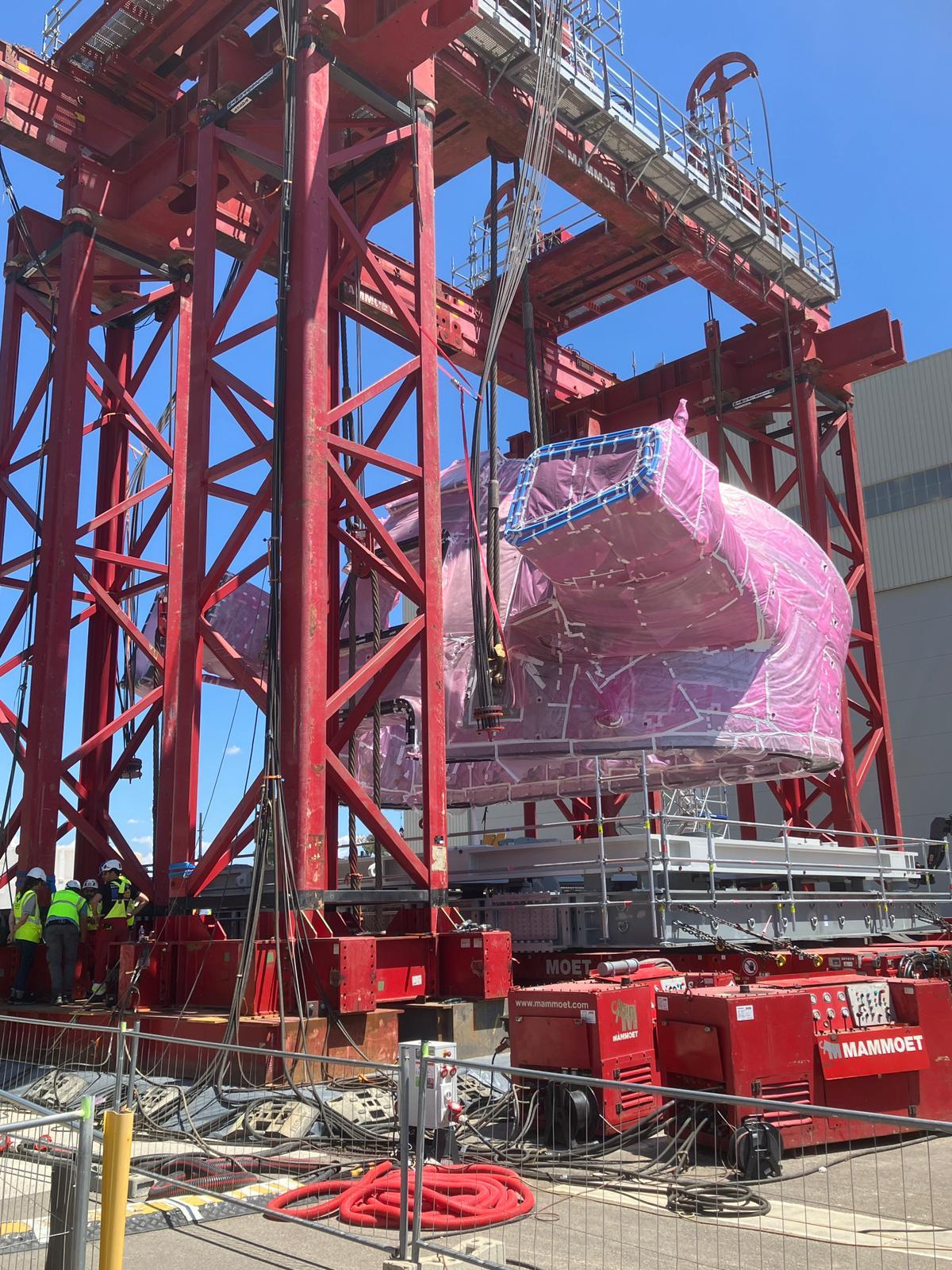
Another sector rotated outdoors
2025-07-07 - After vacuum vessel sector #4 in June, sector #1 has been rotated under the huge gantry crane that has been installed on the platform near the former Cryostat Workshop. Both sectors require dimensional repair on their second sides.

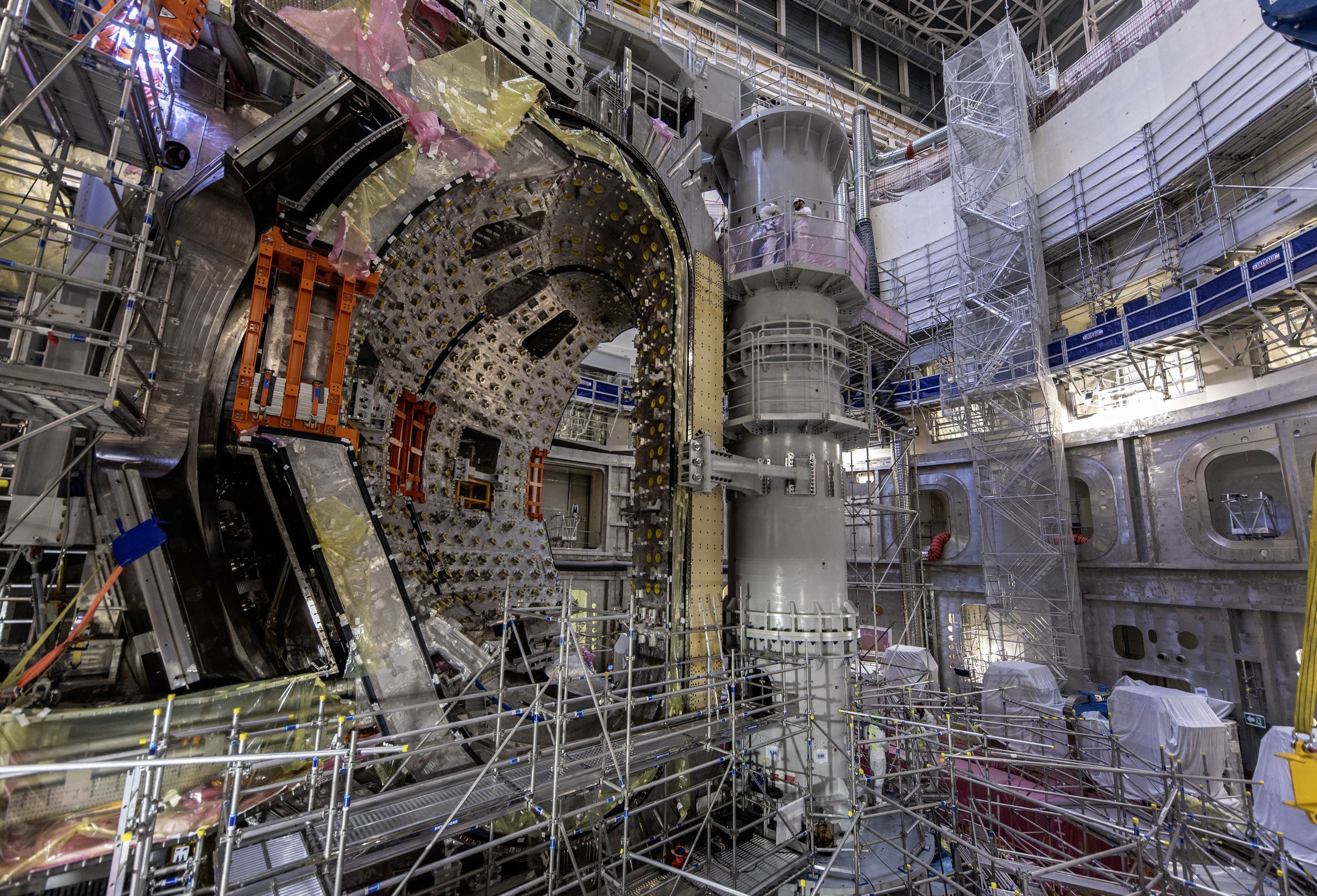
6 + 7
2025-07-07 - 2025 has been a busy year. Sector modules #6 and #7 were installed in June and April, respectively. Another sector module should be inserted in December.

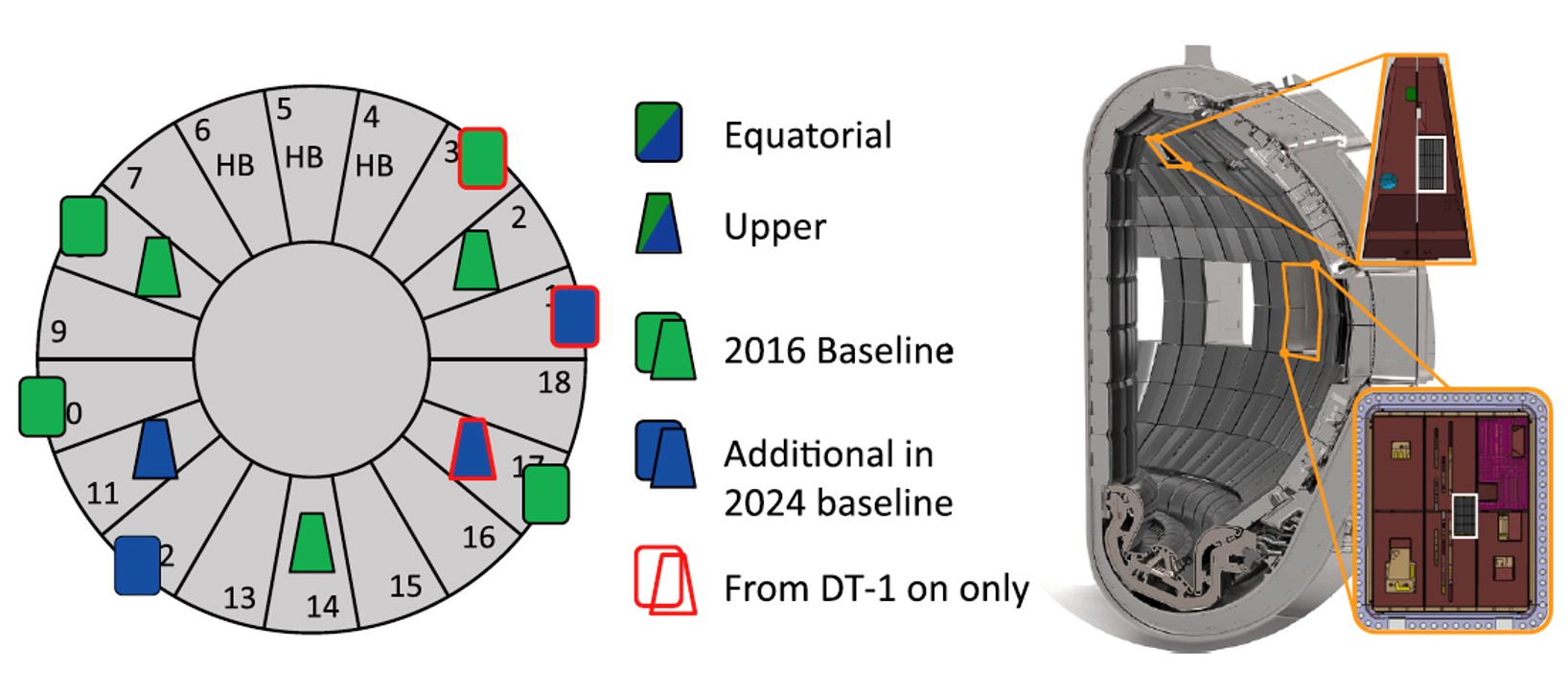
Design changes for boronization
2025-07-07 - The design of the boronization injection system is progressing. Made necessary by the switch to a tungsten wall, this system will disperse boron through the glow discharge wall conditioning system. Four new anodes (in blue) are required.

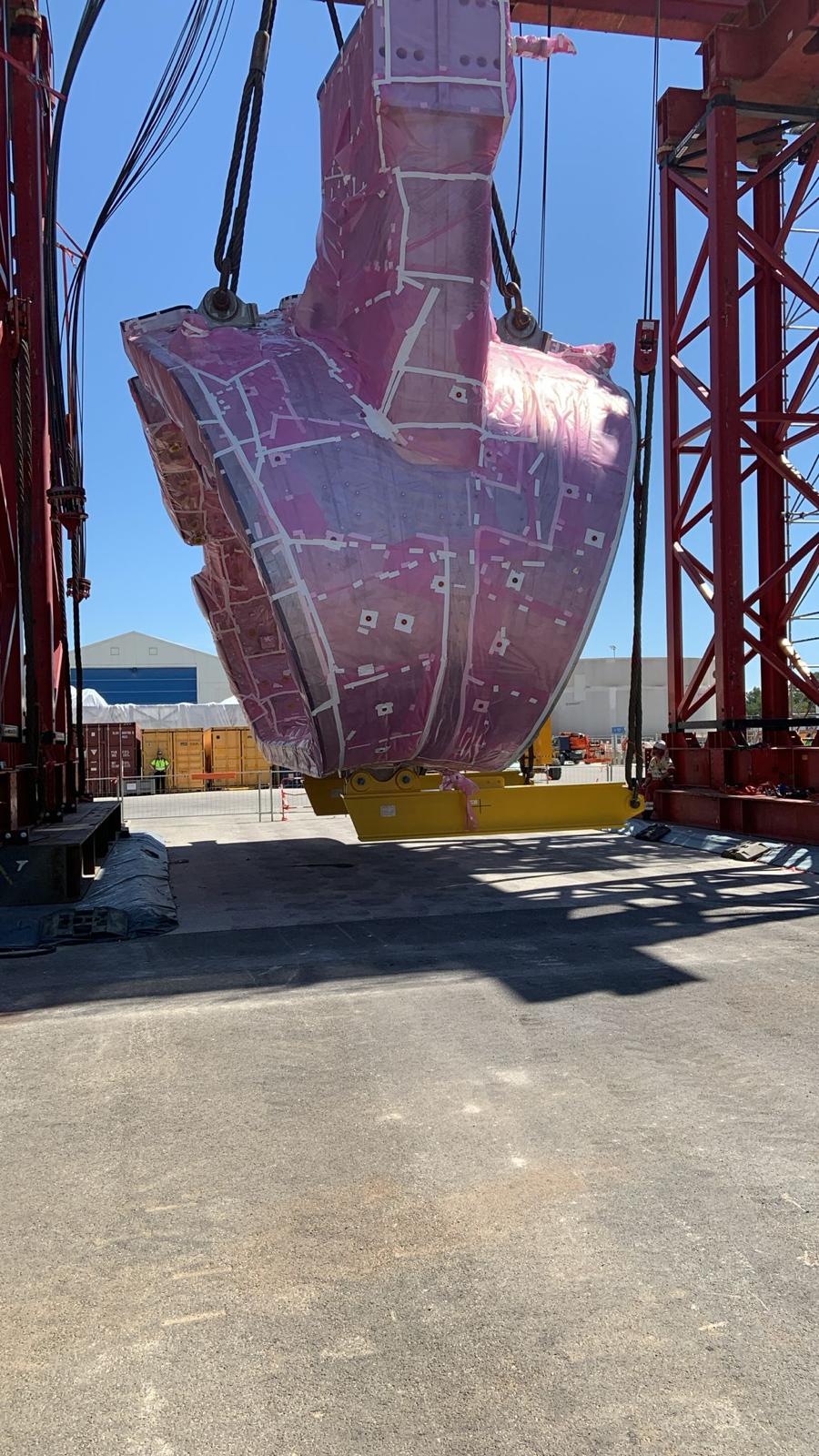
Rotating to the other side
2025-07-07 - Sector #1 is rotated over to expose its second side. Carrying out the rotation operation on the platform avoids congestion in the Assembly Hall.

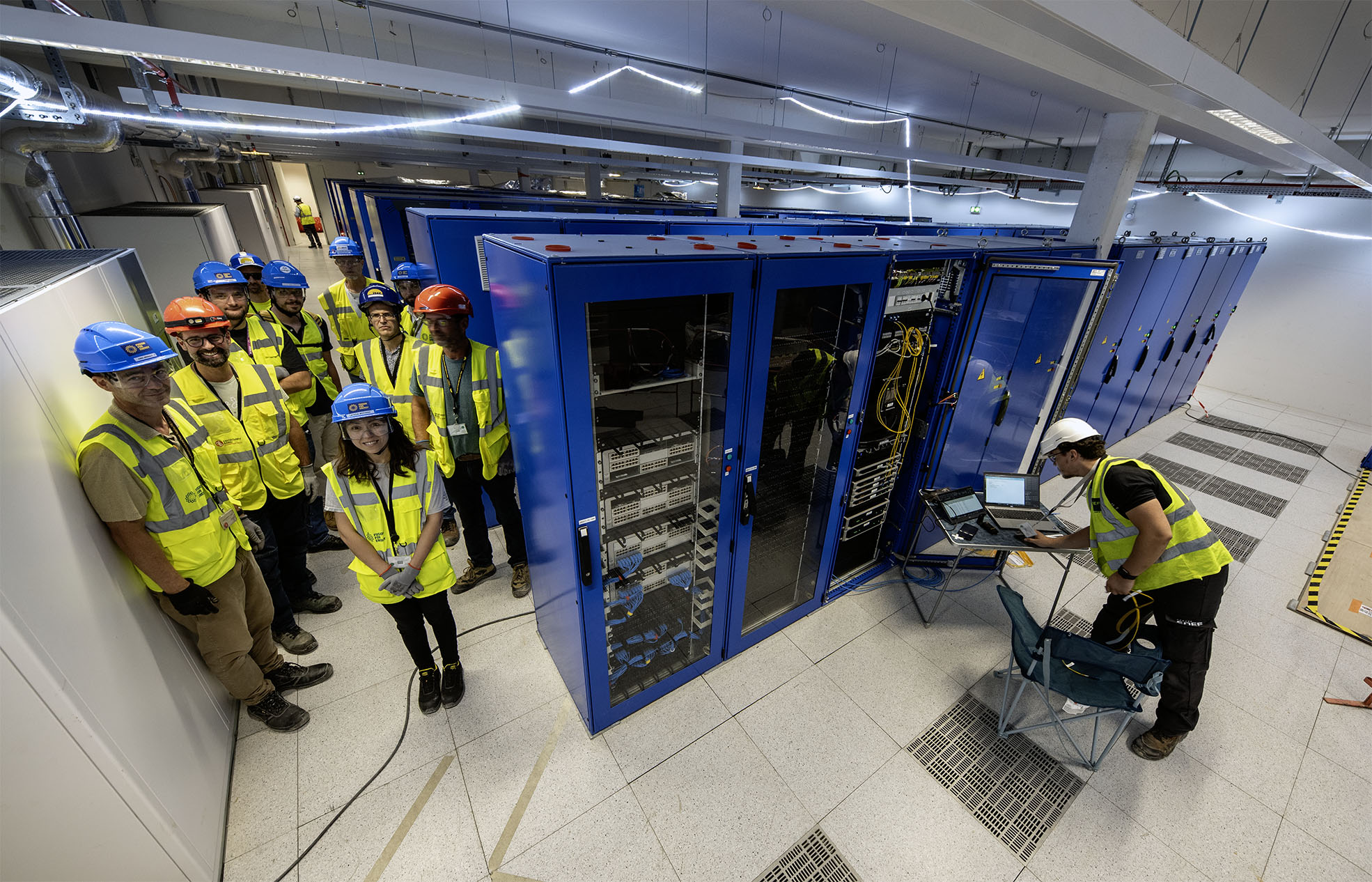
ITER's main server room
2025-07-07 - Equipment installation in the main server room of the ITER Control Building is progressing on schedule. In a few weeks, the European Domestic Agency Fusion for Energy (F4E)—which has been responsible for delivering the Control Building and its equipment—will hand over to the ITER Organization.


A perfect match
2025-07-07 - This wide-angle view of the tokamak pit shows two vacuum vessel sector modules side by side, matching perfectly.

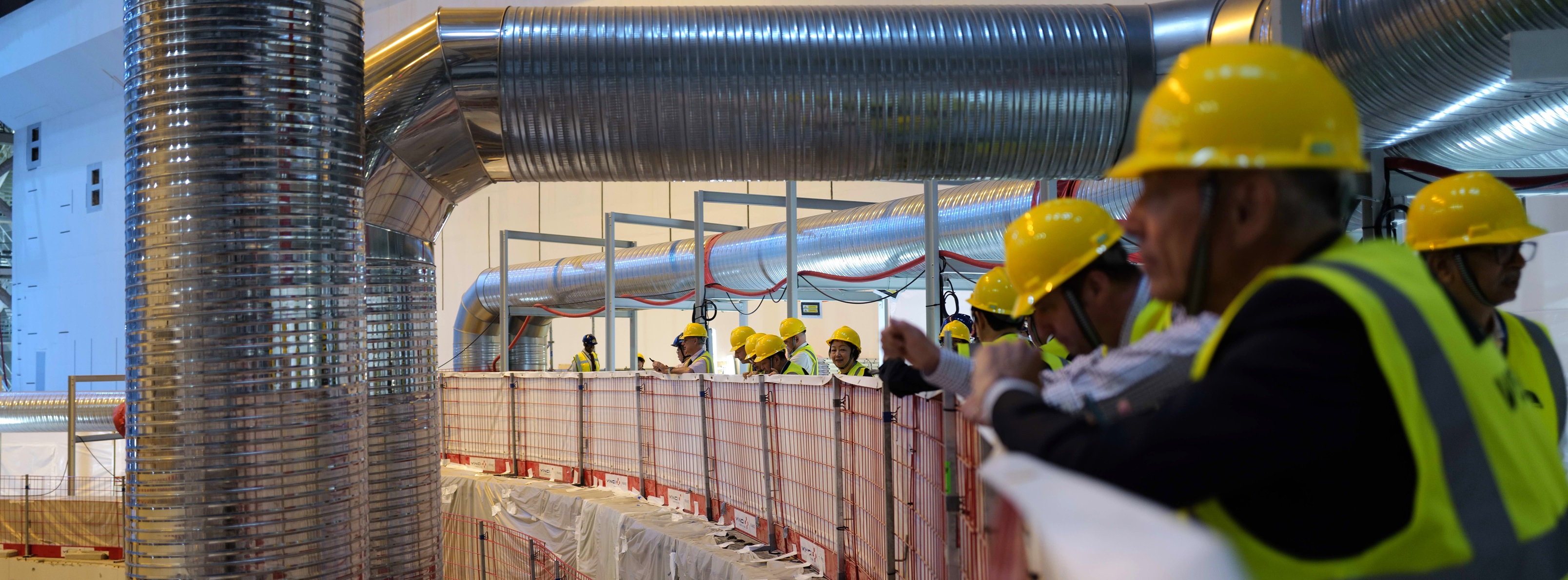
Council views recently added sector module
2025-06-19 - Representatives to the Thirty-Sixth Meeting of the ITER Council (IC-36) stand at the top of the tokamak pit, looking down on the never-before-seen sight of TWO sector modules.

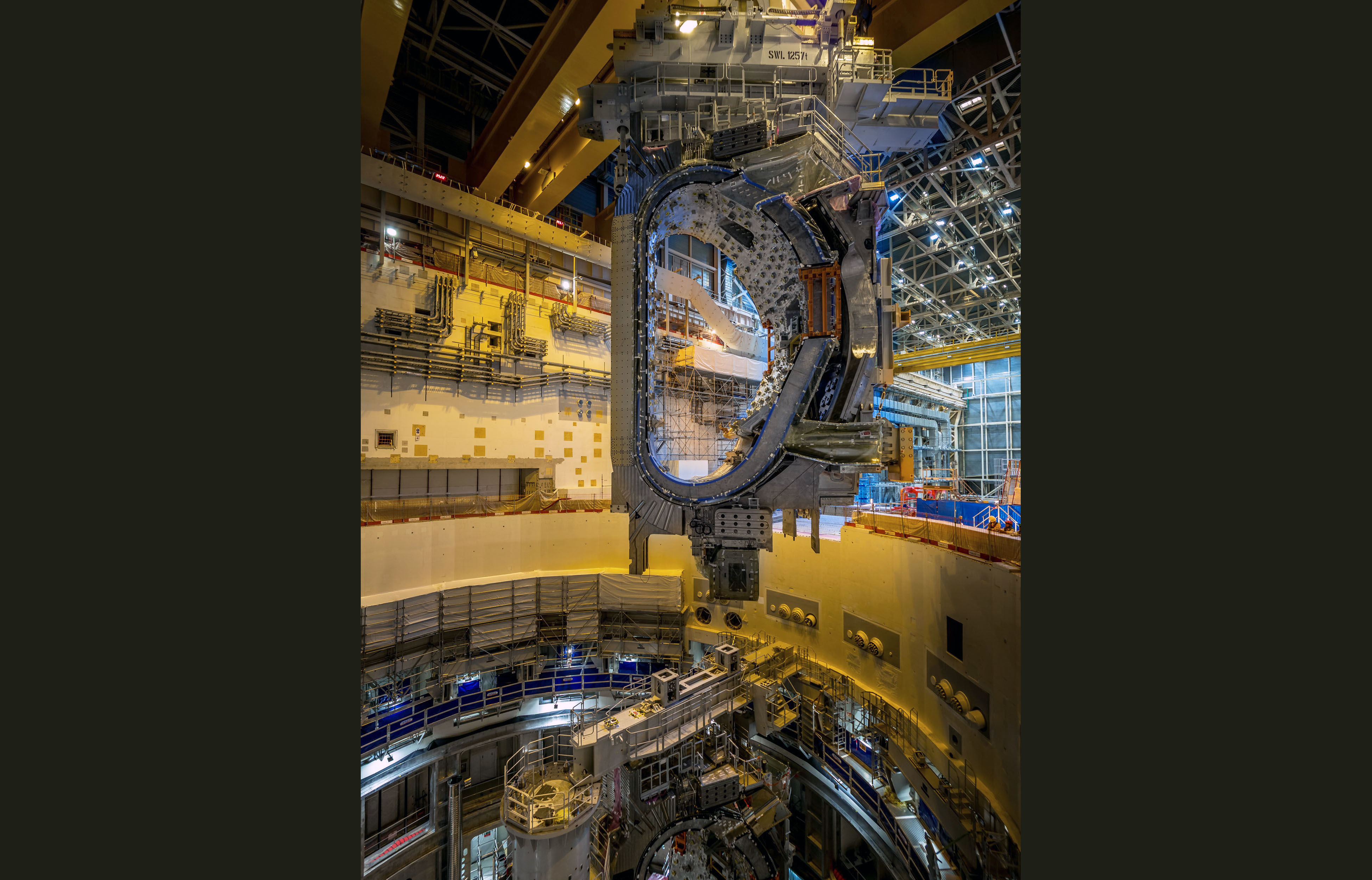
Above the pit
2025-06-18 - The 1,380-tonne load is suspended above bay #6 in the tokamak pit and will soon start to descend.

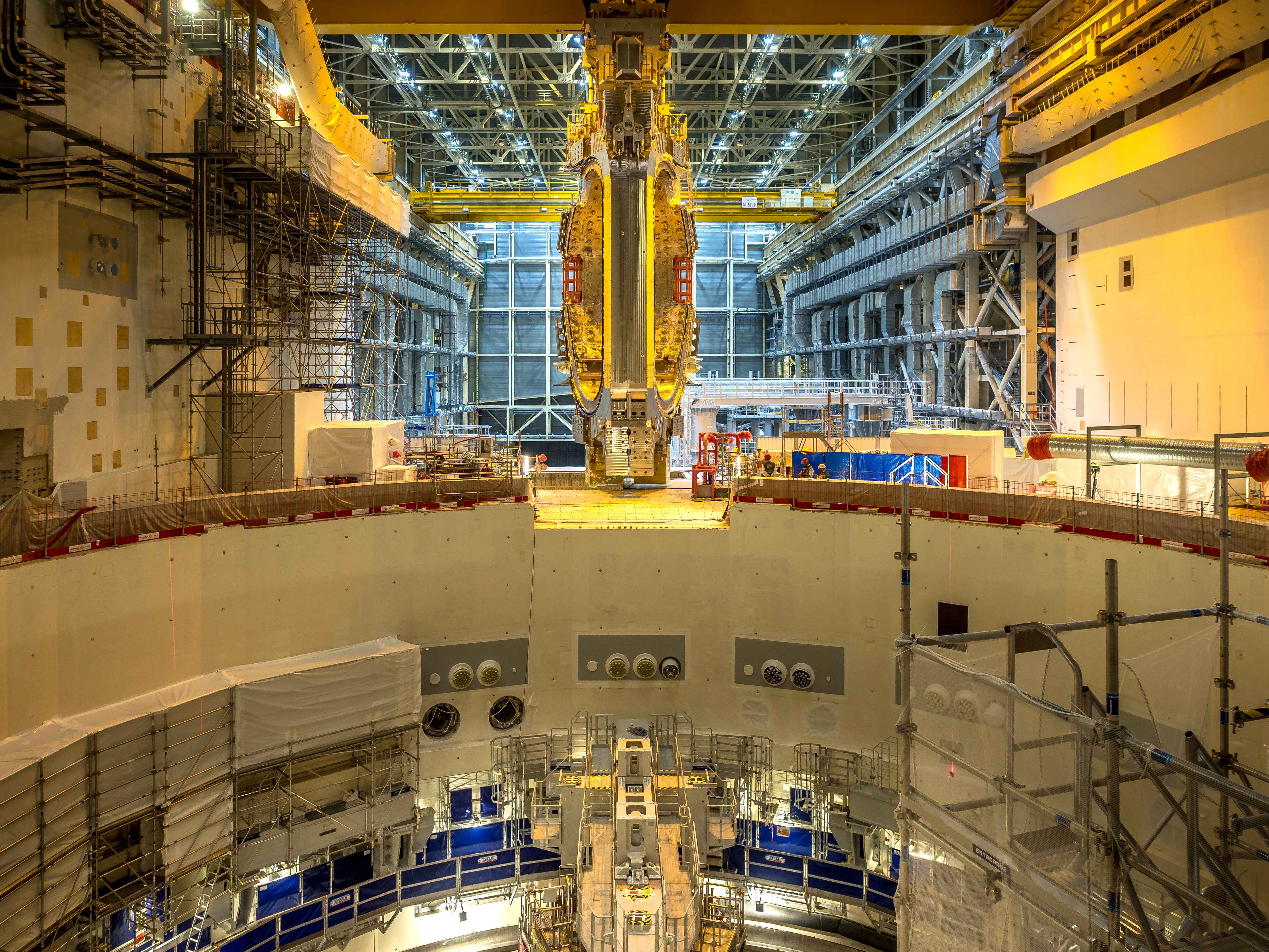
Over the wall
2025-06-18 - Above and below: sector module #6 is about to join sector module #7 in the tokamak assembly pit.


Just a few more centimetres
2025-06-18 - The radial beam supporting new sector module #6 is still a few centimetres above the one that has been in the pit since April. These workers from the CNPE consortium are watching closely as it travels the last bit of distance.

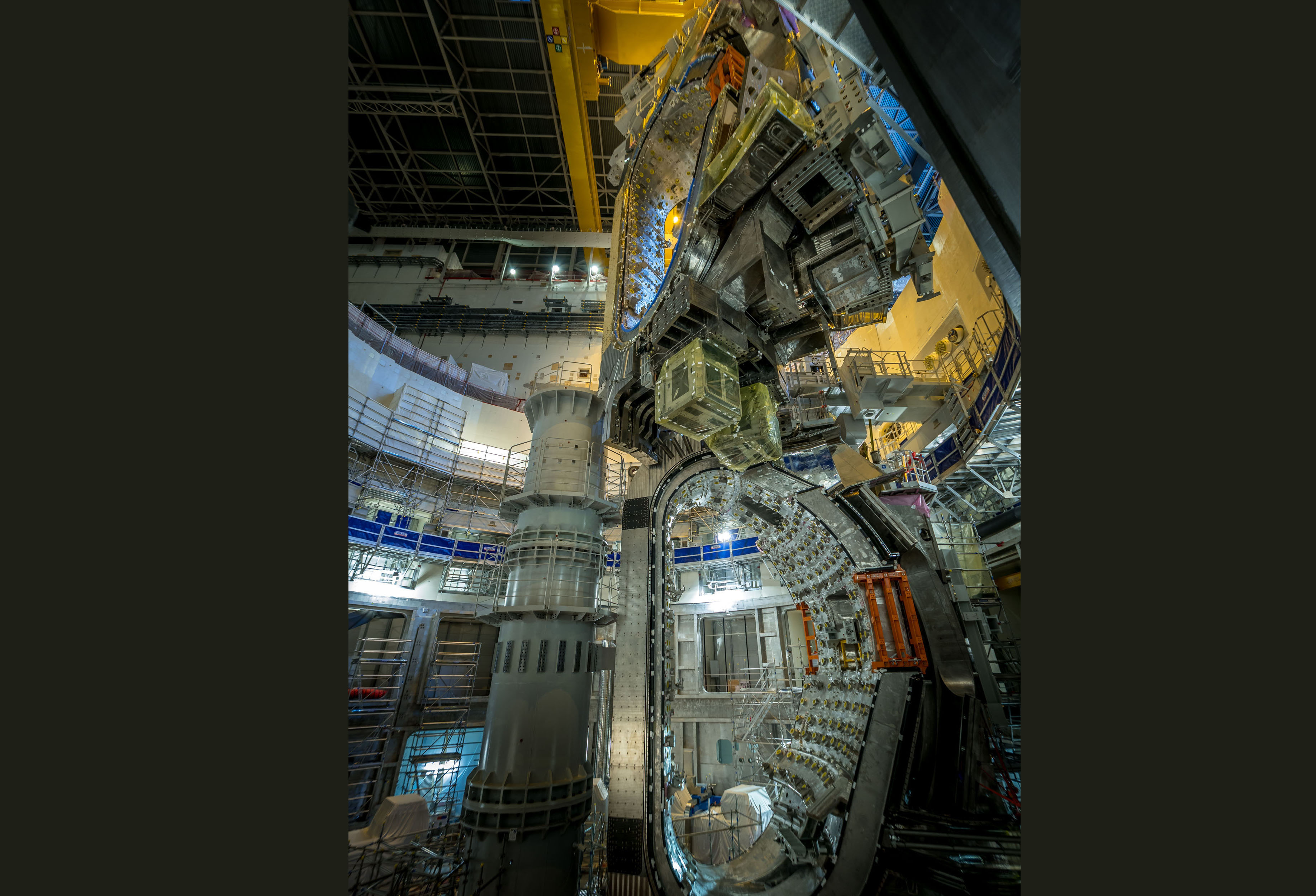
Close now
2025-06-18 - The cranes have pivoted sector module #6 above the pit to the orientation required for its slow descent.

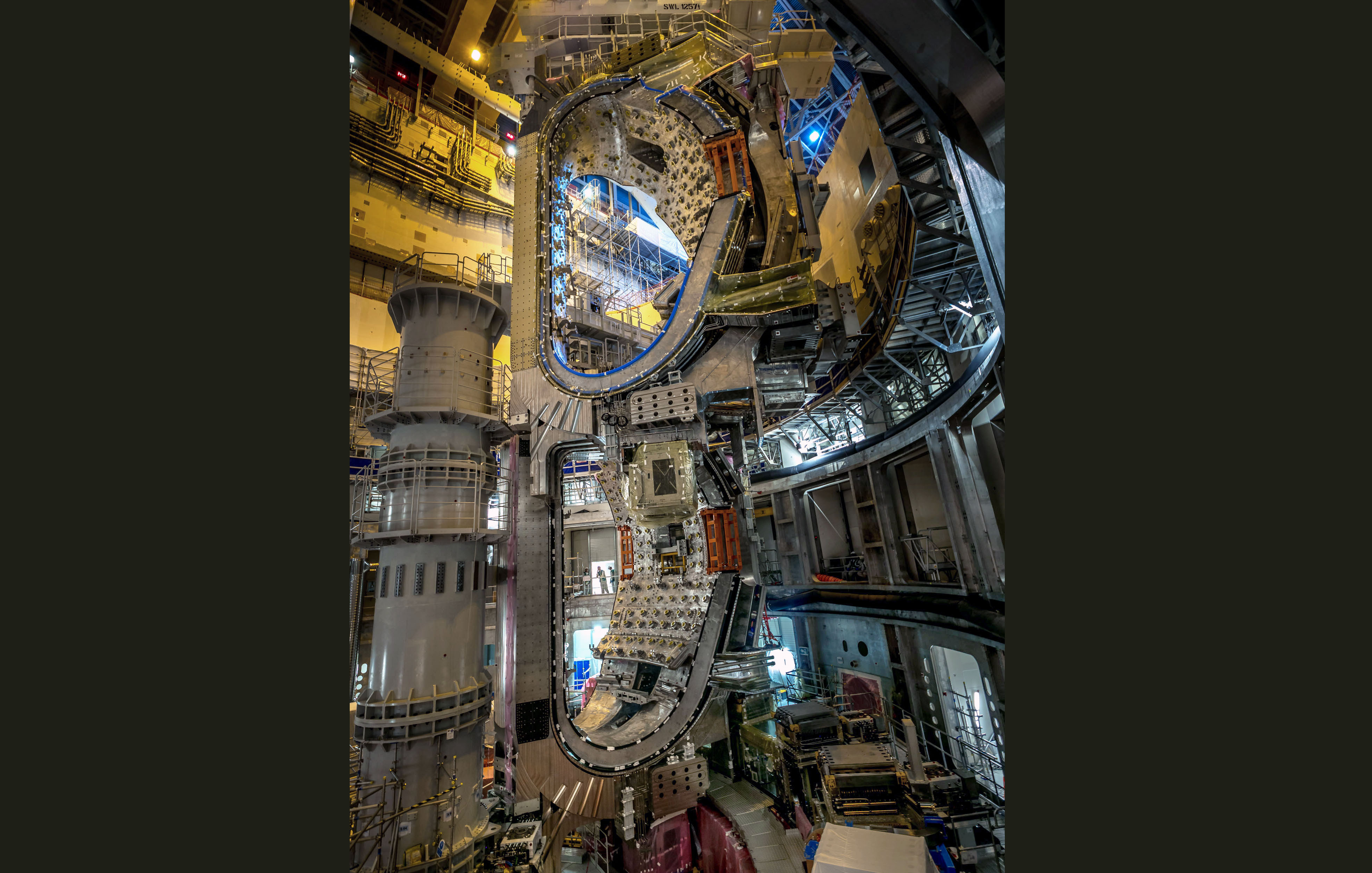
Slowly
2025-06-18 - Descending slowly: the new sector module had to be lowered especially slowly to avoid the pendulum effect. The two sectors are only 15 cm apart.

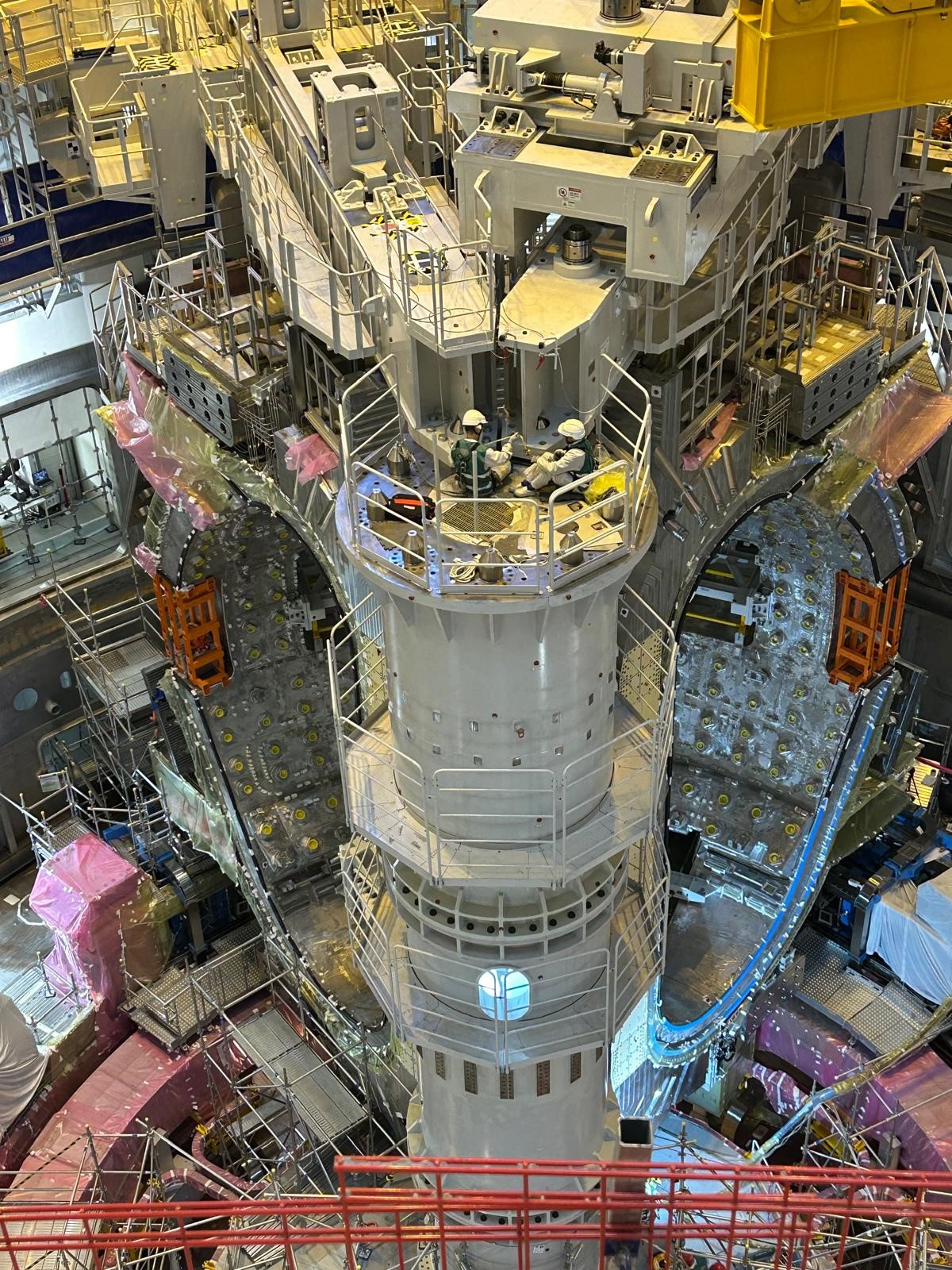
Sector module #6 installed in the pit
2025-06-18 - Sector module #6 slowly descends to take its place next to sector module #7 in the pit.

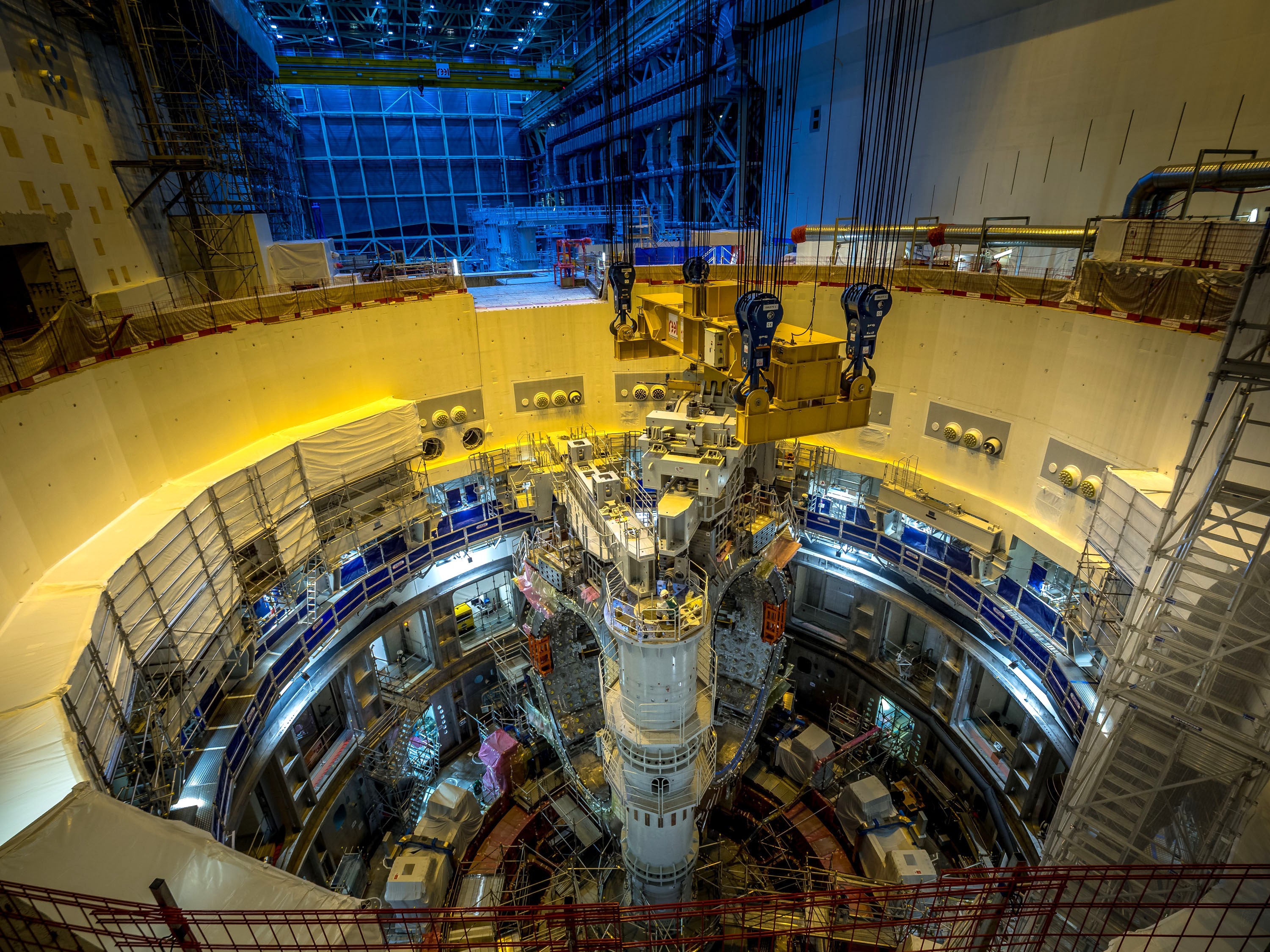
From above
2025-06-18 - The two sector modules as viewed from the rim of the tokamak pit. They represent two-ninths of the ITER vacuum vessel.


Meeting before the big lift
2025-06-17 - Burning the midnight oil: the assembly team meets at the beginning of a 12-hour night shift. Earlier, the 1,380-tonne load had been raised 50 cm and the pins attaching it to the assembly tool were released. All is go for its transfer to the pit.


Back down
2025-06-17 - Ensuring the perfect landing: the sector had to land on supporting blocks with only 3 cm of margin.

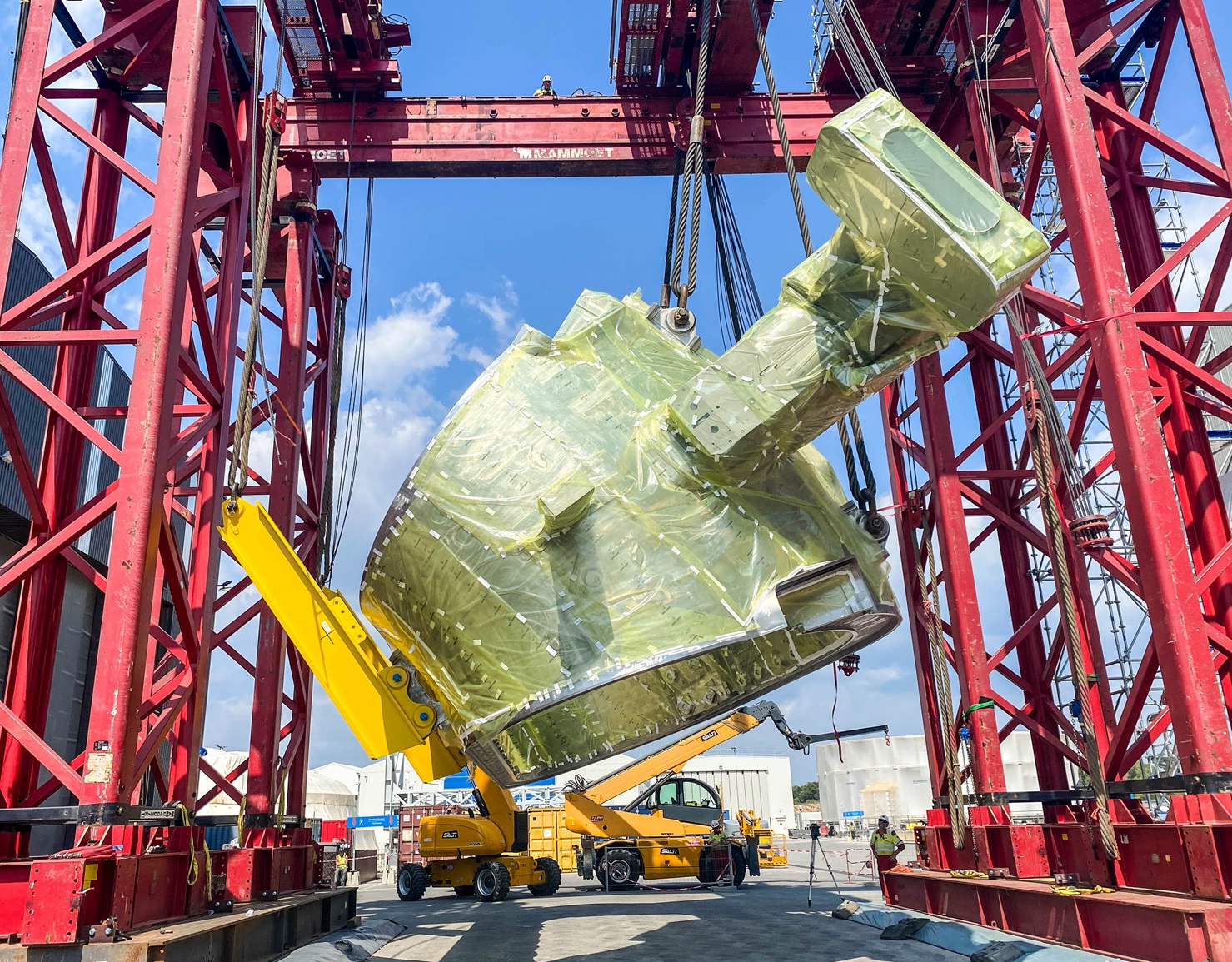
Rotation underway
2025-06-17 - It took 11 hours to raise, rotate and set back down vacuum vessel sector #4. By devising an outdoor solution, time was saved and extra congestion in the indoor assembly spaces was avoided.


Moving vertically out of the tool
2025-06-17 - The overhead cranes are lifting the load to its highest point so that it can pass over the tool’s crossbar and head to the centre of the Assembly Hall.

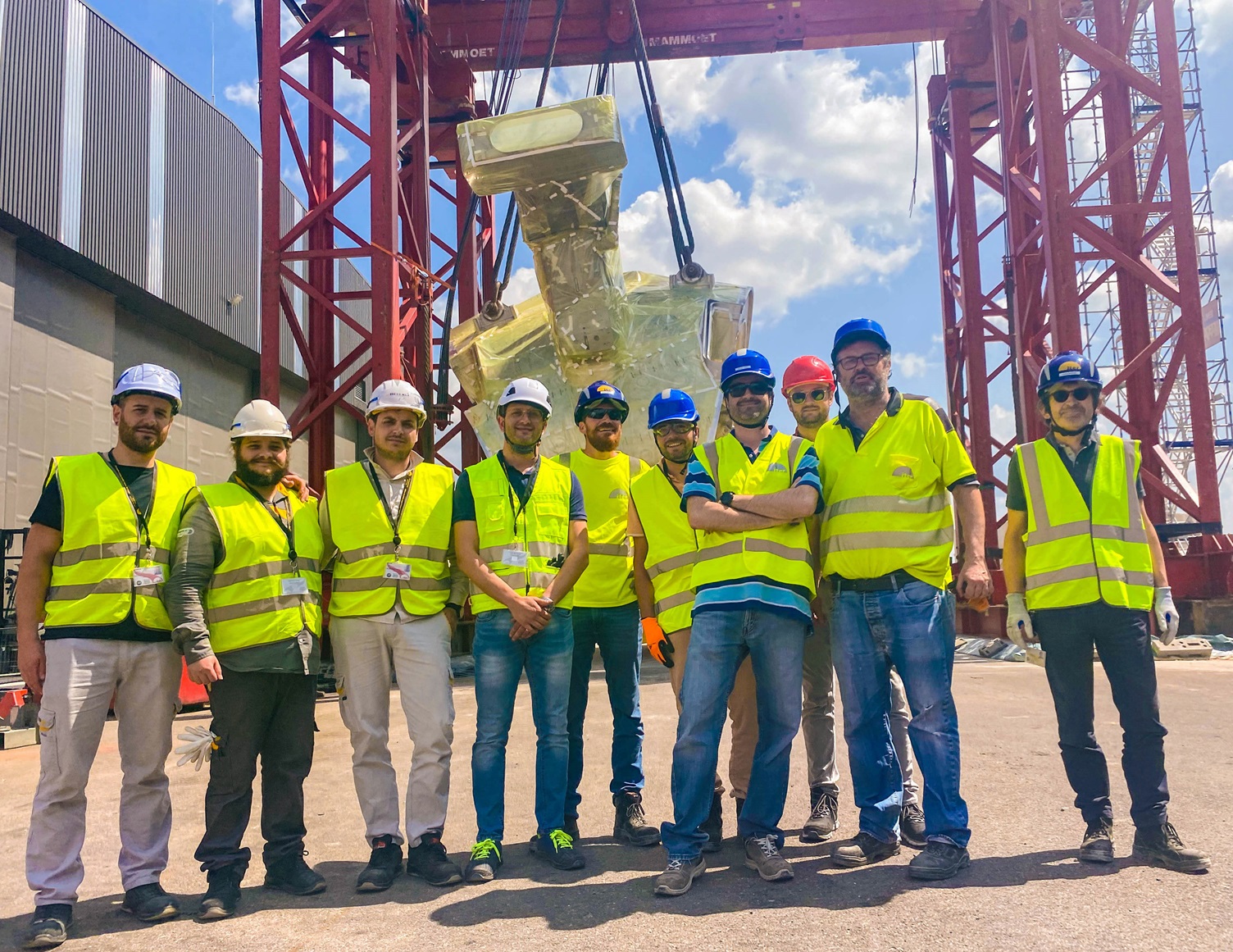
The team behind the outdoor rotation
2025-06-17 - The team that made it happen, including Alex Martin, second from right.

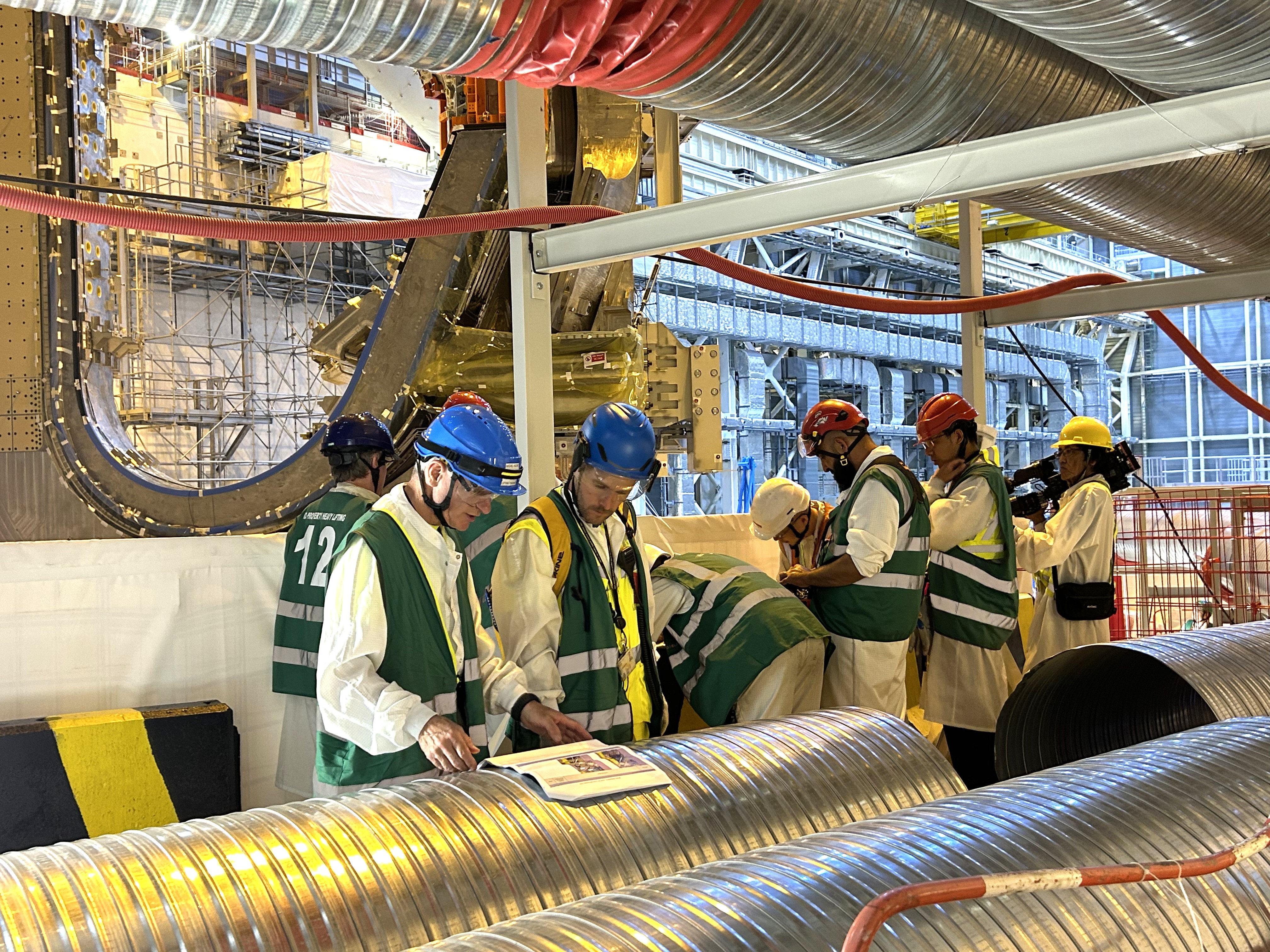
On shift during an important operation
2025-06-17 - Verifying that all is proceeding according to plan.

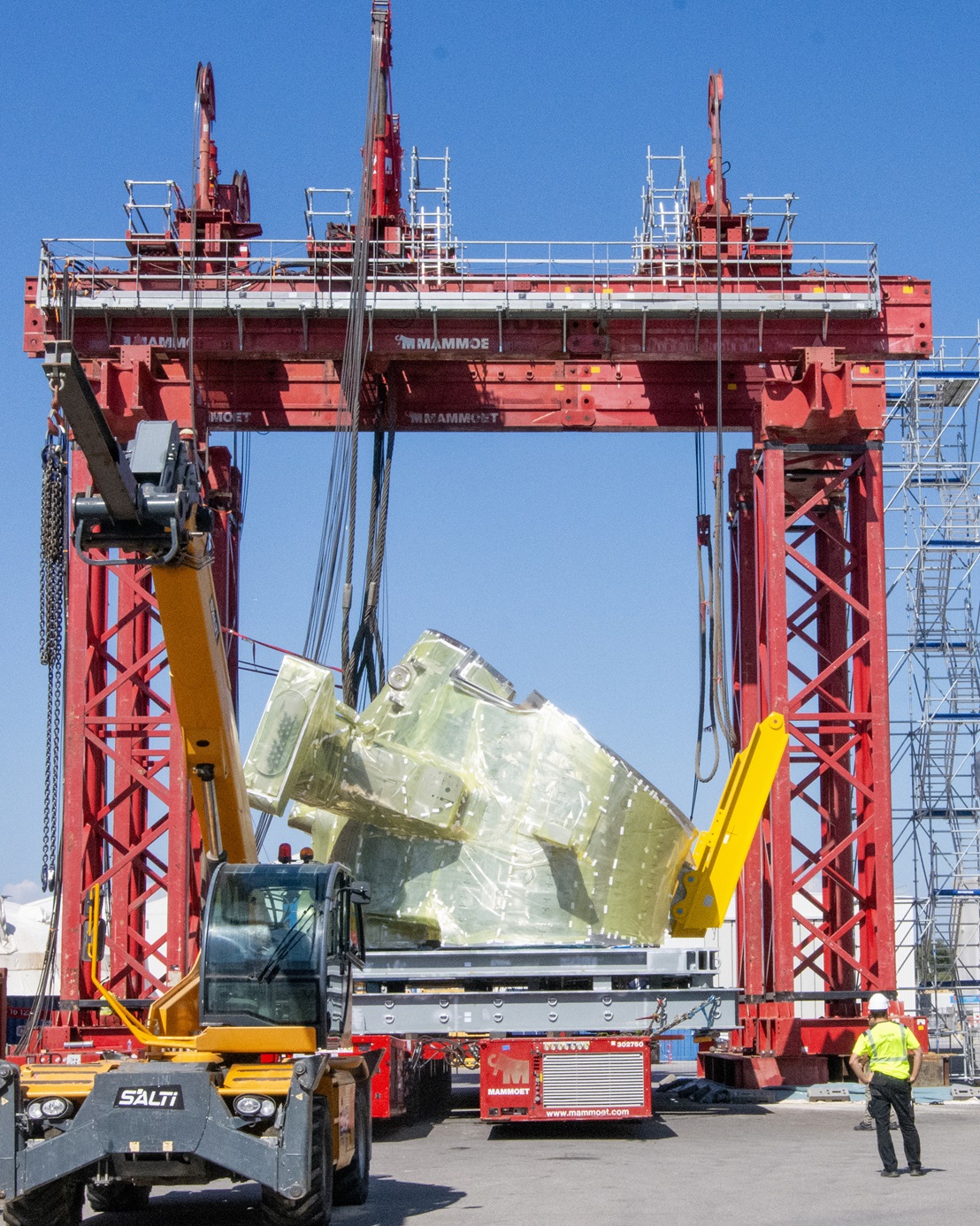
Sector in place for its Amanar vault
2025-06-17 - Covered in protective plastic for its day outdoors, sector #4 has been positioned under the gantry crane.


Pivoting toward the pit
2025-06-17 - The cranes are pivoting the sector module 90° in the clockwise direction so it can go over the tokamak pit wall narrow end first.

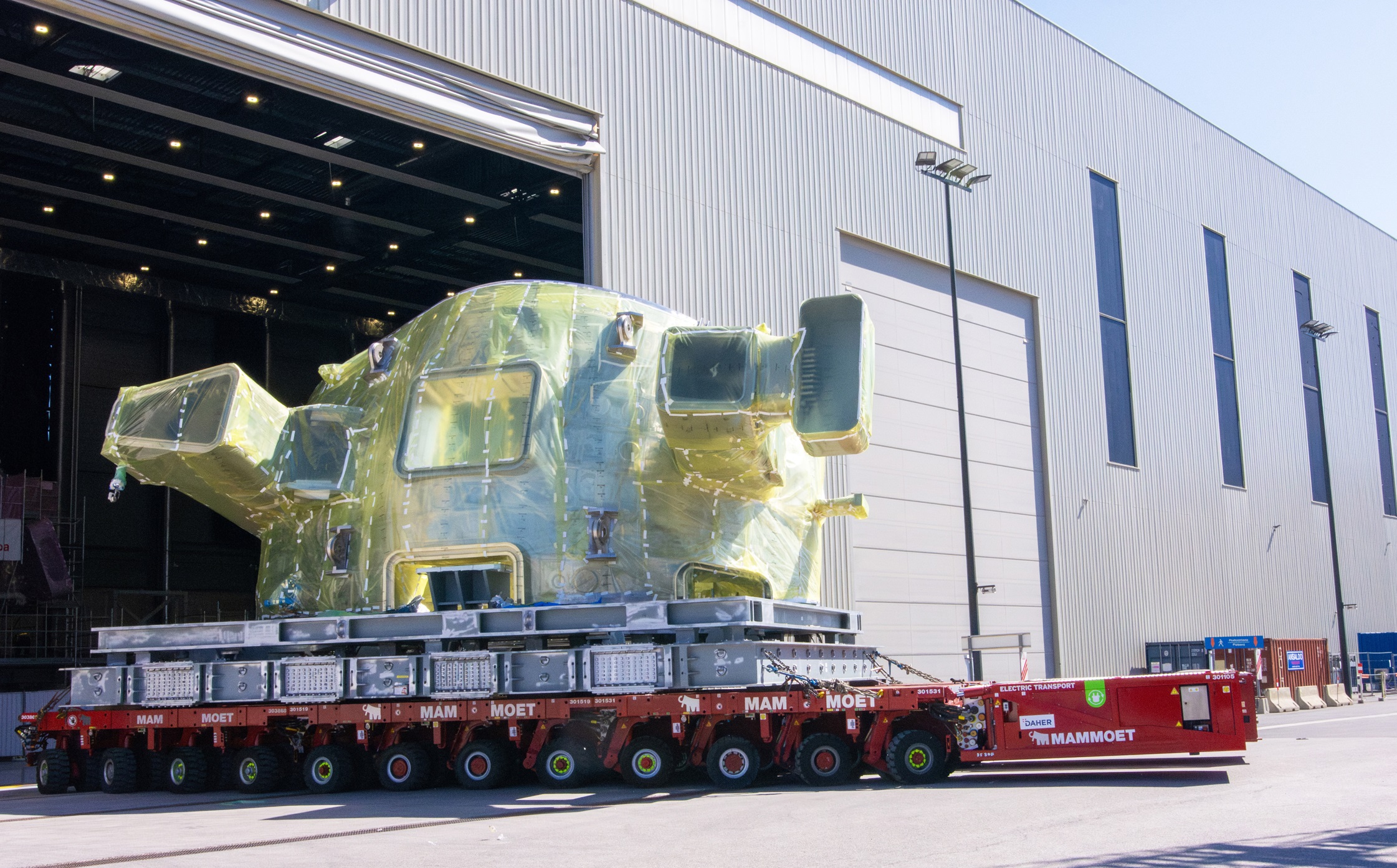
Outdoor rotation planned
2025-06-16 - This vacuum vessel sector from Europe, sector #4, must be rotated so that the bevel edges on the inaccessible side can be repaired. A gantry crane has been installed outdoors for the operation.

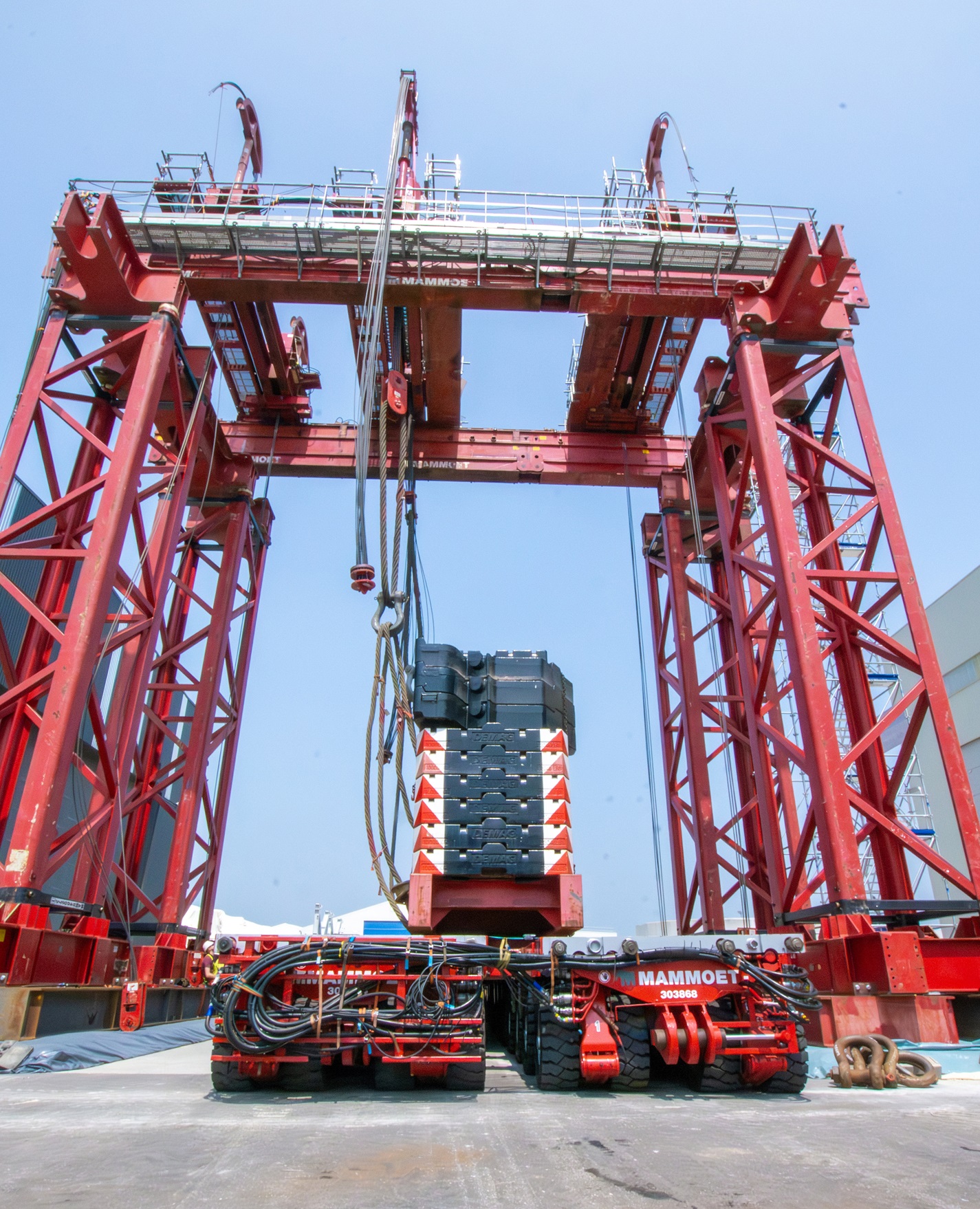
Testing the specialized gantry crane
2025-06-04 - A gantry crane has been installed outside of the Cryostat Workshop for a special operation—the lifting and rotation of vacuum vessel sectors that require repair on their second sides. The crane was load tested in early June.

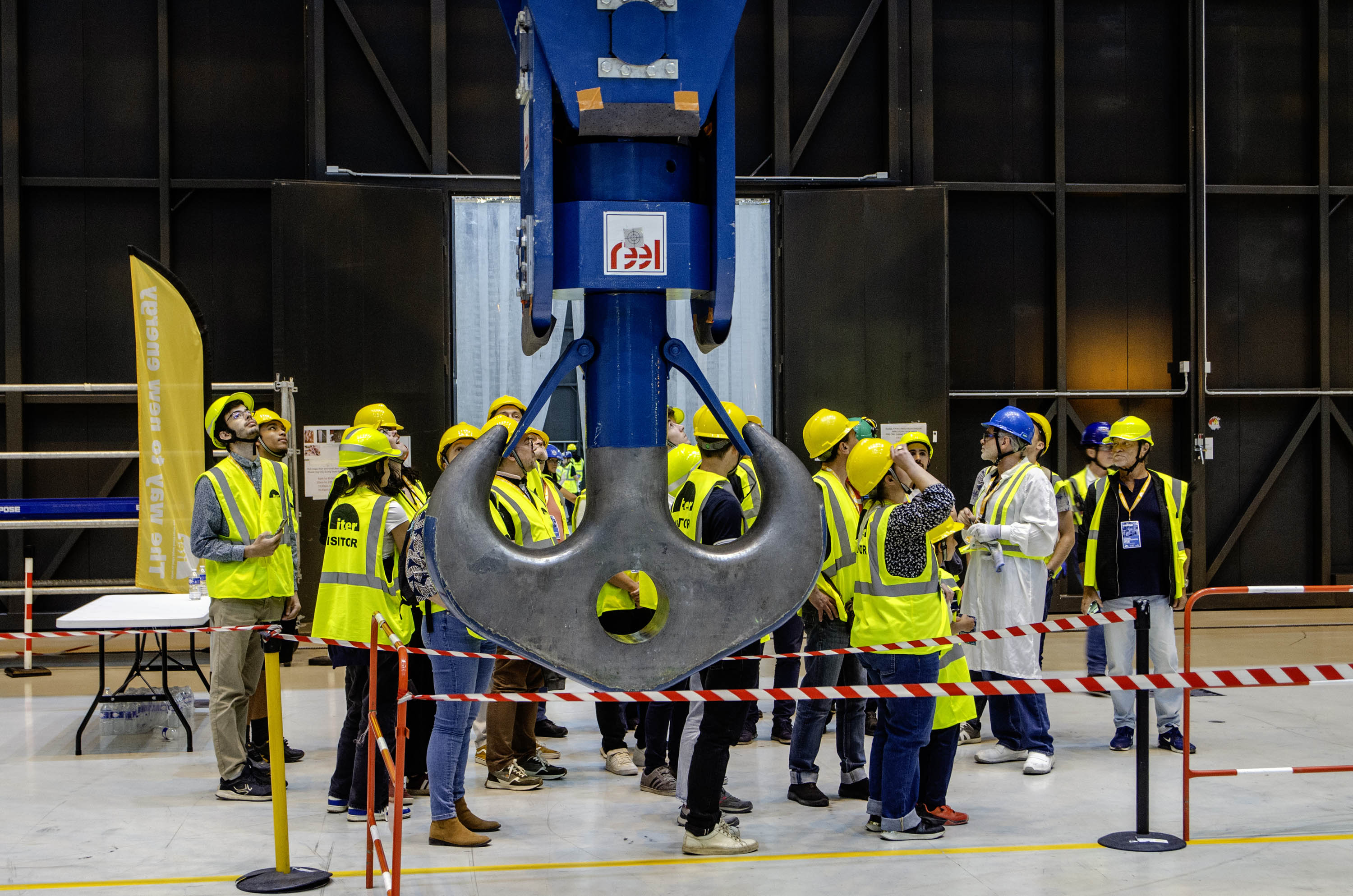
Large hooks
2025-05-17 - The size of the overhead crane hooks must have surprised more than one visitor on 17 May 2025 during the semi-annual ITER Open Doors Day. The combined lift capacity of the largest overhead bridge cranes is 1,400 tonnes.

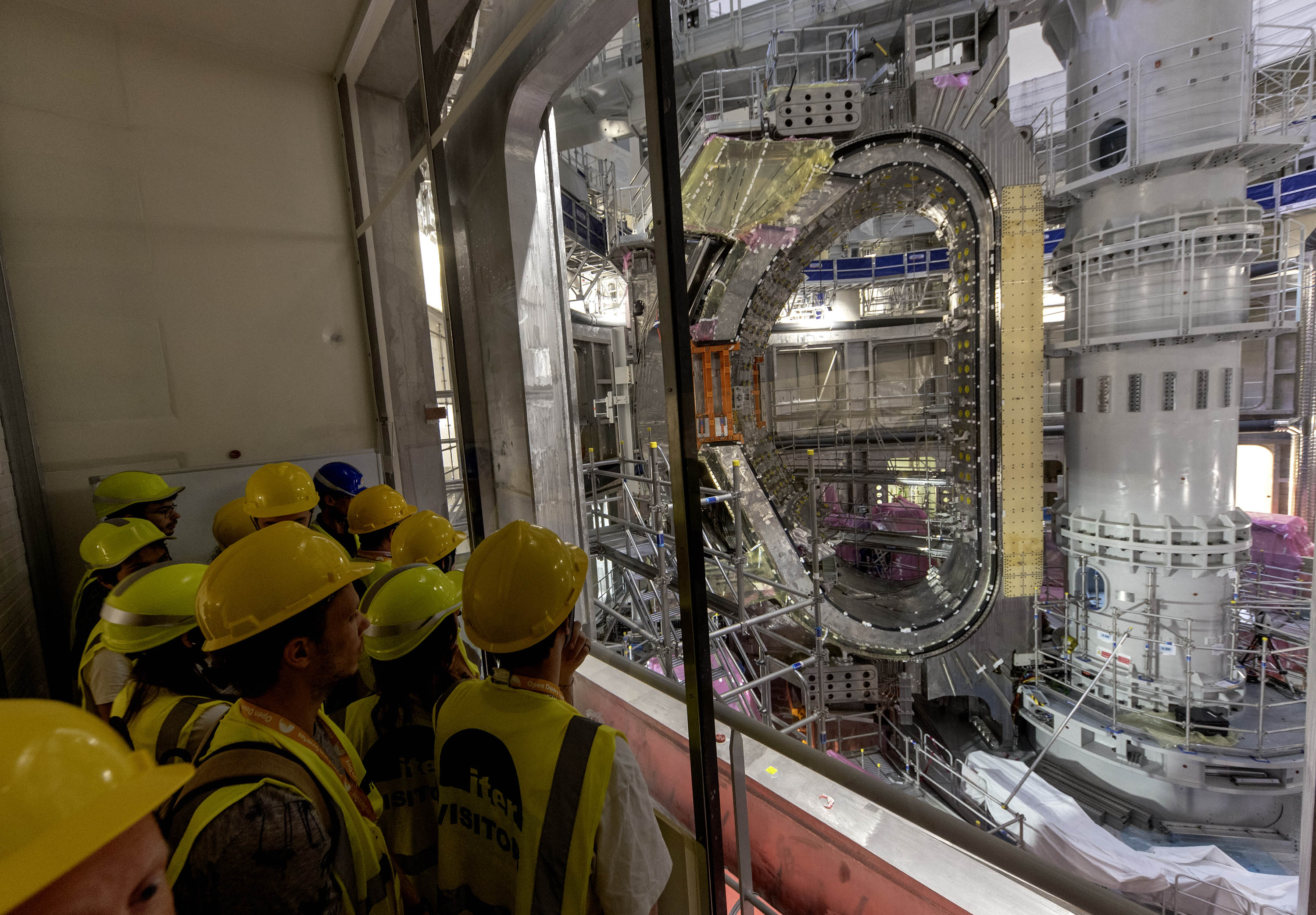
Front-row view
2025-05-17 - The first Open Doors Day of 2025 was well-timed ... only one month before the first of nine vacuum vessel sectors had been lowered into the tokamak pit.

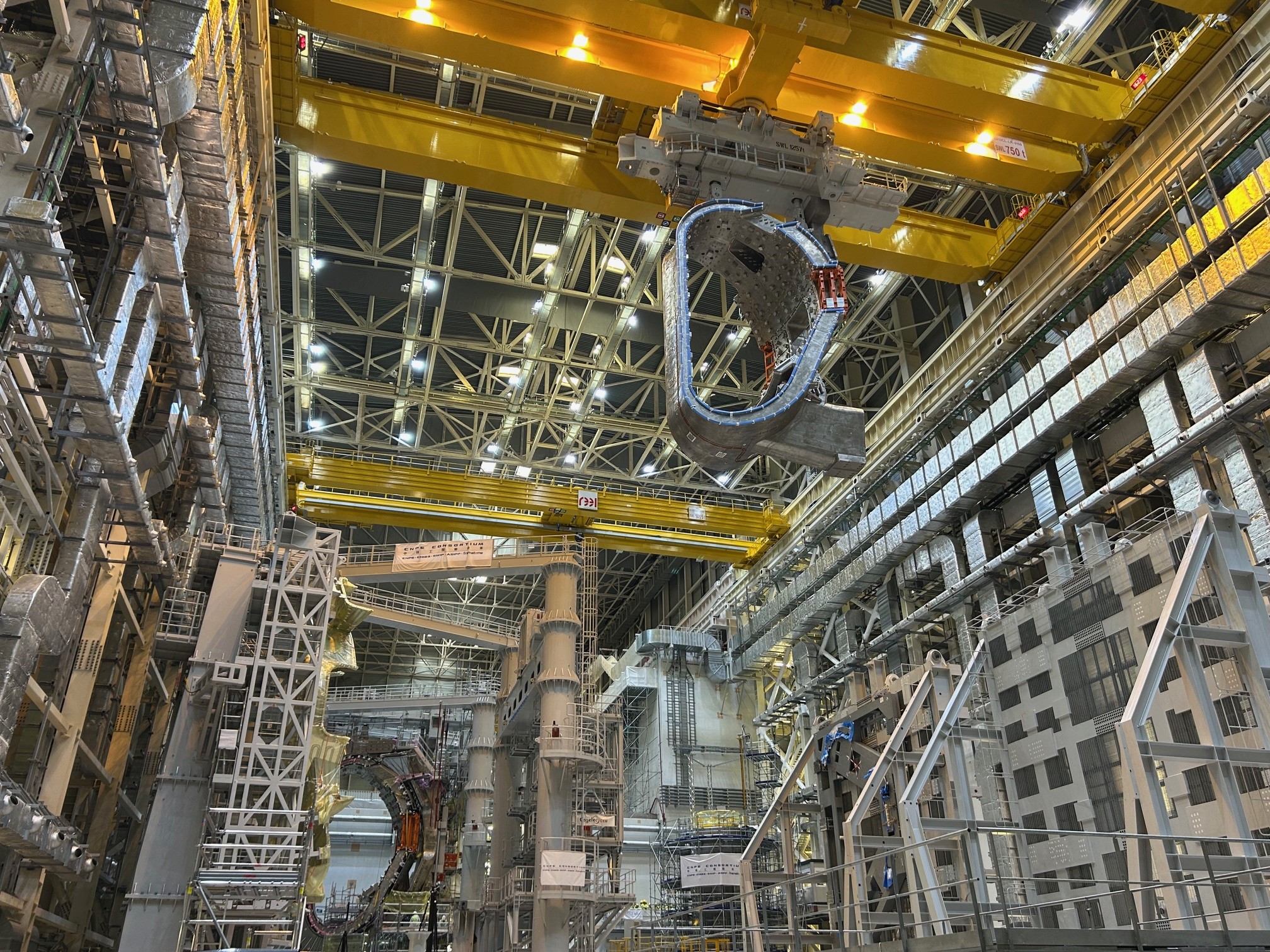
Up in the air
2025-05-15 - The overhead cranes winch the 440-tonne sector right up to the ceiling so that it will be able to pass over the front crossbar of the SSAT sub-assembly tool. The radial beam will be supported in the tool; the suspended sector will also be propped from below.


Transfer of sector #5 to tooling
2025-05-15 - On Thursday 15 May, vacuum vessel sector #5 is extracted from the upending tool (right) and transferred across the Assembly Hall to the standing tool where it will associated with other key machine components to become sector module #5.

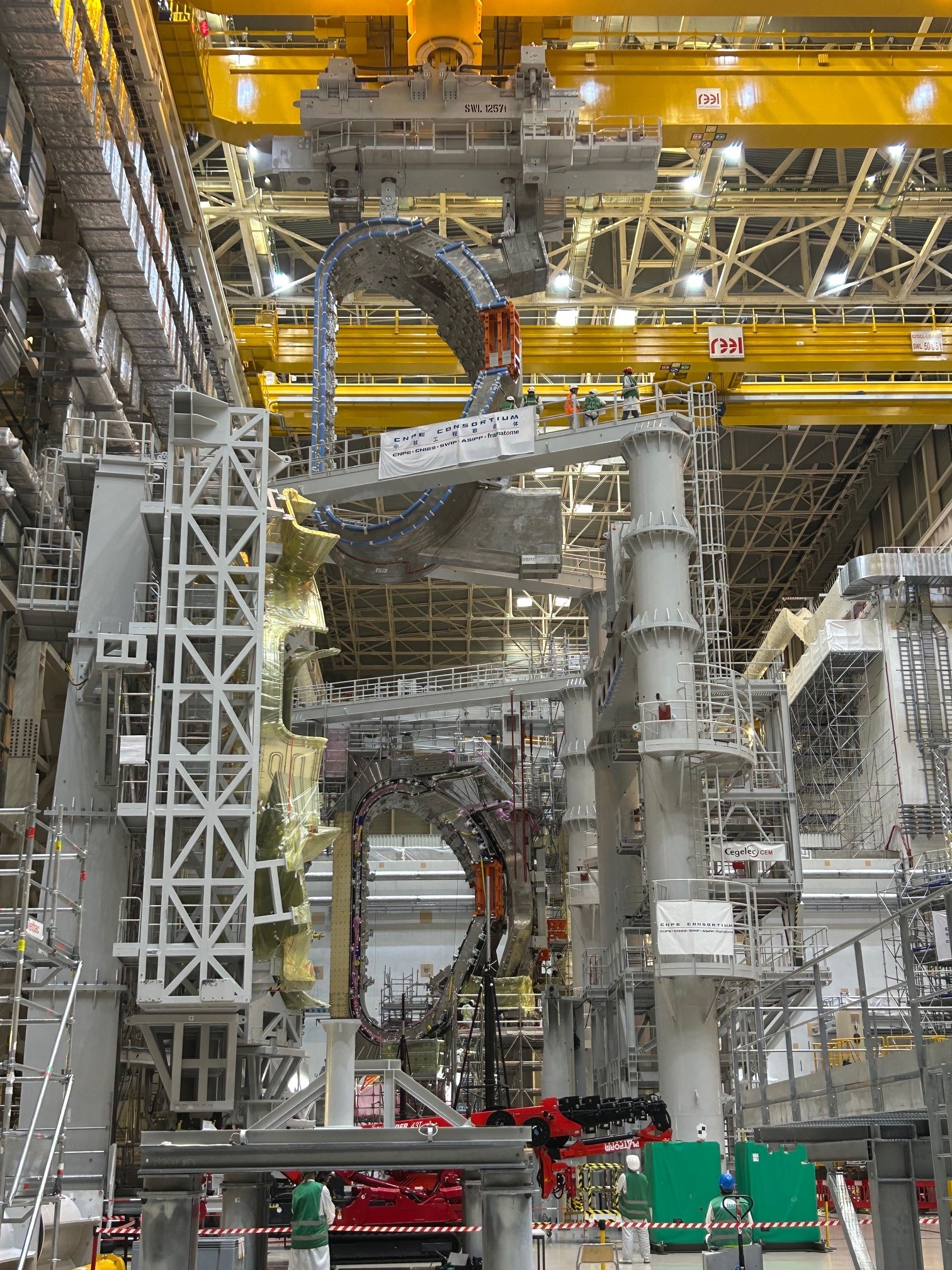
Tools are full
2025-05-15 - Vacuum vessel sector #5 is lowered in the tool that was vacated earlier this month by completed sector module #7. The association of sector #5 with its thermal shield and a pair of toroidal field coils will take approximately six months.

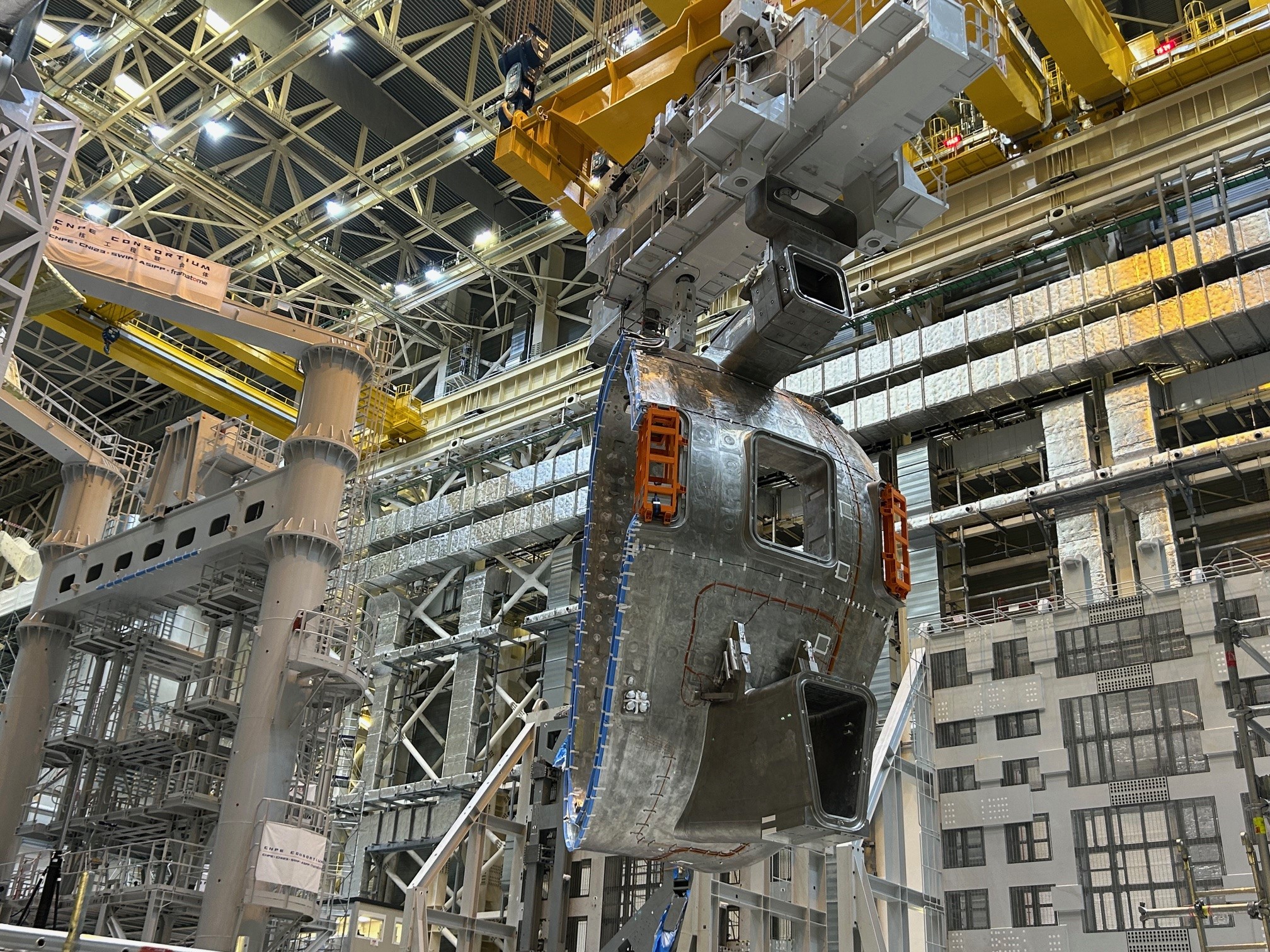
Attached to a radial beam
2025-05-15 - The radial beam (directly above the component) plays an important role. The sector remains attached to it all through the sub-assembly process... as it is extracted from the upending tool, as it is received into the sector sub-assembly tool, as it is transferred into the pit, and during in-pit vacuum vessel welding.

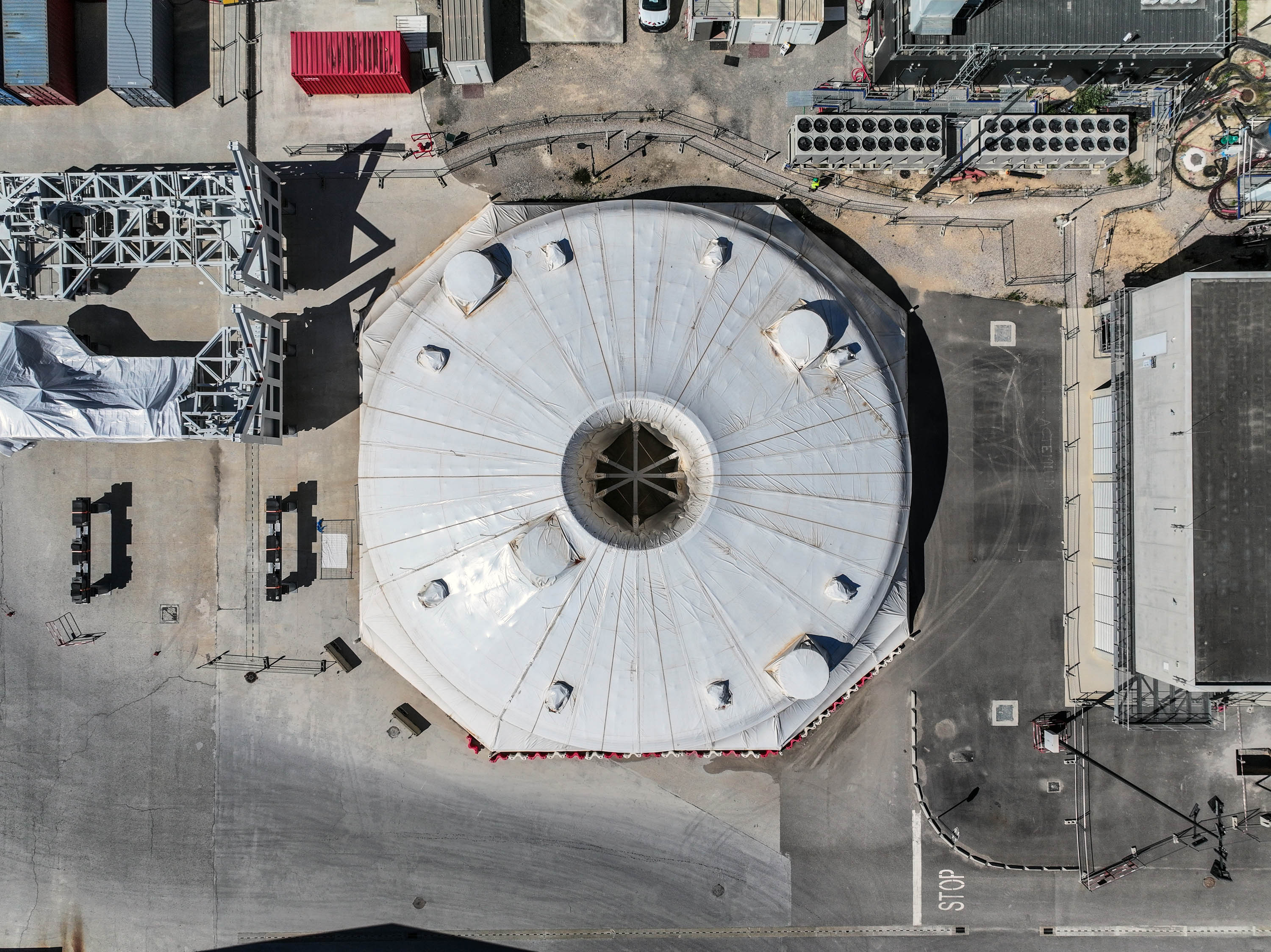
Top lid awaits
2025-05-14 - A drone hovers above a 665-tonne component stored on the ITER platform—the top lid of the ITER cryostat. In the top right quadrant of the photo, a worker in yellow (look closely!) gives a sense of the component's scale. (Photo EJF Riche - ITER Organization)

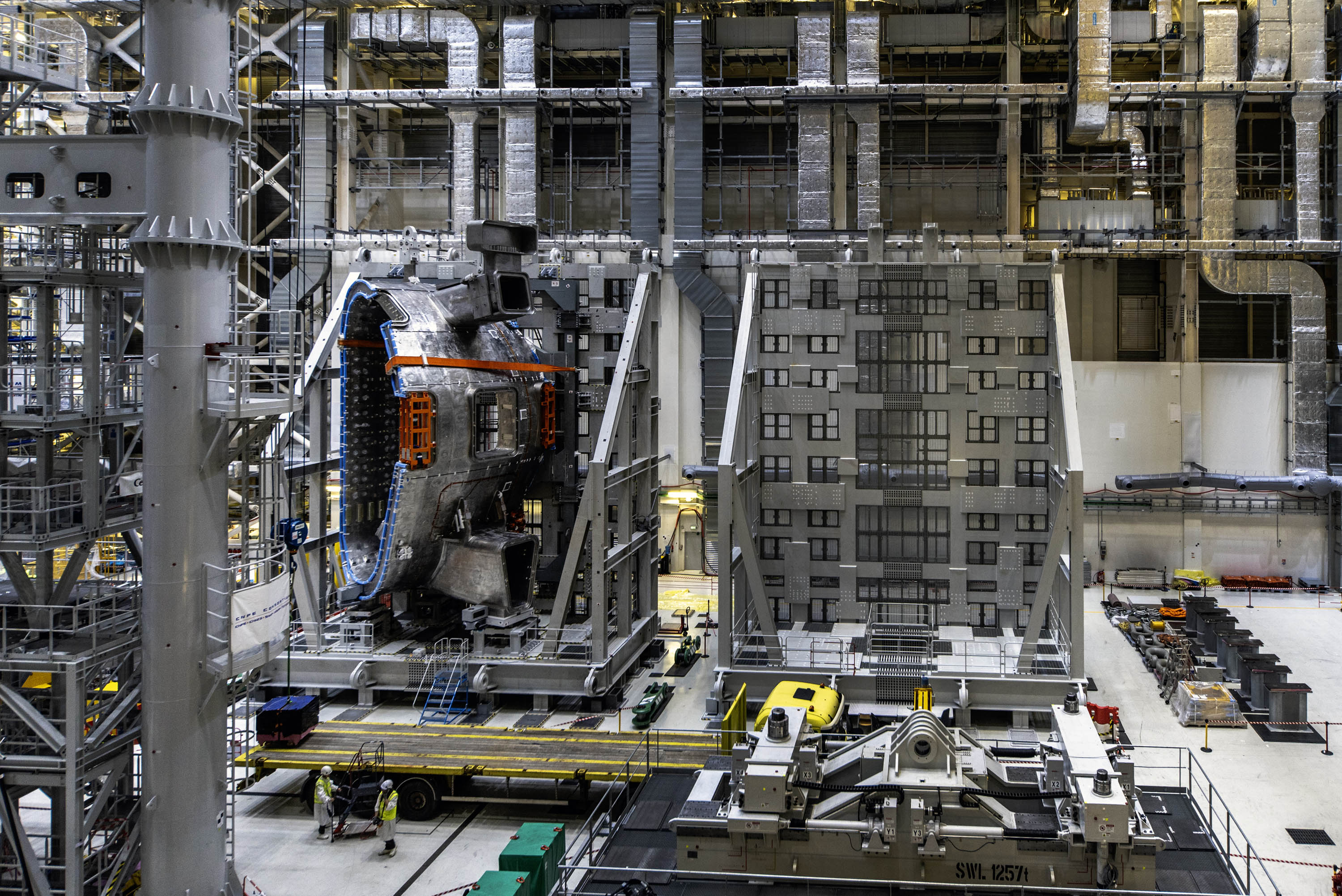
Two upending tools
2025-05-12 - ITER's two upending tools stand side by side in the Assembly Hall, with one hosting a 440-tonne vacuum vessel sector. For an idea of their actual size, see the two workers in yellow at the bottom left of the frame.

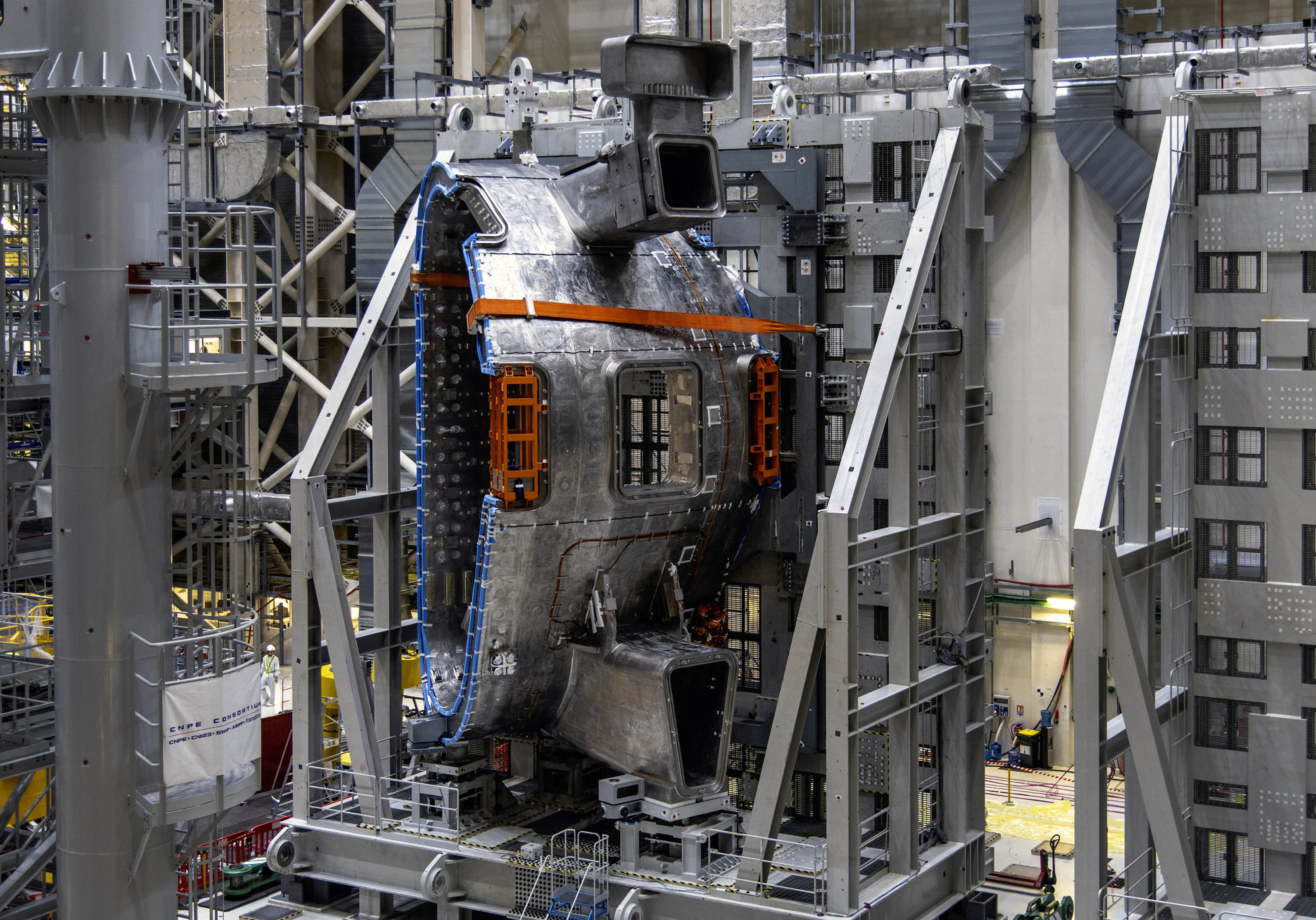
Sector #5 is vertical
2025-05-09 - A specialized upending tool is used to raise sector #5 to vertical. In the next phase of operations, the overhead cranes will lift the 440-tonne component into the sub-assembly tool that was recently vacated by sector module #7 (now installed in the tokamak pit).


Next sector for sub-assembly
2025-05-02 - Vacuum vessel sector #5 leaves the former Cryostat Workshop for the ITER Assembly Hall, where it will be raised to vertical and installed in sub-assembly tooling.


Next in line
2025-04-29 - This sector module is next in line for insertion in the tokamak pit. The assembly suspended in vertical tooling is composed of vacuum vessel sector #6 at the centre, which is surrounded by a thin layer of thermal shielding and two toroidal field coils that form an enveloping superstructure. This 1,200-tonne module will be transferred into the assembly pit in July.

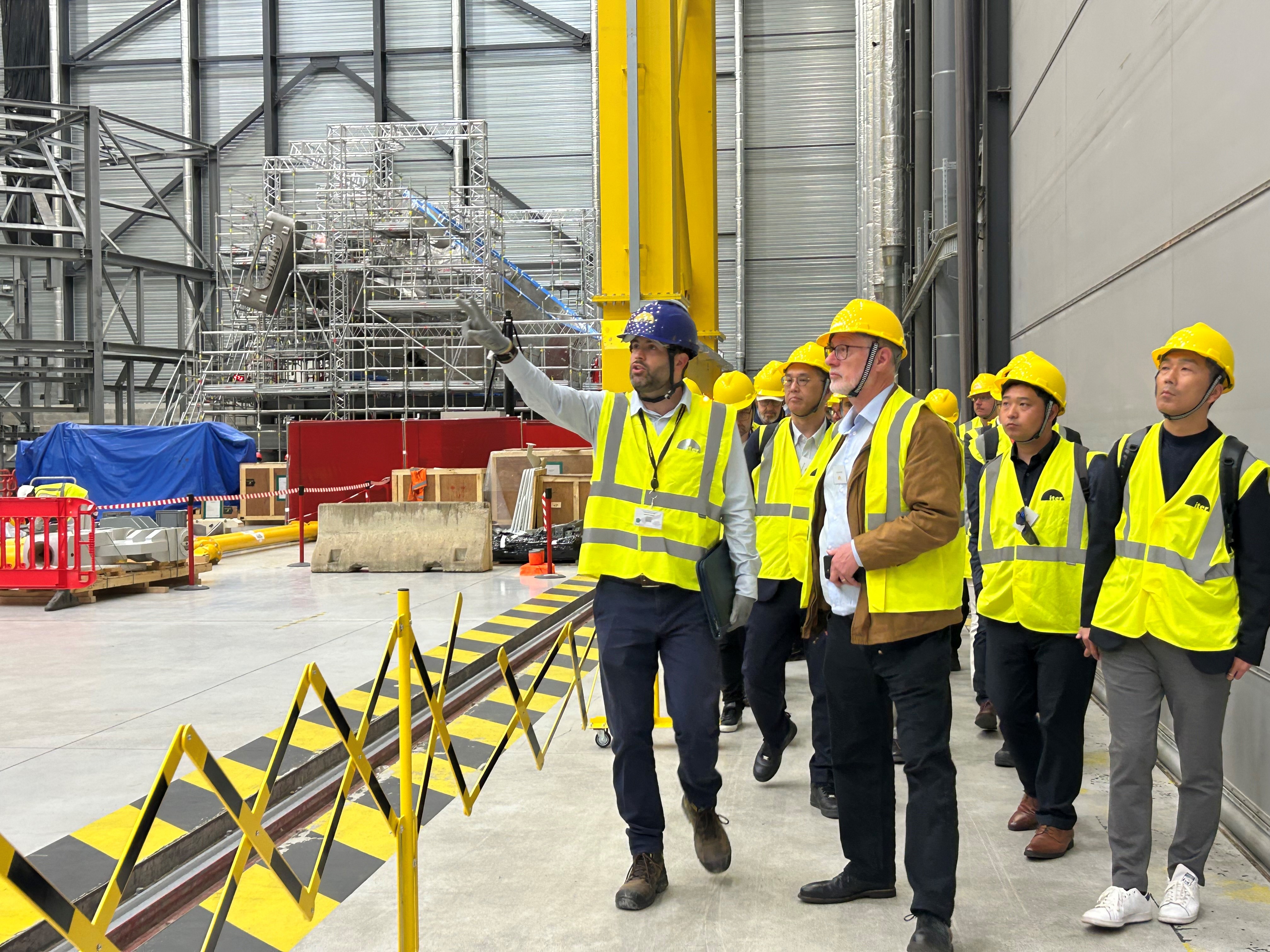
Seeing ITER before talking business
2025-04-24 - Participants to the 2025 ITER Business Forum visit the ITER worksite on Tuesday 23 April, one day before the conference program officially gets underway. Here, the group is touring the Cryostat Workshop, where several vacuum vessel sectors are stored horizontally.

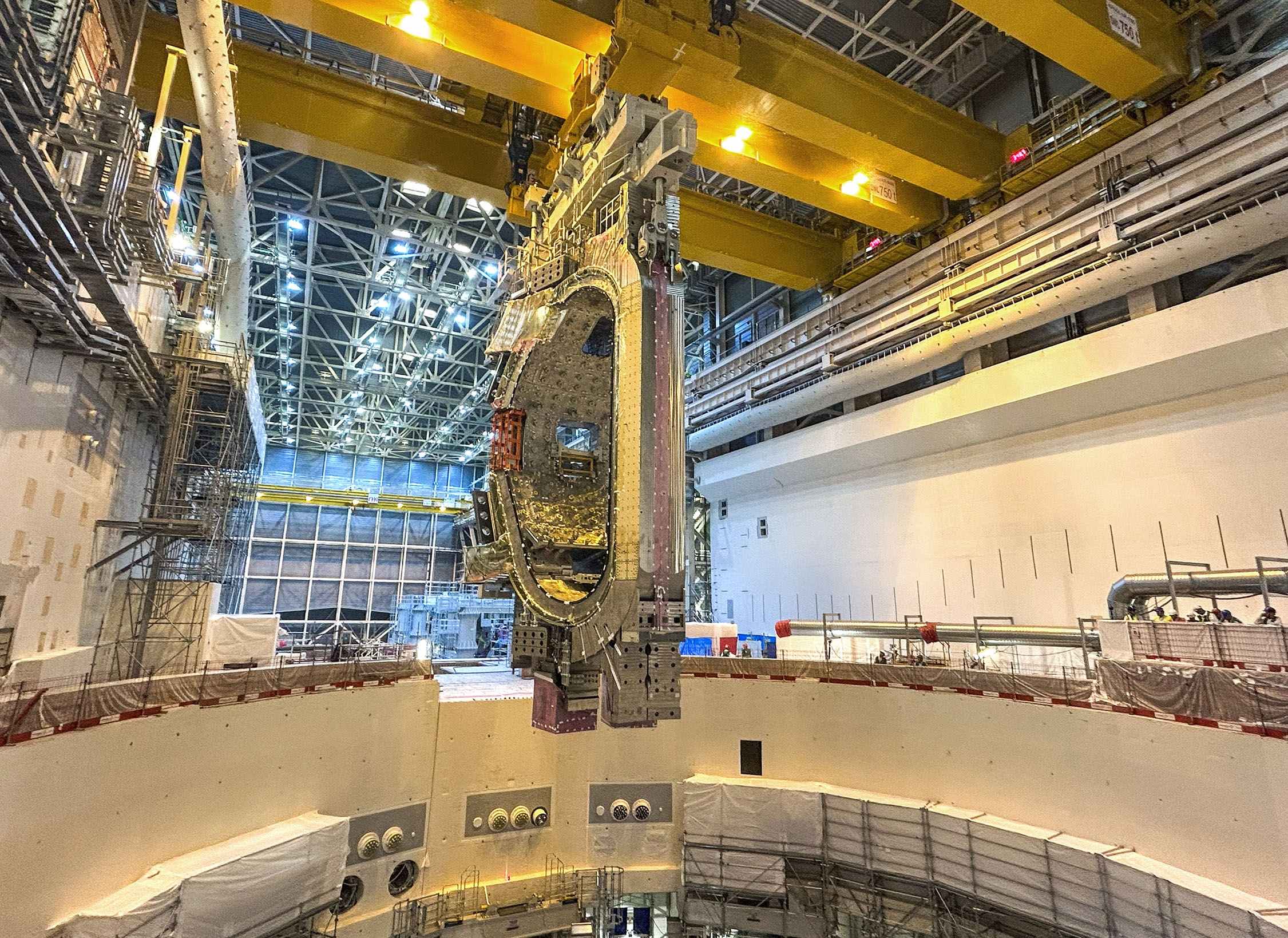
The most delicate moment
2025-04-14 - The module commences its descent into the 30-metre-deep tokamak pit. This last phase of the transfer is also the most delicate as the “pendulum effect” increases with the length of the cables.

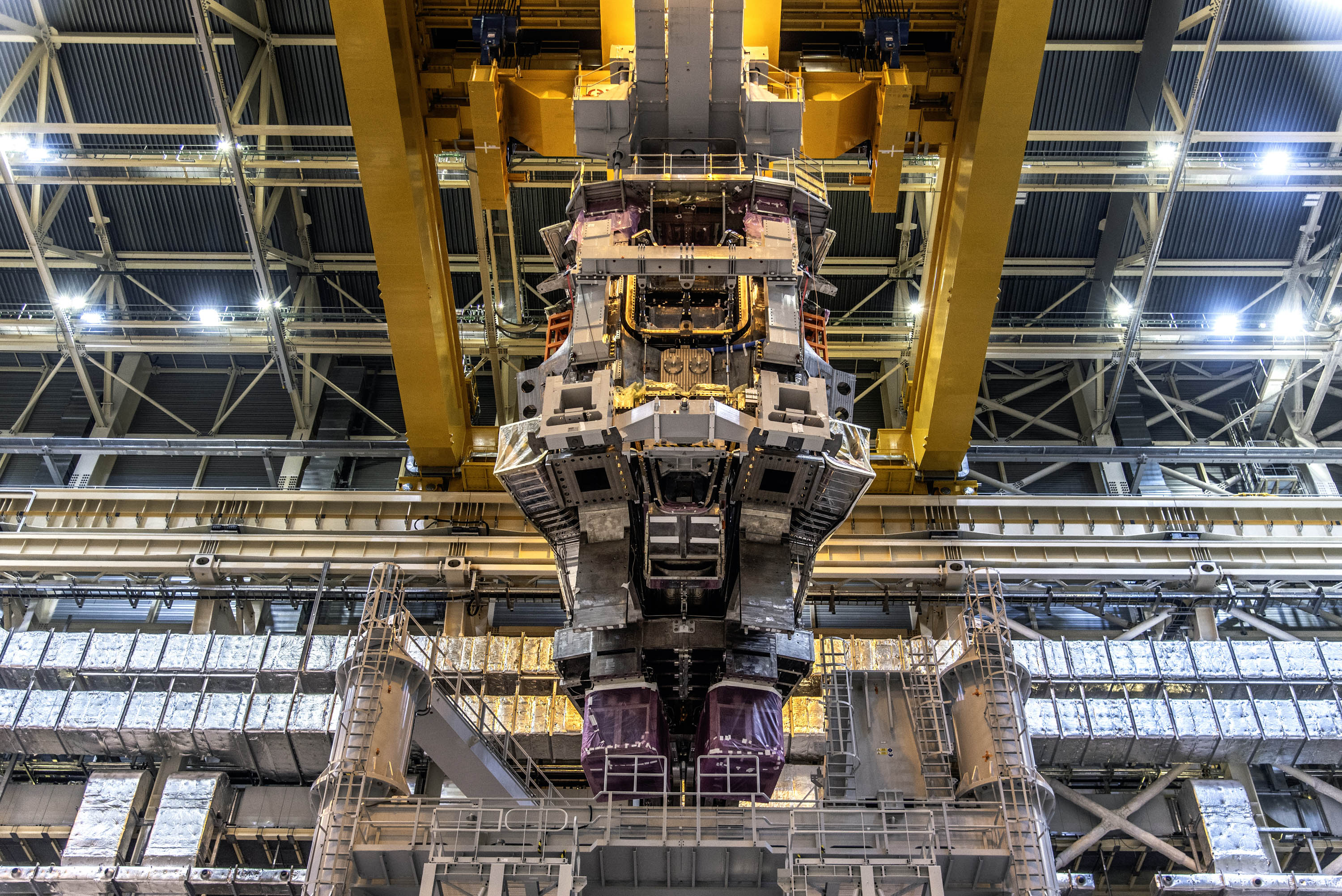
Sector module #7 from below
2025-04-11 - This view from below illustrates the extreme complexity of a sector module. Wrapped in pink plastic are the “feet” of the toroidal field coils that will be bolted to gravity supports at the bottom of the tokamak pit.

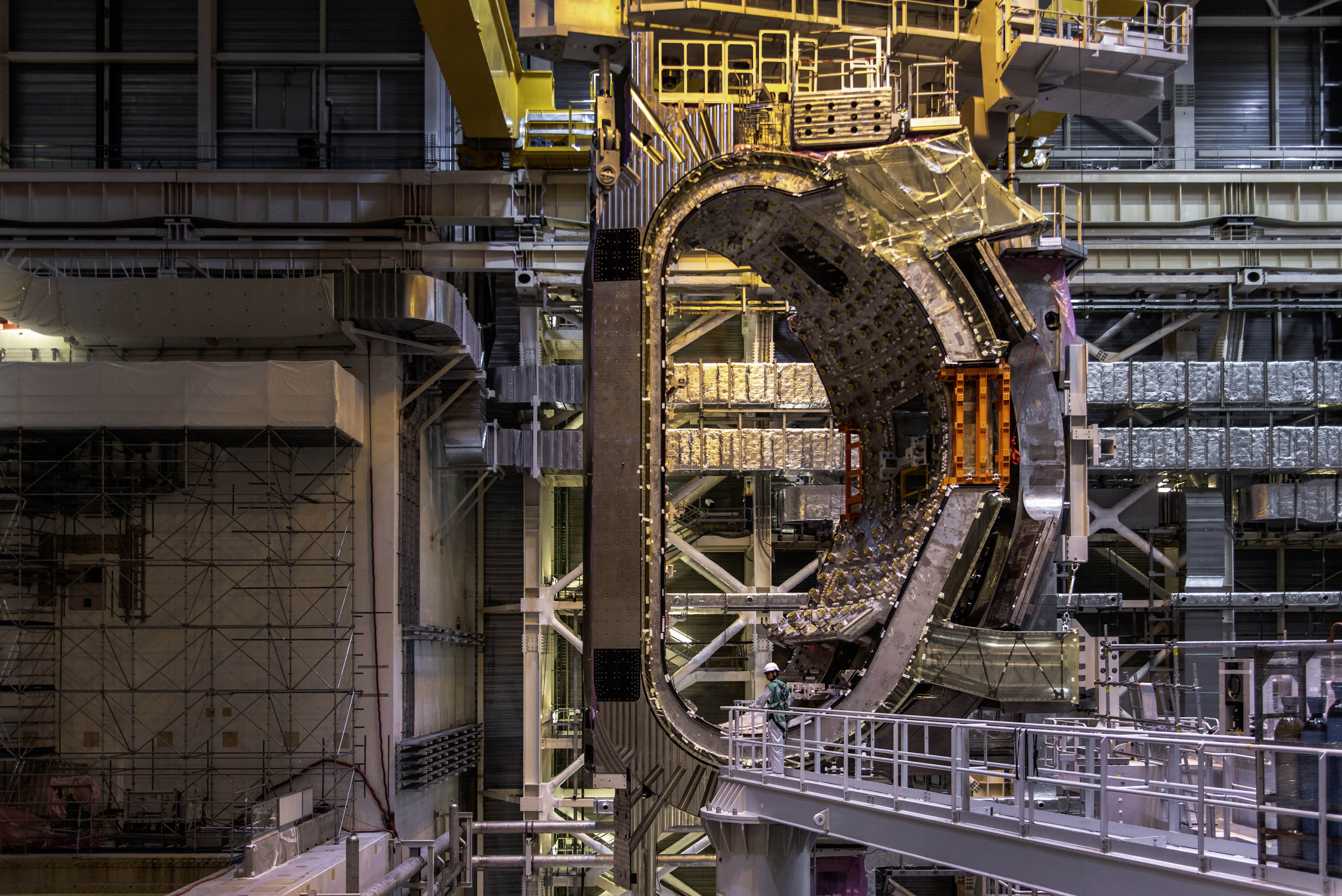
Can you spot the spotter?
2025-04-11 - Dwarfed by the 18-metre-tall module, this “spotter” in his green vest monitors the approach of the load as it nears the wall separating the Assembly Hall from the tokamak pit.

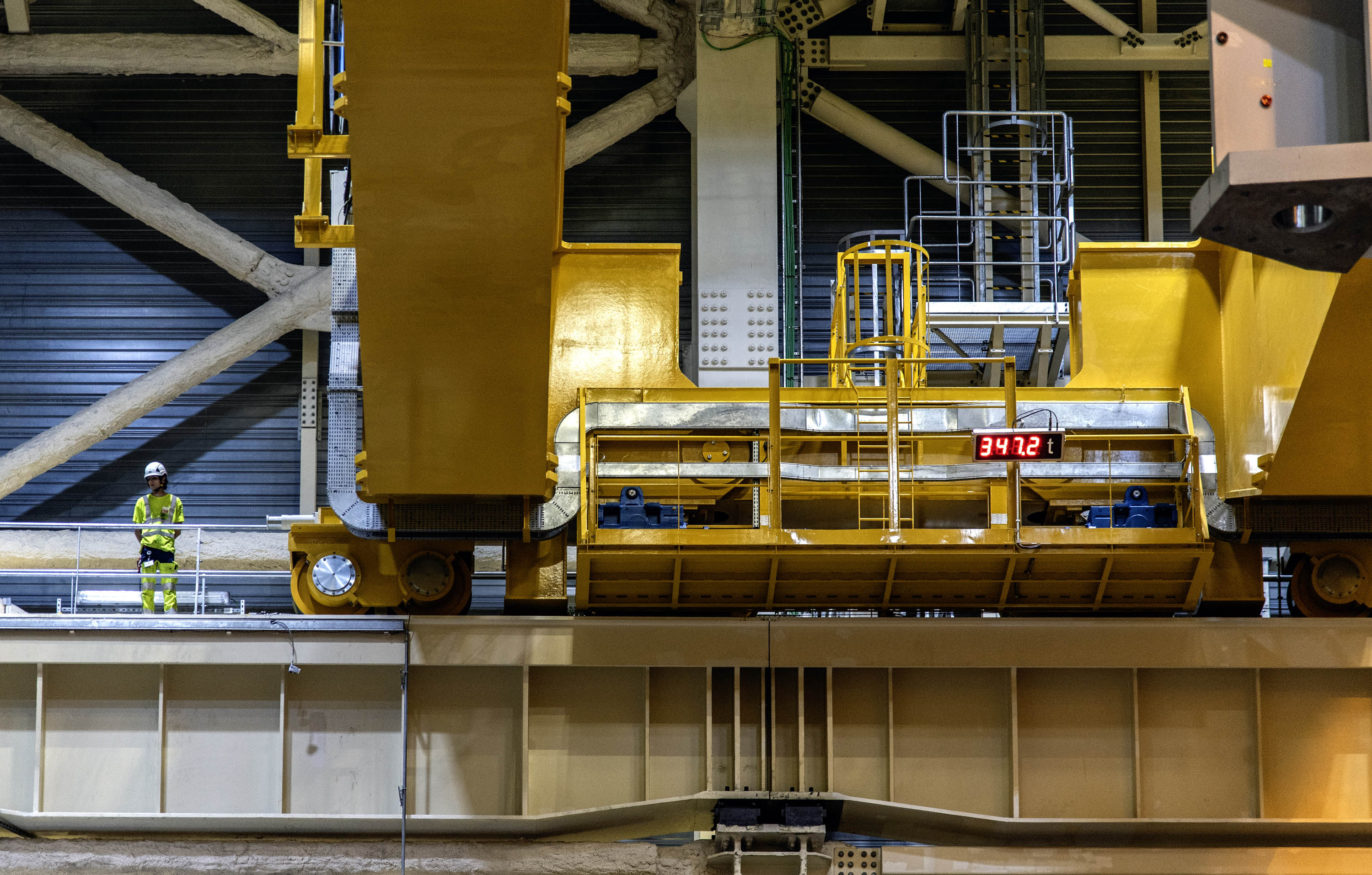
Sharing the load
2025-04-11 - The load is split between the four hooks of the double overhead travelling crane. The math is easy: the total load (including rigging) amounts to four times 347 tonnes, 100 tonnes below the nominal lifting capacity of the crane.


Sector module #7 installed in pit
2025-04-10 - The first of nine modules required to form the ITER plasma chamber is installed in the tokamak assembly pit on 10 April. Sector module #7 was created from one vacuum vessel sector, its thermal shield and two toroidal field coils in 6 months and 10 days; for reference, the first time this sub-assembly operation was carried out it took 18 months to accomplish.


One-ninth of the vacuum vessel lowered into the pit
2025-04-10 - On 10 April, three weeks ahead of schedule, sector module #7 is lowered into the tokamak pit. Eight more sector assemblies—massive components comprised of a vacuum vessel sector, its thermal shield, and two D-shaped toroidal field coils—will join this first unit to form the torus-shaped ITER vacuum vessel.

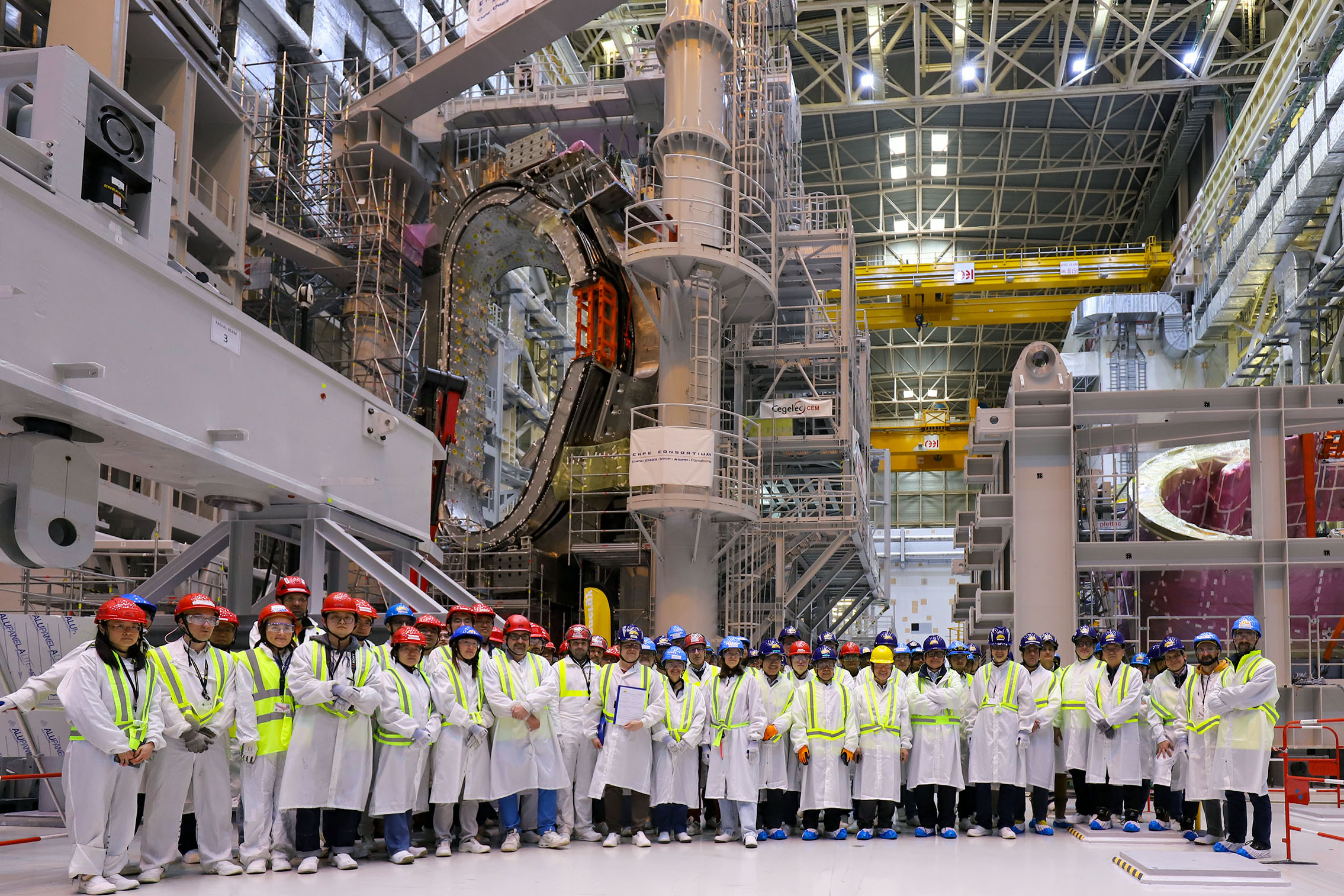
Sector module #7 completed
2025-03-28 - It took only 6 months and 10 days to assemble a 440-tonne vacuum vessel, its corresponding thermal shield and two 330-tonne toroidal field coils into a vacuum vessel module. On Friday 28 March, the teams that contributed to this remarkable achievement gathered at the foot of the completed module to celebrate.

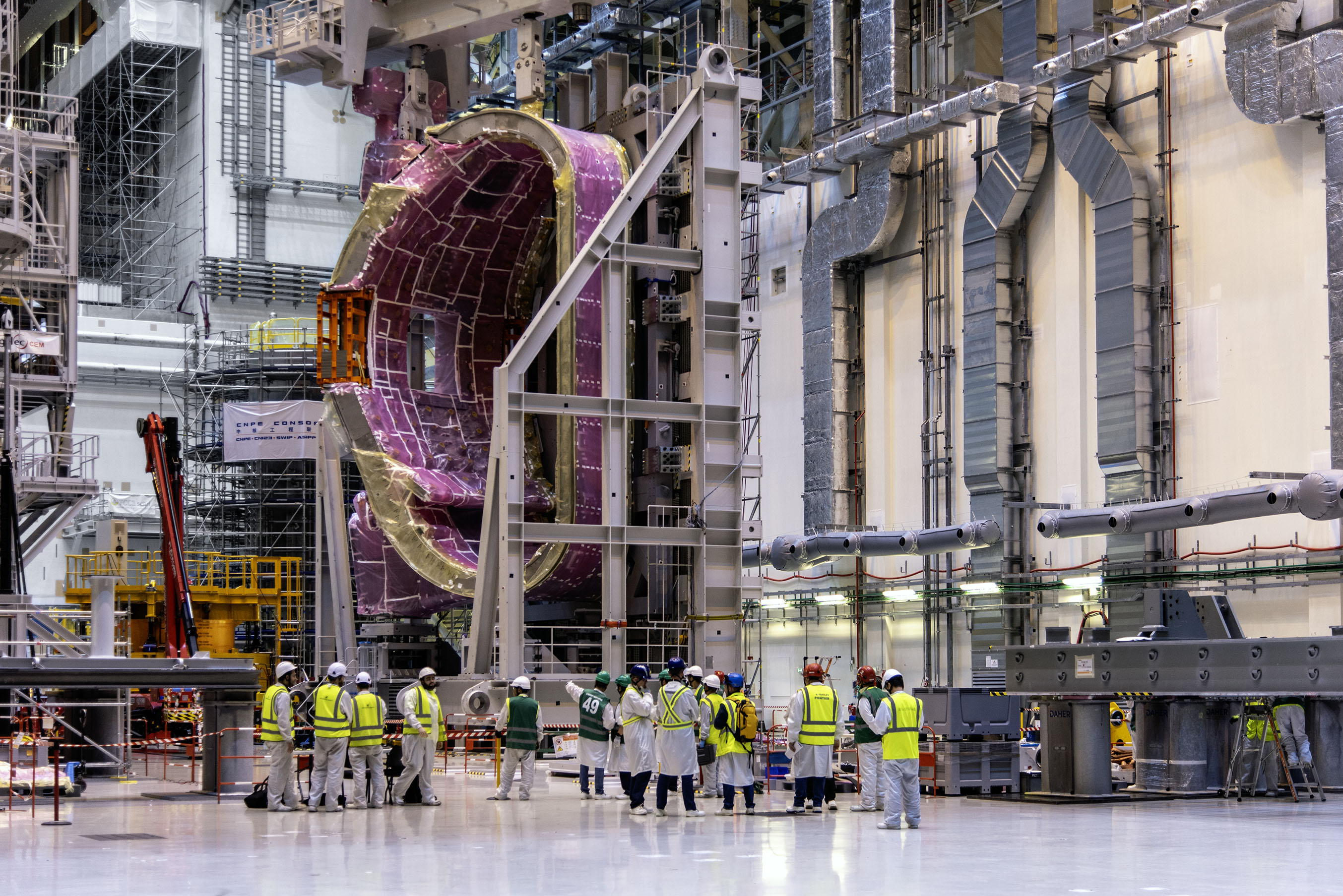
Sector 8 returns from the pit
2025-03-18 - After a brief stay in the tokamak pit, sector #8 has been returned to the upending tool, whose rigging has been prepared to receive its repaired side facing down. The sector will be "downended" and returned to the Cryostat Workshop for further remediation.

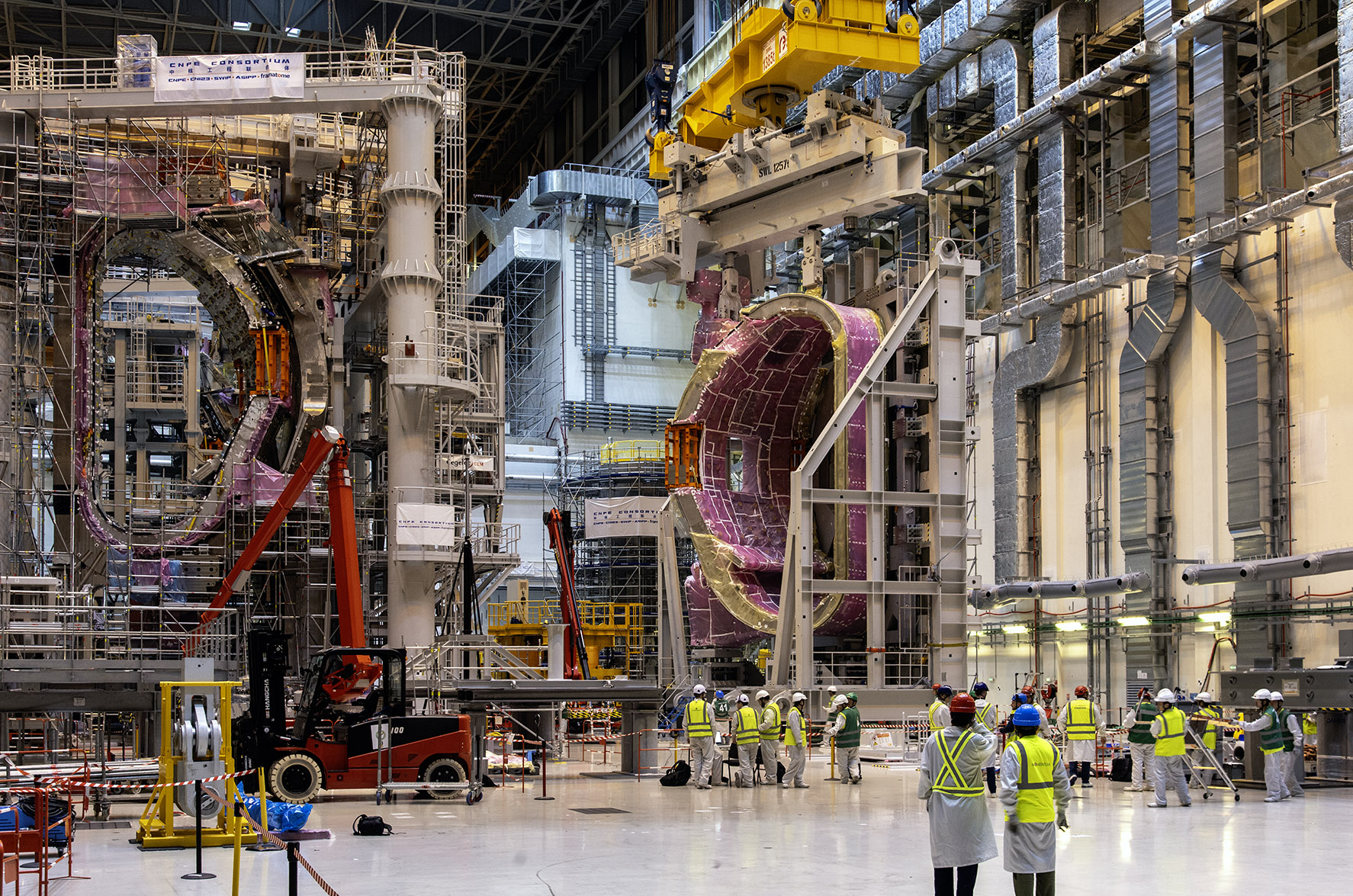
Two giant sectors
2025-03-18 - Sector 8, on the right, is a "bare" vacuum vessel sector. Sector 7, on the left, has been ensconced in its thermal shield and associated with two vertical magnet coils (toroidal field coils) to form a "sector module assembly." This assembly will be ready for permanent placement in the tokamak pit in April—the first of nine sector module assemblies that will form the vacuum vessel and its surrounding toroidal field magnet superstructure.

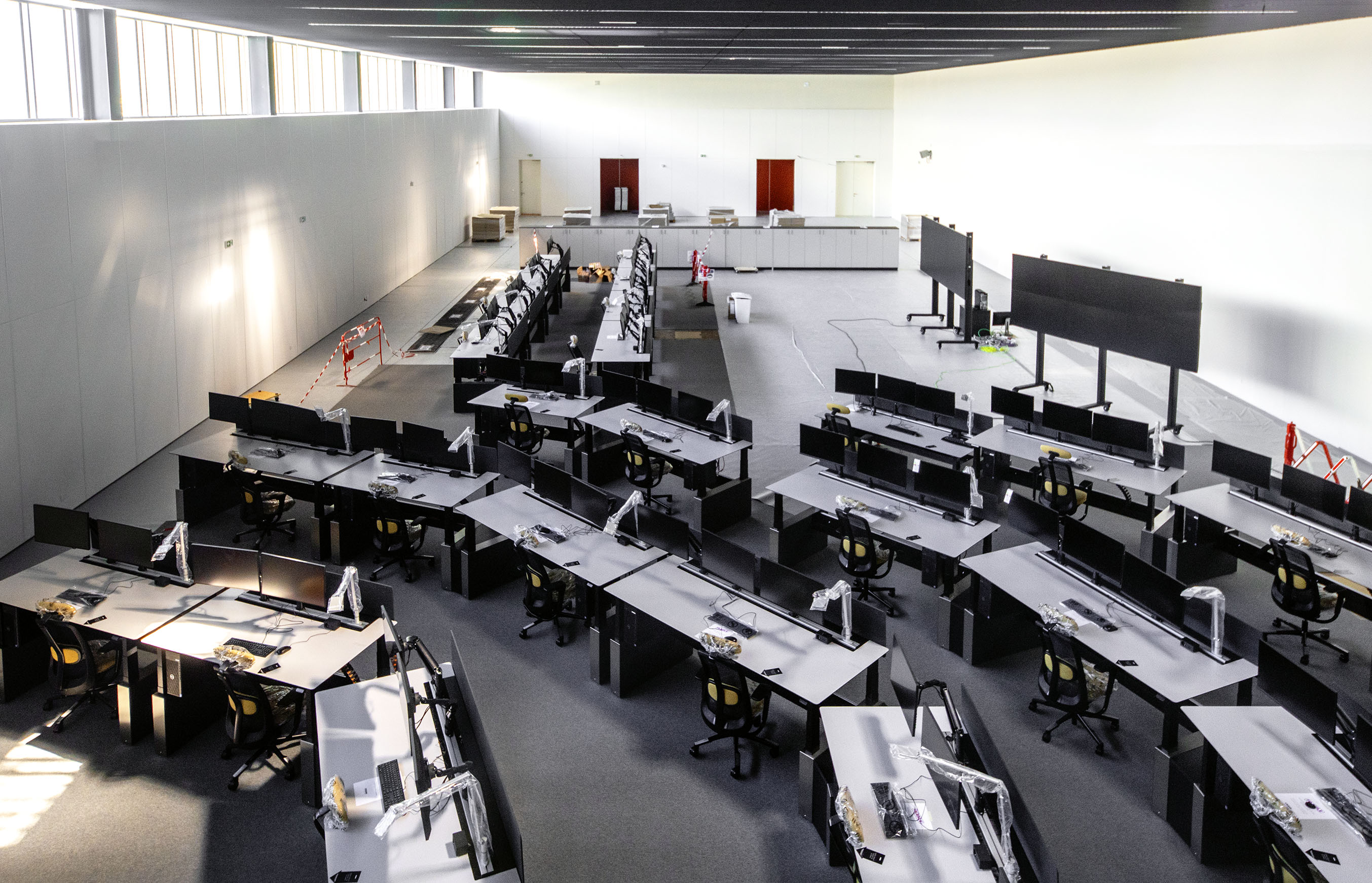
Equipping the control room
2025-03-18 - 30 operator stations in the ITER control room are now equipped with keyboards, mice and computer screens. This configuration will cover needs for the next seven to eight years.

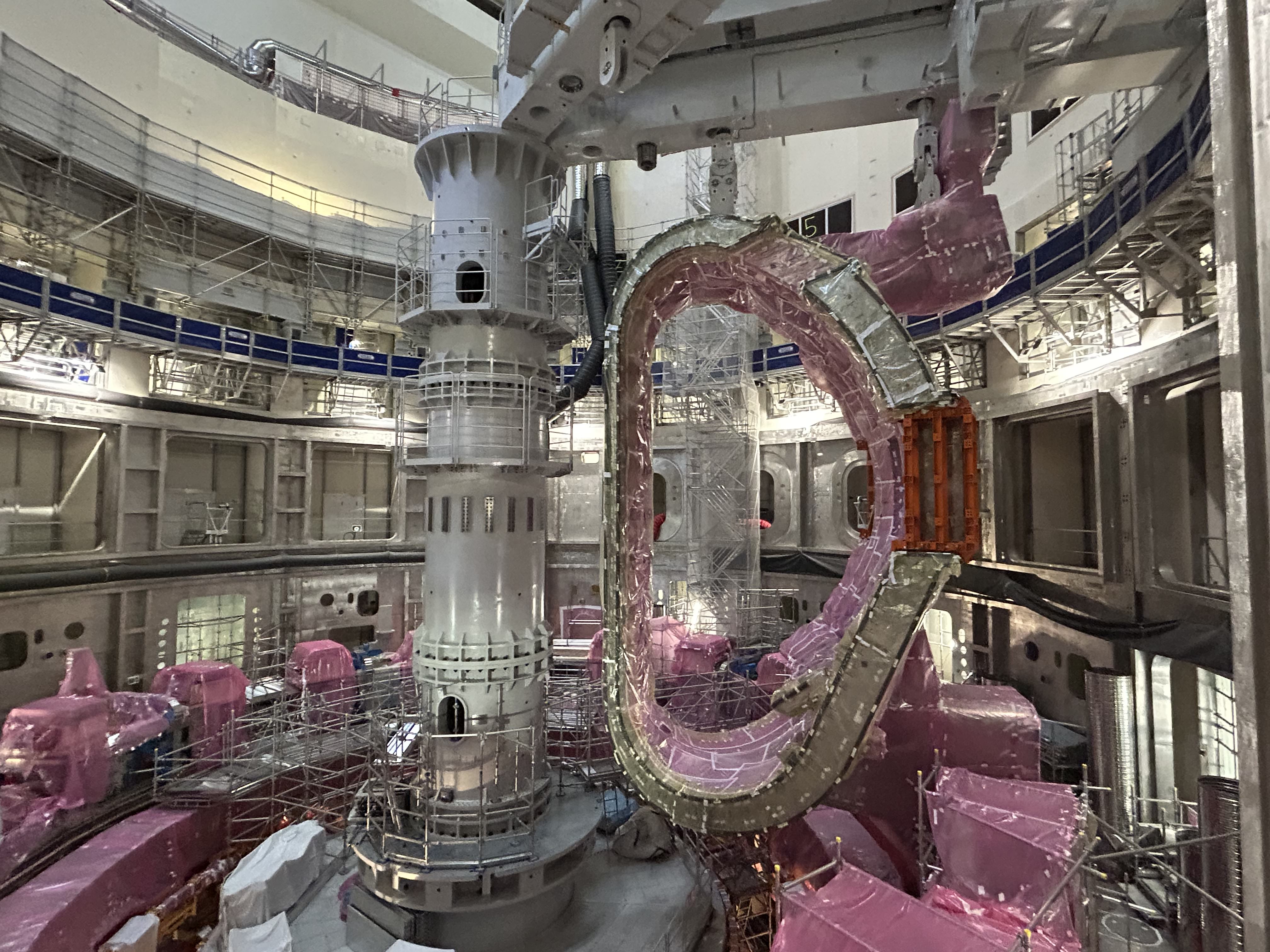
A short visit
2025-03-04 - This vacuum vessel sector is temporarily occupying one of the bays reserved for sector modules in the tokamak pit. Next month, though, a completed sector module assembly (a sector + vertical coils + thermal shield) will be permanently lowered into bay #7.

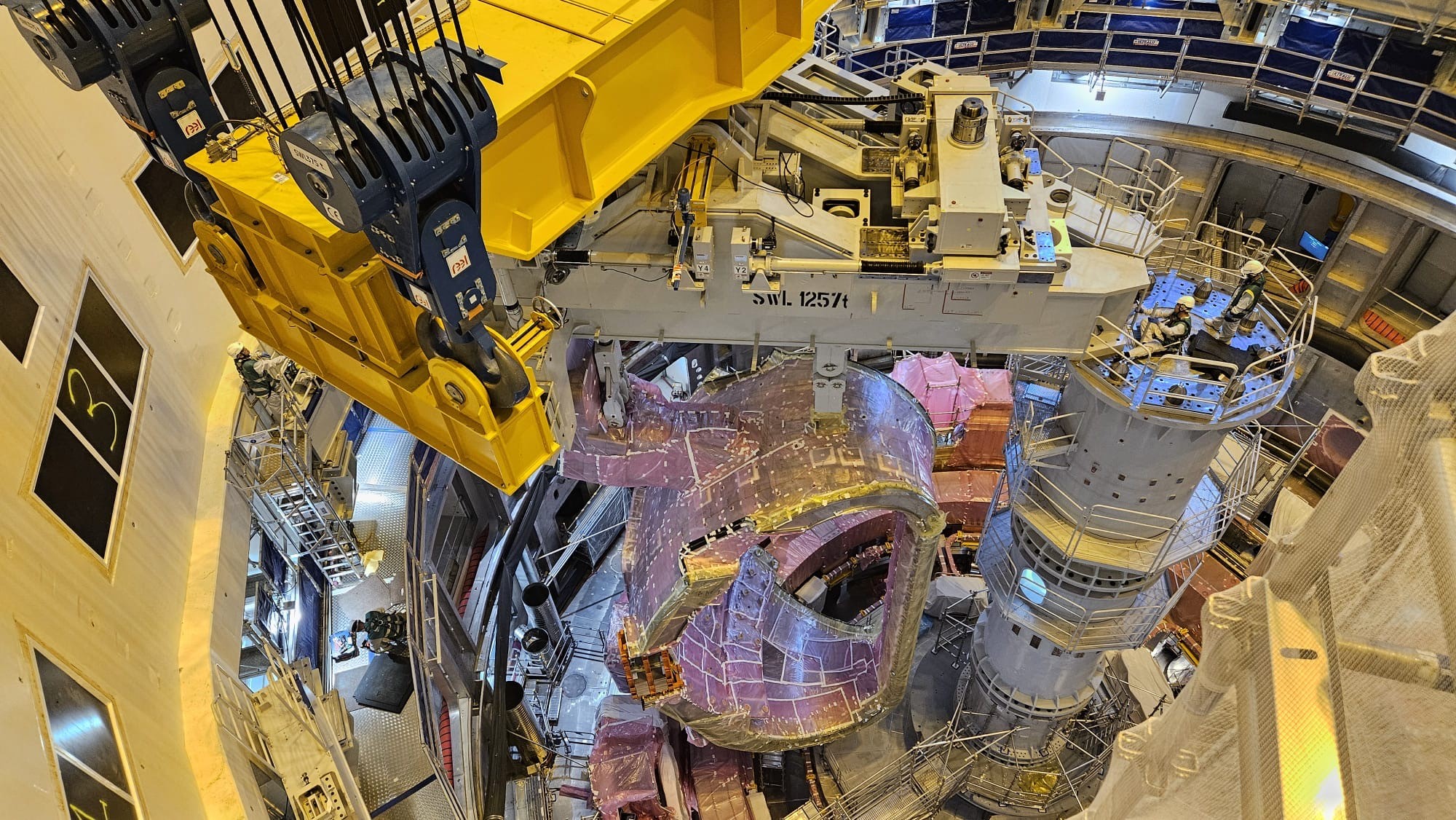
Temporarily in the pit
2025-03-04 - On Tuesday 4 March, sector #8 of the vacuum vessel is temporarily "parked" in the tokamak pit. The handling operation that will ensue has been designed to reverse the bevel joint region that will be exposed when the component is returned to a horizontal position.


Dedicated rigging
2025-03-04 - The overhead cranes cannot "grasp" major loads directly; instead, several elements of rigging intervene between the cranes and the components to be lifted. The dual crane heavy lifting beam (in yellow) allows the cranes to work in tandem and facilitates the rotation of components. The sector lift tool (in grey, with the marking SWL 1257t) interfaces with the radial beam suspending the sector and is equipped with a system to balance the load.

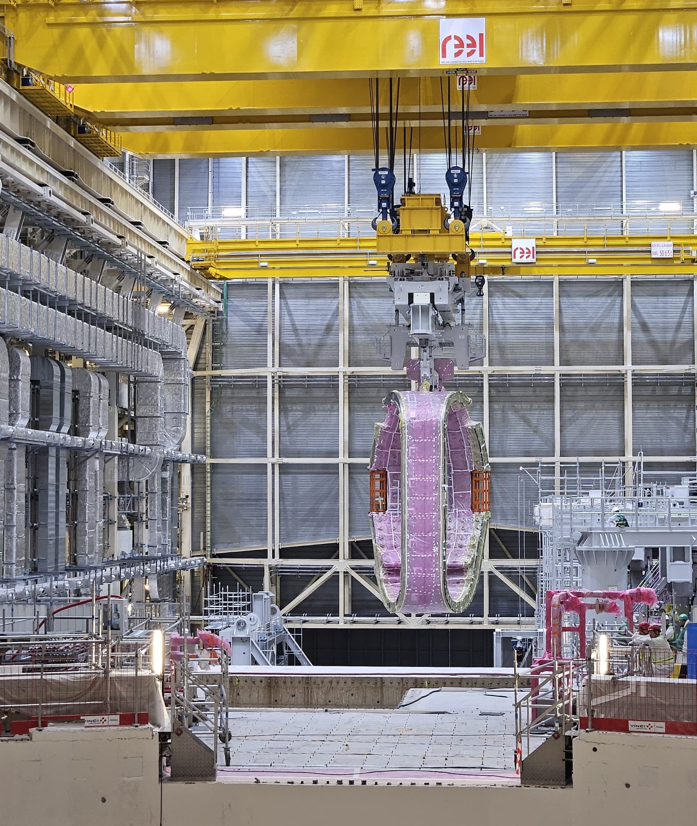
Travelling slowly
2025-03-04 - Two overhead cranes work together to transport the sector out of the upending tool, across the Assembly Hall, and into the tokamak pit.

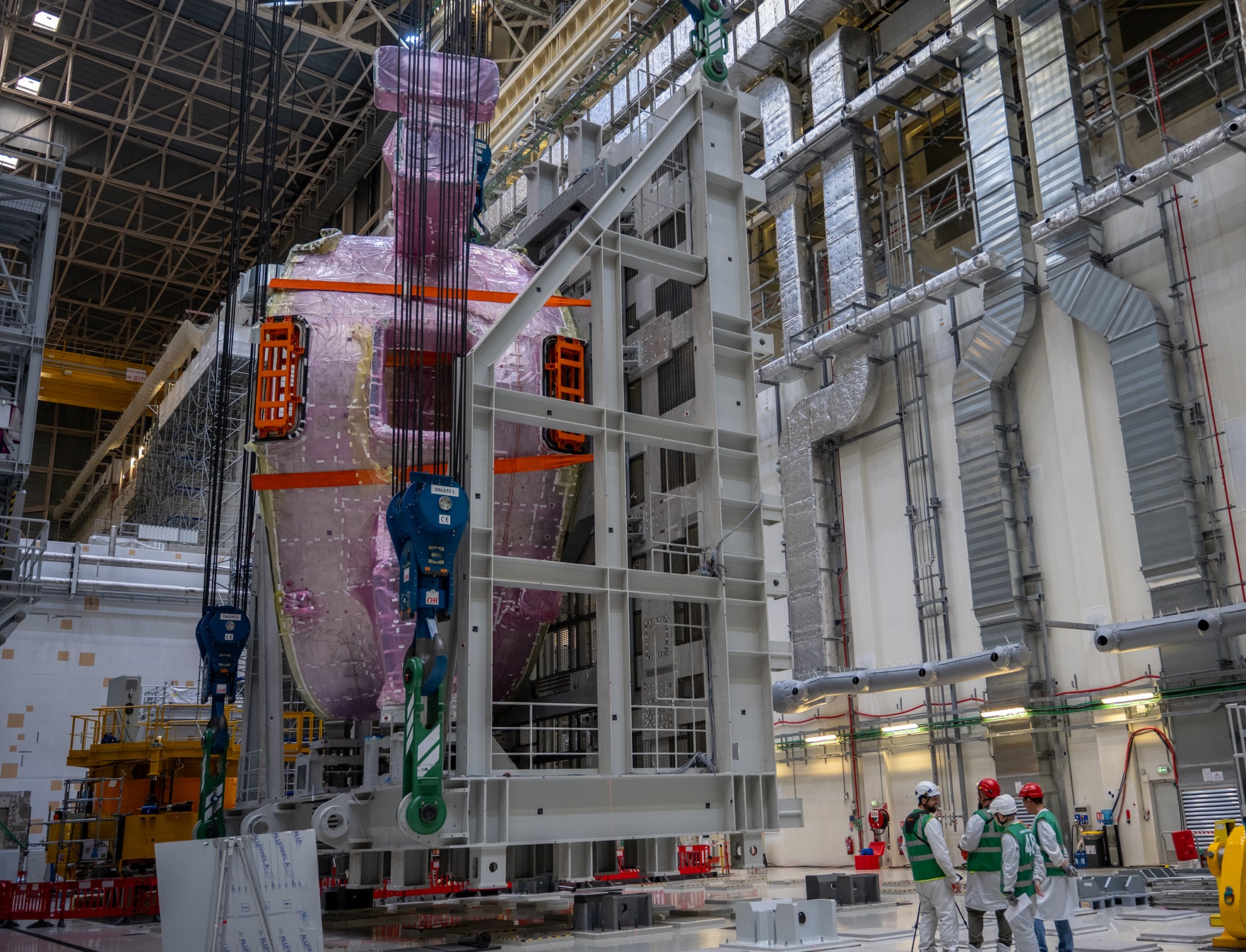
Vertical
2025-02-21 - Sector #8 is now in its vertical orientation, ready to be lifted out of the upending tool and transferred, temporarily, to the tokamak pit. It will be back soon, facing the opposite direction.


Starting the operation
2025-02-21 - The team in the Assembly hall prepares to upend vacuum vessel sector #8. "Upending" the sector means bringing it to vertical.

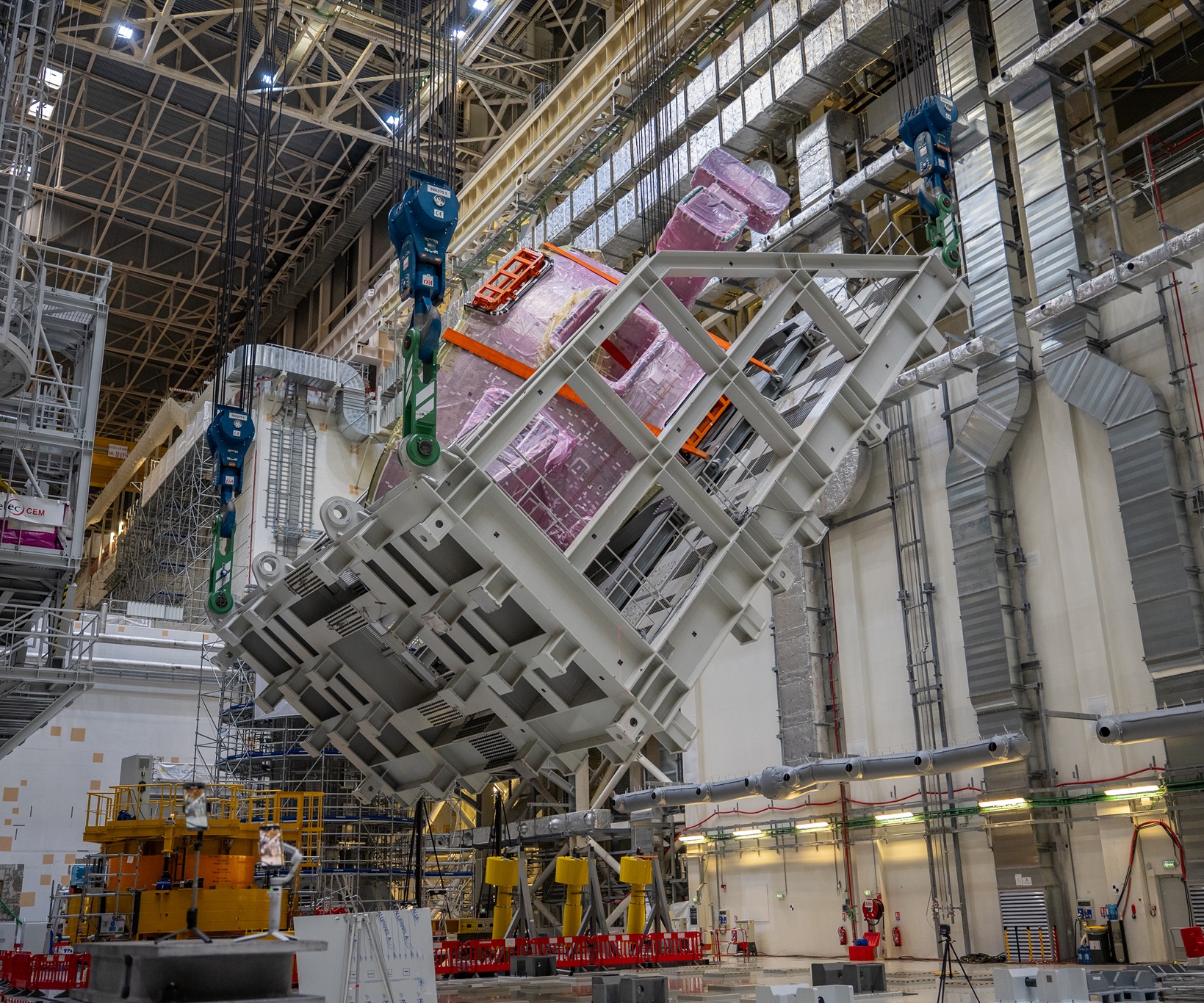
Pivoting
2025-02-21 - The upending tool is a 240-tonne steel frame that is designed to cradle components that are twice its weight. Vacuum vessel sector #8 and its transport frame weigh more that 440 tonnes.


A few metres
2025-02-21 - Thick cables connect the overhead bridge cranes to the four corners of the upending tool—the sturdy steel cradle that has been designed to raise some of ITER's heaviest components to vertical. Little by little, as the cables strain, the cradle leaves the ground with sector #8 lashed securely inside.

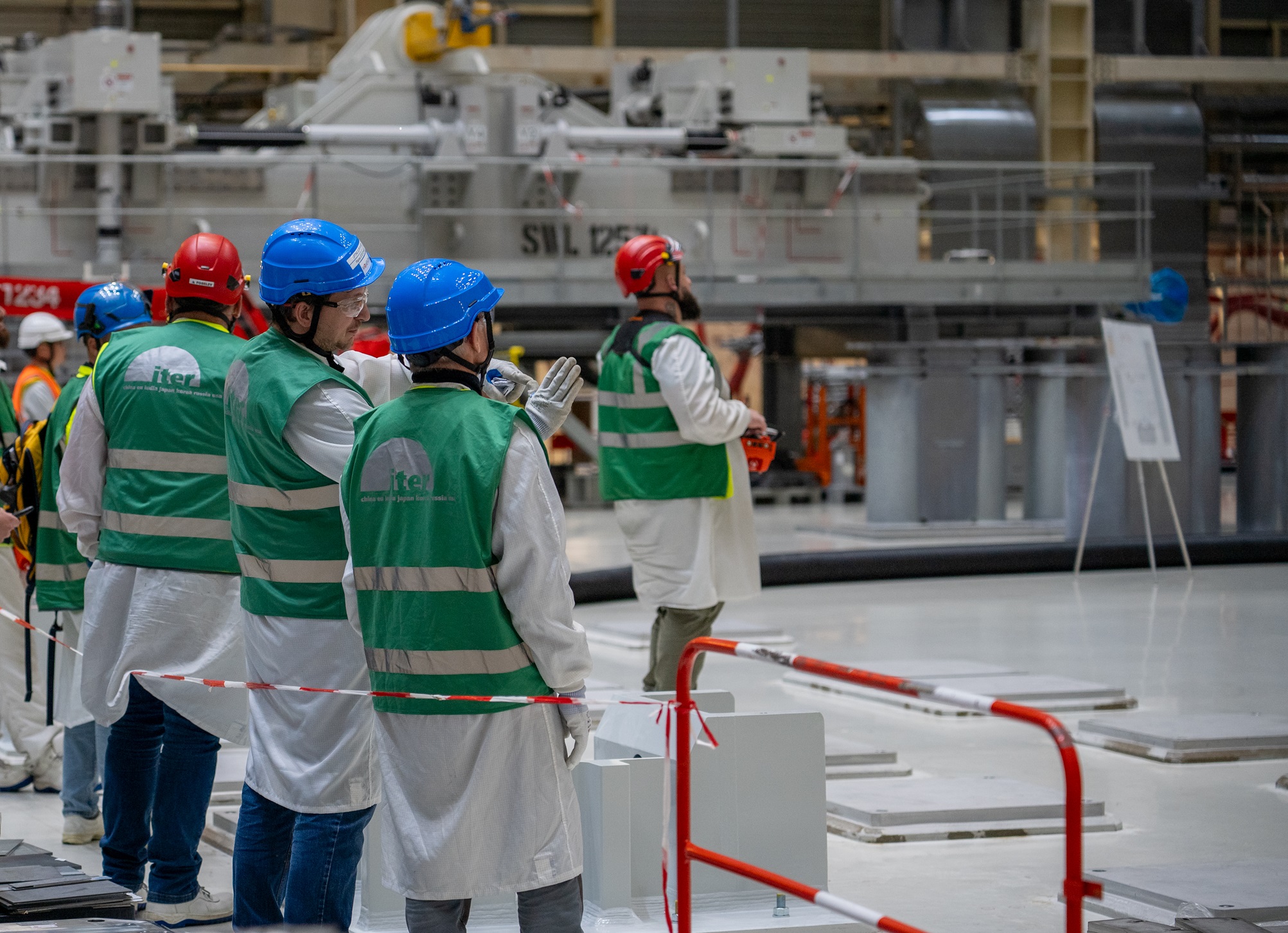
Driving the overhead cranes
2025-02-21 - The team watches as the operator manoeuvres the cranes by joystick. The carefully planned operation lasts about 1.5 hours.


To flip a sector...
2025-02-17 - Step 1 of flipping a 440-tonne vacuum vessel sector: place it horizontally, on its frame, inside of the upending tool.

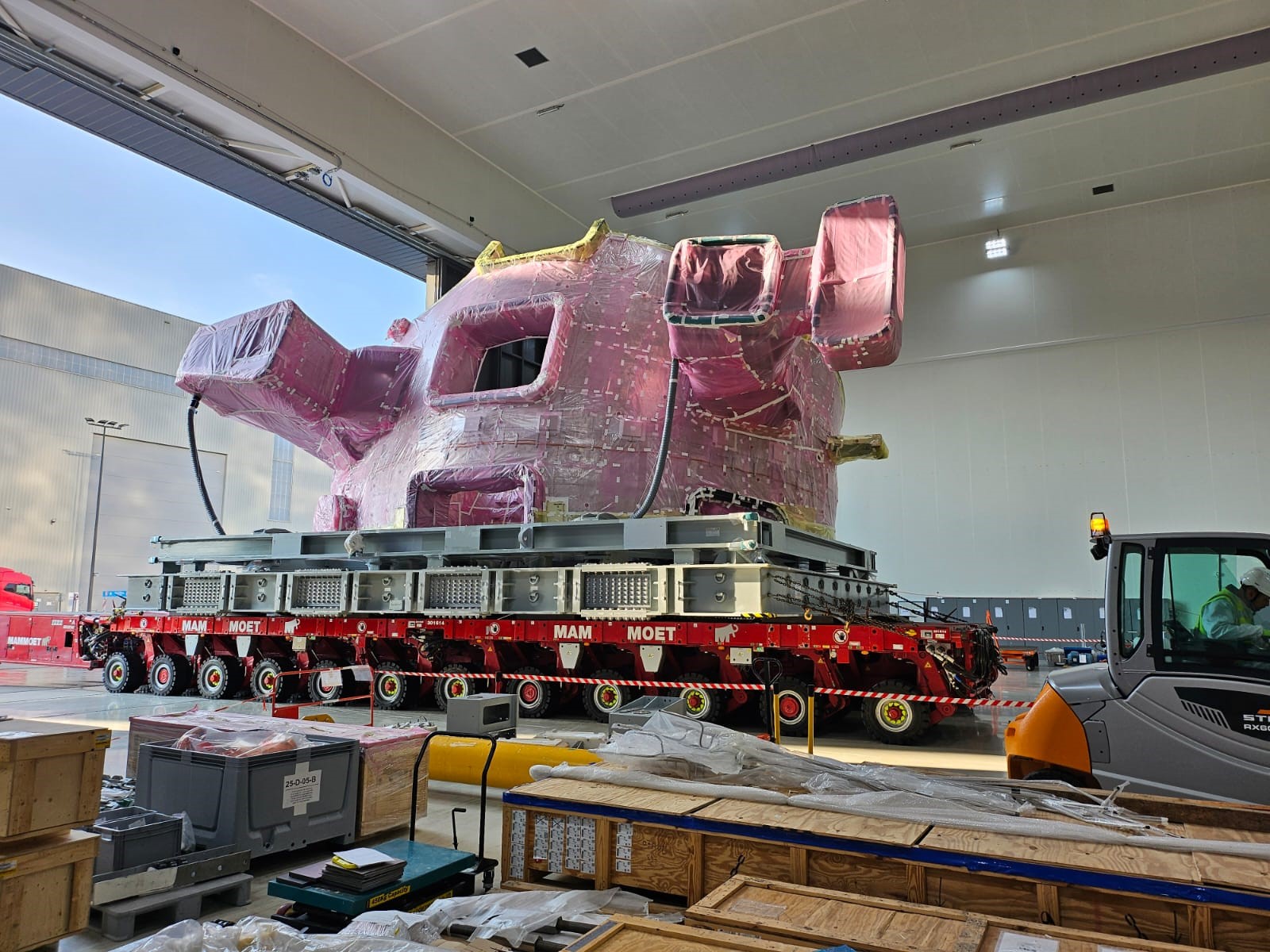
Sector 8 arrives for lifting and turning
2025-02-07 - Sector #8 arrives on its transport frame at the Cleaning Facility—an antechamber to the Assembly Hall. When it leaves again, its other side will be exposed.


Scientific Data and Computer Centre coming on line
2025-02-03 - Peter Kroul—from the IT System and Operation Section—is in the Scientific Data and Computer Centre, where ITER data will be stored, secured, processed and distributed throughout the lifetime of the machine. Data storage and management will begin in 2025 when the centre starts receiving data from various ITER plant systems.

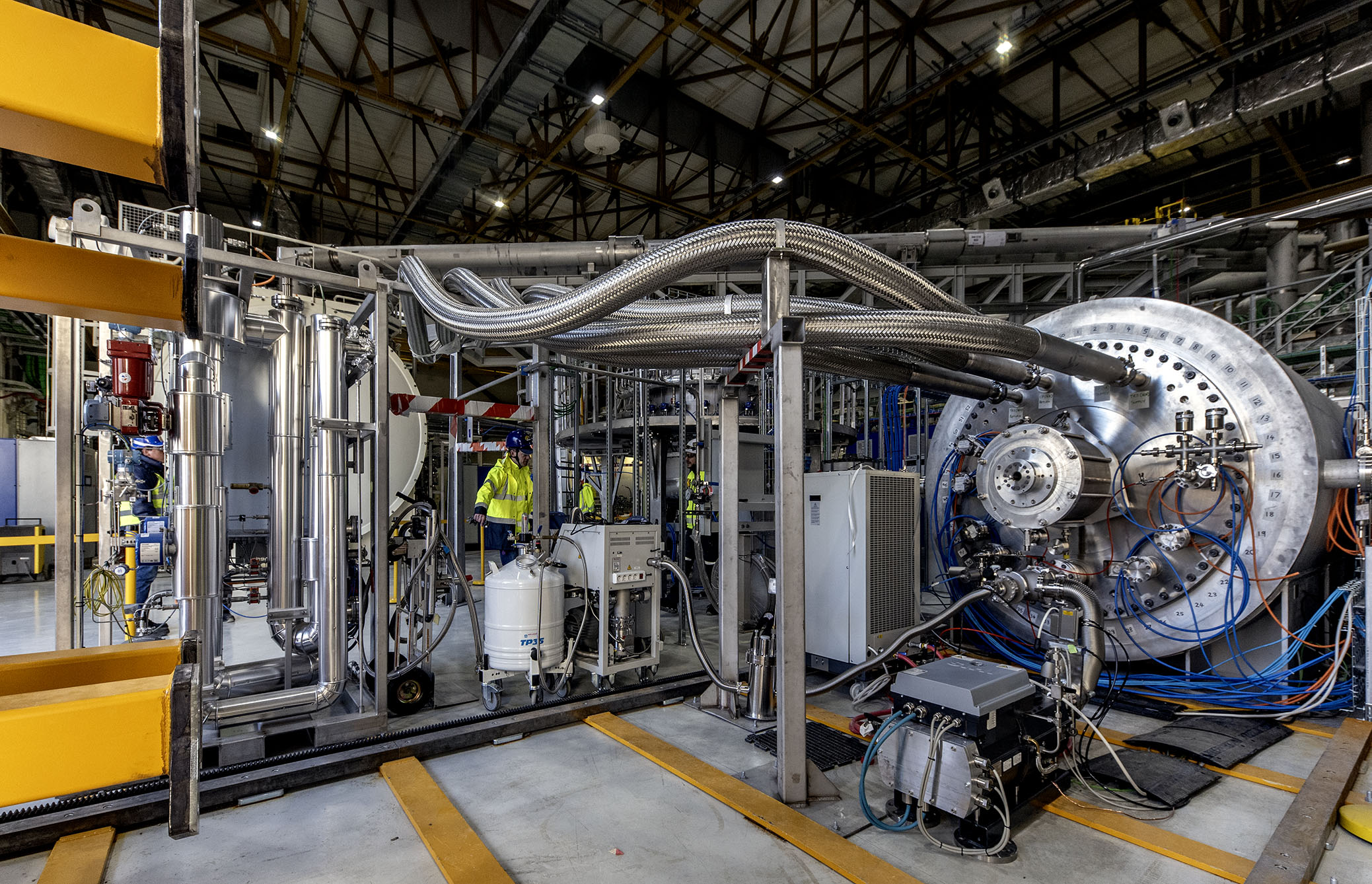
A test bench for cryopumps
2025-01-14 - Like all ITER components, the torus and cryostat cryopumps that will create the vacuum conditions needed for ITER operation are subjected to comprehensive factory acceptance tests before shipment. But because this is not sufficient to guarantee that they will perform as expected during actual tokamak operation, a test facility has been created to bring the cryopumps to cryogenic temperatures (4 K or minus 269 °C). Engineers will be able to test a whole range of cryopump processes in the new facility, which is located in the ITER cryoplant for convient access to cryogenic fluids.

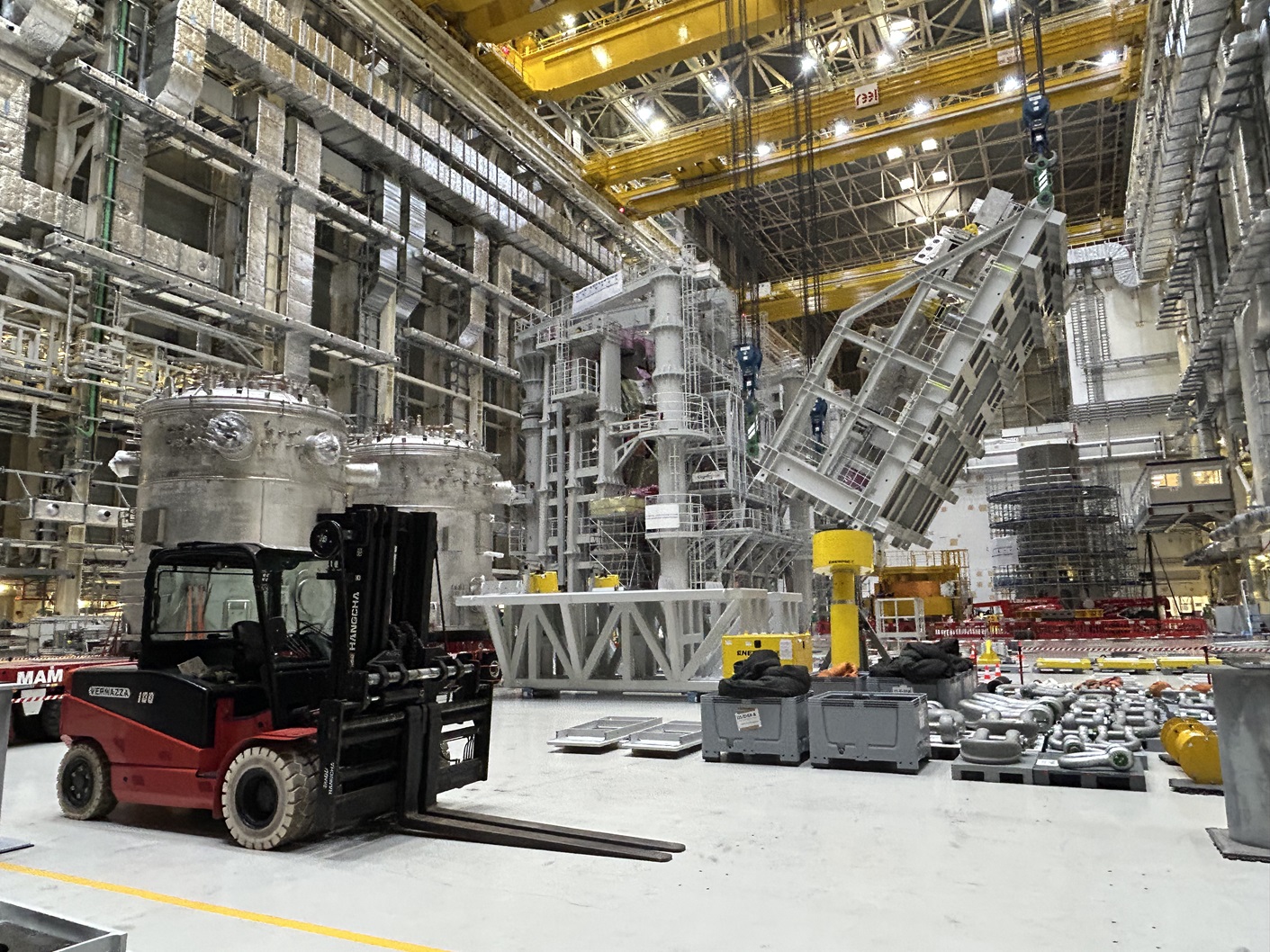
Upending 330 tonnes
2025-01-13 - ITER's bespoke upending tool is seen here in action as it pivots a 330-tonne toroidal field coil from horizontal to vertical. Once vertical, it will be lifted by the overhead cranes and brought to the tool hosting vacuum vessel sector 6, where it will be rotated toward the sector and attached.

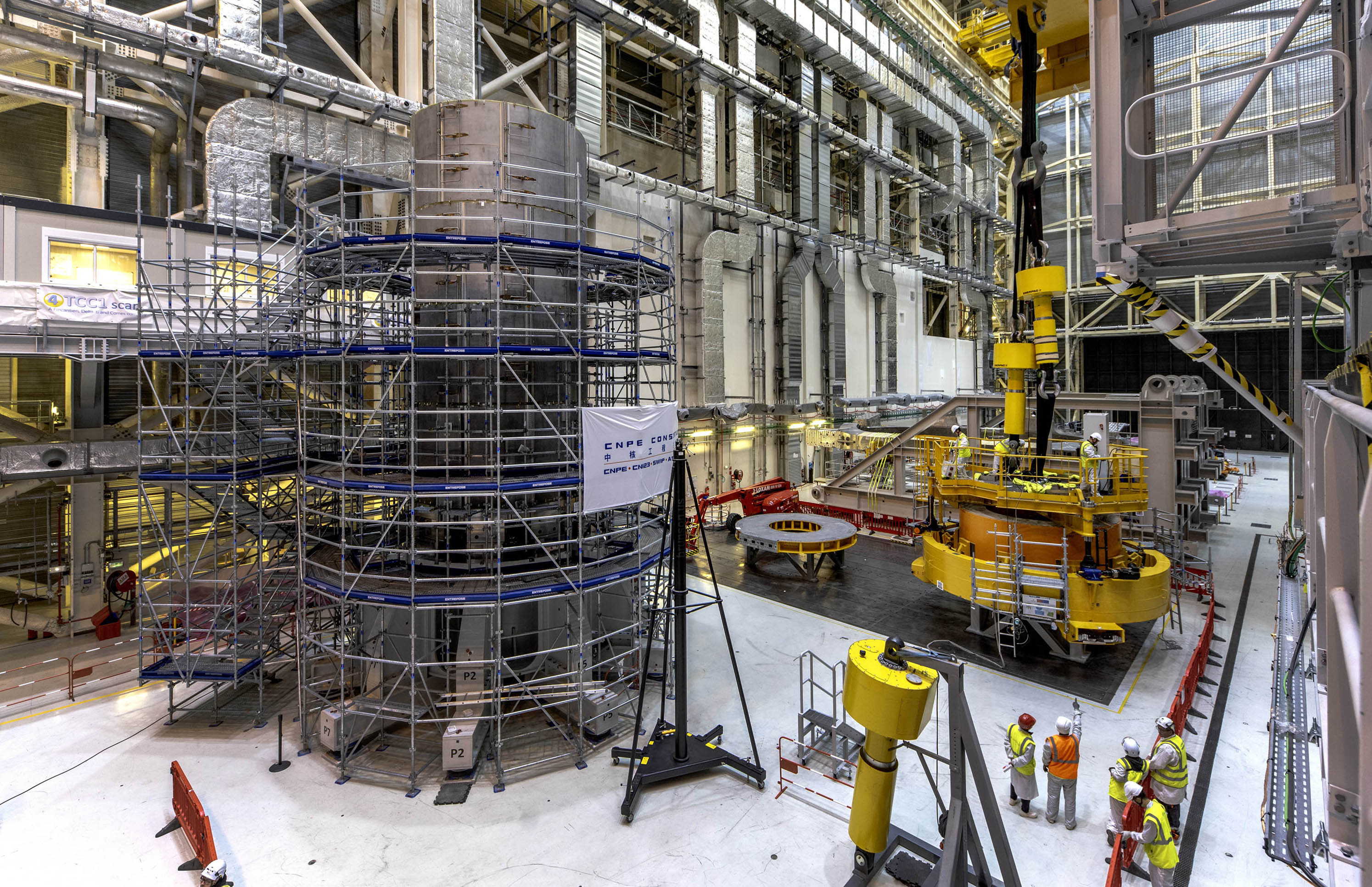
Central solenoid: only two more to go
2025-01-13 - With a fourth module now in place, the massive, tower-like superconducting magnet being assembled in the ITER Assembly Hall now reaches approximately two-thirds of its final height.


Sector sub-assembly progressing
2025-01-09 - A 330-tonne toroidal field coil is lying in a cradle tool that will be used to upend it to vertical; the rotation is carried out mid-air. Workers from the Chinese consortium CNPE can be seen in the tall tooling at left, where the sub-assembly of vacuum vessel sector #7 (a process by which the sector is assembled with its thermal shield and two toroidal field coils) is near completion.


Wings to close on sector 6
2025-01-09 - Suspended in tooling, vacuum vessel sector 6 awaits the attachment of a toroidal field coil on each of its sides. The magnet coils will be positioned in the wings of the tool and rotated inward.

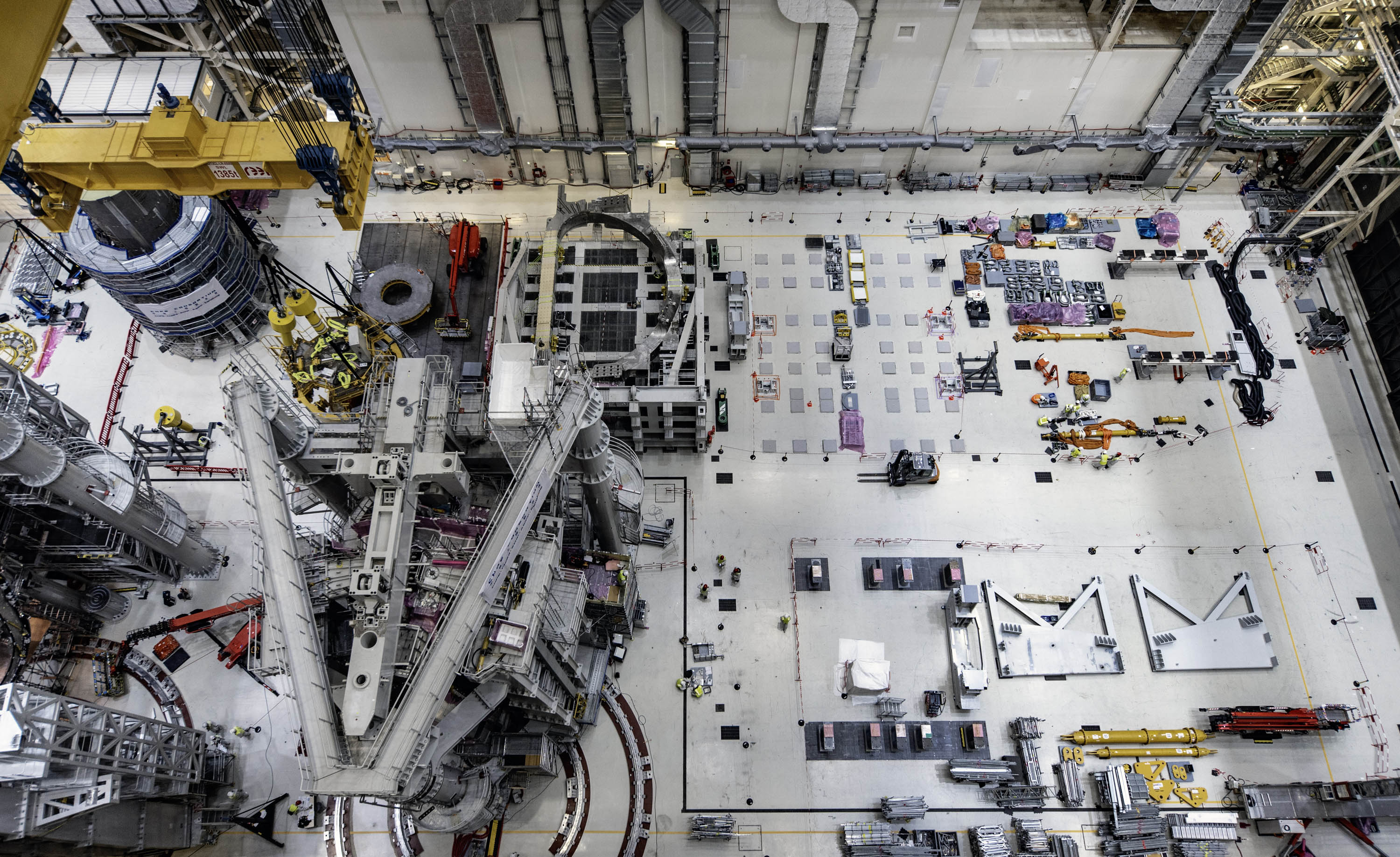
Second upending tool coming
2025-01-09 - On the floor of the Assembly Hall, a space has been prepared for a second upending tool; reception pads are clearly visible. Having two identical tools—one specializing in the handling of toroidal field coils and the newest in vacuum vessel sectors—the need for regular tool reconfiguration will be avoided, which could amount to weeks saved in the assembly schedule.

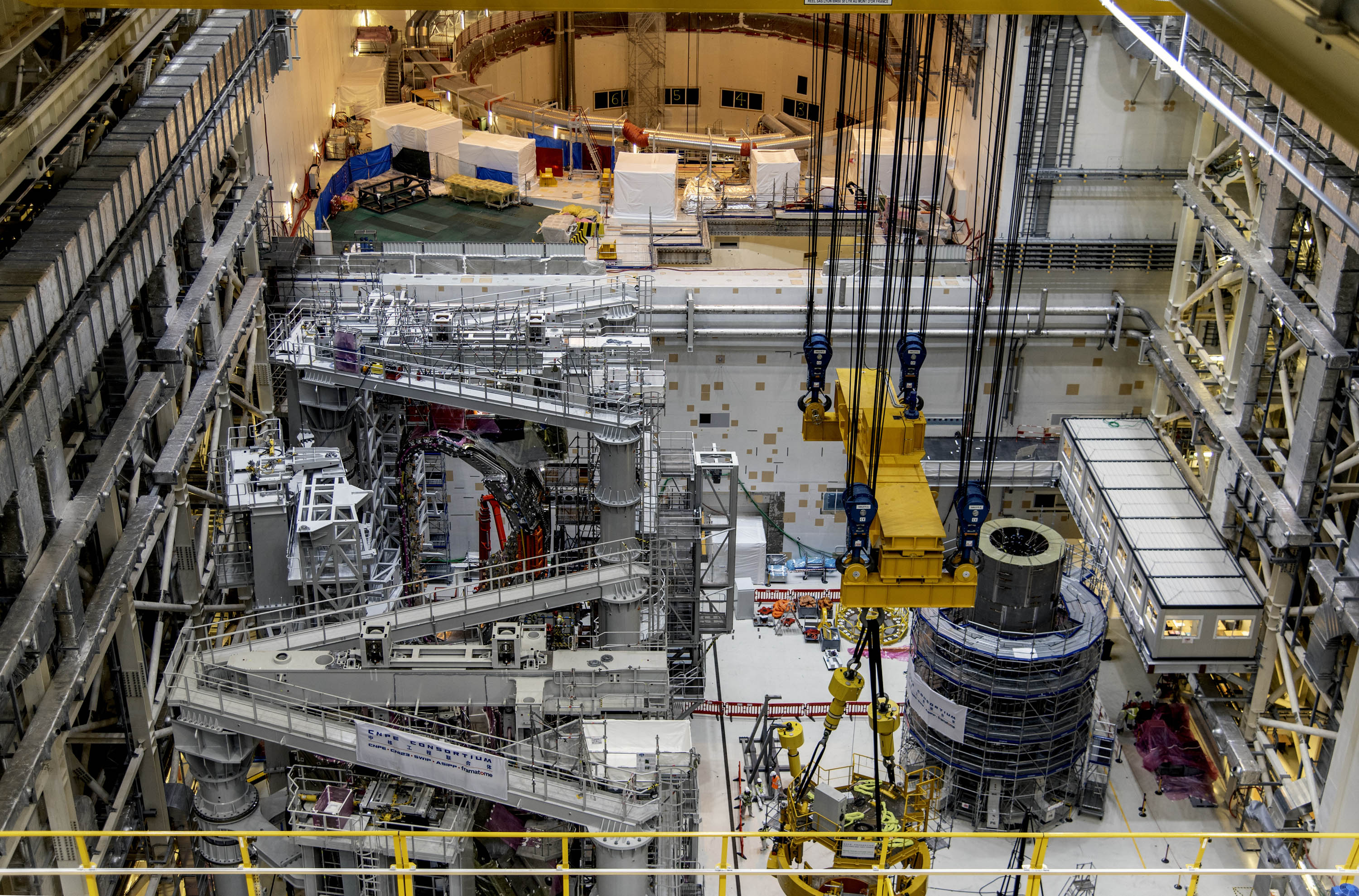
Assembly activities, from above
2025-01-09 - In this view from the rafters, we look down into the vacuum vessel sub-assembly tools, where two sectors are being assembled into modules (left). The tokamak pit is at the top of the image. To the right, a fourth central solenoid module has just been added to the growing stack.


Thermal jacketing
2025-01-09 - If you look closely, you'll see a thin layer of polished stainless steel thermal shield closely jacketing vacuum vessel sector 6. Installed between the vacuum vessel and the superconducting magnets, it will act to minimize heat loads transferred by thermal radiation and conduction from warm to cold components.







































































